

FULL-RANGE HYBRID SYSTEMS FOR YACHTS
THE FUTURE IS ELECTRIC
E-motion is the only supplier of standardized hybrid propulsion systems that fit into the existing engine room of all serial production yachts from 40-250 feet..

Innovation Award Winner
We are the proud winner of the nmma innovation awards designated by discover boating® miami international boat show®, nmma and bwi., come visit our booth.
and check out how you can electrify your vessel!

STAND PALAIS-116

OCT 30-NOV 3

MARCH 20-23
Advantages of our hybrid propulsion for yachts.
Significant savings on fuel consumption
Drastically reduce main engine and variable speed generators running hours
Savings on scheduled maintenance
Our hybrid yacht propulsion system is maintenance free. Only the dedicated water cooling pumps require service
Higher resale value of your vessel

Improved Quality of Life on Board

Reduce environmental exhaust and water pollution
Drastically reduce your vessels yearly CO2 emissions
Mooring and swimming in a bay without any gas emissions and noise
Silent and zero-emission departure from mooring and cruise in medium-range
Cabins are noise-free in Zero-Emission or Diesel-Electric Mode navigation
Fishing and trolling in Zero-Emission Mode

HYBRID YACHTS POWERED BY E-MOTION
The e-motion hybrid propulsion systems for yachts are supported worldwide for sales and after-sales services by:.

EXPLORE OUR PRESS PAGE
Stay up to date on all the latest news and events in the rapidly evolving world of hybrid and full electric yacht propulsion. as seen in:, boat , international.
As seen on Public Television | Viewpoint with Dennis Quaid
The Pioneers in Marine Propulsion: e-Motion Hybrid Systems
e-Motion stands out as the leader in hybrid propulsion technology. The parallel and serial hybrid options present a highly efficient solution for cutting fuel consumption and CO2 emissions while delivering unparalleled comfort through reduced onboard noise, vibration, and exhaust.

Parallel Hybrid with Integrated Electromagnetic Clutch + Serial Hybrid for Yachts/Vessels 40-250 ft

XQUISITE YACHTS - e-MOTION PARALLEL HYBRID- THE 60 SOLAR POWER

The e-Motion Parallel Hybrid - Full-Electric Navigation, Winner NMMA Award 2022

Parallel vs. Serial Hybrid for Yachts - What's the Difference?

e-Motion Hybrid Q&A

Wall Street - Interview Michele Maggi

HYBRID TYPES
The advantages, hybrid functionalities.

The world is going electric.
Interested in the electrification of your yacht download our brochure and get in touch today , “while there have been serial and parallel hybrid systems in boats for years, i have not seen any manufacturer implement a large system with such graceful integration and ease of use for the end-user.”, gary reich - judge of miami 2022 nmma awards.
- Expedition Yachts
- Expedition Catamarans
- Bering Marine
- Bering Fleet
Hybrid propulsion system
In recent years and decades, yachting technology has advanced at an incredible rate and there is no doubt that some of the most exciting developments have been around hybrid propulsion. With a growing desire to protect our world and oceans, the use of hybrid technology is an exciting solution to developing luxury yachts that have the lowest environmental footprint, along with many other appealing benefits.
As more and more hybrid yachts and concepts are coming to market – including the options available from Bering Yachts – hybrid-powered yachts are increasingly proving to be a popular choice for forward-thinking yacht owners. The subject of hybrid propulsion is a fascinating one, that could cover many pages, but here we summarize key points of note. For those interested in learning even more than we have addressed in the following article the expert Bering Yachts team is on hand to discuss in detail the possibilities that hybrid can offer, together with the pros and cons. Want to learn more about hybrid yachts? Continue reading below:
What is the history of hybrid propulsion?
Hybrid propulsion in yachting has its origins in the 20th century, with some iterations of its usage seen as far back as one hundred years ago. However, it is only in recent decades that the idea of “Green Yachting” has become better understood and more widely applied in a luxury yacht setting. It is also worth noting that this technology is still very much evolving, even now, with new and more efficient systems constantly being developed. Most particularly noteworthy advancements are around battery systems, their capacity, and capabilities.
Key projects in the evolutionary process of hybrid superyachts included 96-metre Limitless, launched by Lürssen in 1997. But, it was the launch of the 58-meter sailing yacht Ethereal from Royal Huisman in 2009 that really caught the attention of the yachting world. Hailed as the world’s first true hybrid superyacht, Ethereal was the brainchild of discerning owners who were determined to create an energy-efficient and environmentally responsible sailing yacht, drawing on all the available technology at the time to do so. The 2015 83.5-meter Savannah, which launched from Feadship in 2015 was another significant milestone, with a pioneering hybrid propulsion package installed. The yard reported that Savannah’s five-option propulsion system delivered significantly reduced emissions together with a 30% fuel saving when compared to similar non-hybrid vessels.
Today, more and more hybrid superyachts are being launched and offered, with hybrid yachts of note including the one-of-a-kind 142.81-metre Sailing Yacht A, 50-metre HOME and 50-metre Electra from Heesen, 43-metre Canova from Baltic Yachts and 80m Artefact from Nobiskrug.
But what exactly is hybrid propulsion technology?
Put simply, hybrid propulsion technology is the use of two (or more) different energy sources to power a yacht, with the traditional engine source being supplemented by another source. Most often this means the use of a combination of diesel and electric systems. These power sources can then either be used individually or in conjunction with each other depending on the system installed. Hybrid propulsion technology is applicable on both sail and motor yachts and is optimized to suit the vessel in question to deliver the best and most efficient results.
The Details
Traditionally yachts are powered by a combustion engine that is powered by fuel. By contrast, a fully electric propulsion system makes use of a battery-powered motor. A hybrid propulsion system will feature a variable combination of a combustion engine, generators, battery packs and electric motors, dependent on the system. There are two primary types of hybrid systems: serial and parallel. Key differences between these two systems are in the relationship between the propeller and the engine.
Serial Hybrid System: This is where the main power source is an electric motor that is supplied by batteries, with an engine-driven generator on board to charge the batteries. When charged the electric motor will power the yacht, with the combustion engine shutting down. In a serial system, the engine and driveshaft are not mechanically connected. Often there will be the option for charging to also be powered by solar power, wind power, or shore power.
Parallel Hybrid System: This more versatile set up offers multiple options for operations, allowing users to easily switch between propulsion modes (whether electric or combustion engine). Unlike the serial set up, in a parallel system, the engine and driveshaft are connected directly, with the electric motor working on the same driveshaft. With this system, the traditional engine set up remains for when long periods of operations are required. The electric system can then be used as needed, dependent on the setting/conditions/requirements, with both systems able to work in parallel.
Because it is not directly connected to the propeller shaft, a serial system’s generator/electric motor must be able to handle the highest propulsion levels that the boat can achieve and is subsequently more powerful than a parallel system. While a serial hybrid system delivers clear improvements in efficiency (versus a conventional system) when operating at higher/optimum speeds, this set up can also mean situations where efficiency benefits of the hybrid system are potentially reduced when being used in low-speed operations such as harbor maneuvering.
In contrast, the electric elements of a parallel system need not operate at such high propulsion levels. The standard engine can be used for higher levels, while the electric motor will usually be used for when low to moderate speeds are required. The traditional engine will usually put to use for higher speeds and/or when the batteries are depleted, meaning that the most efficient form of operations is instigated as needed.
Which system to use, and the power levels, ranges, and efficiencies that are possible will depend on a number of variables including the type and use of the yacht, and owner preference. Whatever the type of system in use, the end goal is to deliver the most efficient operations possible, making use of all systems and of available electrical energy.
What are the advantages of Hybrid Propulsion?
The primary benefits of hybrid propulsion include efficient power use, allowing fuel to last longer, and for a yacht to run itself with more self-sufficiency due to a reduced reliance on engine power alone. The use of hybrid propulsion can represent significant savings on operational costs when compared to equivalent non-hybrid yachts. The versatility of a hybrid system also allows captains to operate yachts in the best and most efficient way dependent on the setting and operation requirements
That said, other key benefits that are of direct interest to the luxury yachting sector include quieter operations, due to the options of placing the more compact power sources away from guest areas, and a reduction of vibrations. Hybrid propulsion technology is essentially silent mode for your yacht. Much of the technological developments around hybrid have been client-driven, with more owners now seeking to experience yachting in a lower-impact manner, while enjoying the best and most comfortable on-board experience. When the yacht is in ‘silent mode’ guests can enjoy their surroundings more without the background noise of engines, and also enjoy a quiet night of sleep that is undisturbed by operational noise.
What are the environmental benefits of hybrid propulsion?
There are many environmental benefits to the use of hybrid propulsion and all these benefits are in line with the style of expedition and exploration yachts being built by Bering Yachts. Using a hybrid system lowers the yacht’s fuel usage, reduces emissions, increases efficiency, and allows the yacht to go further for less. It means greener yachting – something that is more important than ever as the world becomes more aware of the impact of fossil fuels and pollution and of individual carbon footprints.
For those cruising in marine reserves and pristine waters, the knowledge that the impact of their yacht can be kept to a minimum is often another priceless benefit. ‘Silent mode’ also delivers on an experiential front – there is something very special about enjoying a deserted anchorage without any disturbance. Equally, when in port the ability to not run off full engine power is extremely appealing.
With more and more destinations on the planet becoming protected zones, where diesel-powered vessels are not allowed to visit in order to protect these precious sites, the ability to cruise under electric power is certain to become increasingly appealing. From coral reefs to nature reefs, there are rising numbers of cruising grounds where soon only yachts with electric propulsion will be able to gain entry. For those owners who wish to see the world without restraint, this is an extremely important consideration when considering whether to invest in electric propulsion.
672 Wine Club
- Motorcycles
- Car of the Month
- Destinations
- Men’s Fashion
- Watch Collector
- Art & Collectibles
- Vacation Homes
- Celebrity Homes
- New Construction
- Home Design
- Electronics
- Fine Dining
- Aston Martin
- Dubai Tourism
- Gateway Bronco
- On Location – Olympic Games Paris 2024
- One&Only
- The Ritz-Carlton, Kapalua
- Royal Salute
- St. Regis Costa Mujeres Resort
- Sports & Leisure
- Health & Wellness
- Best of the Best
- The Ultimate Gift Guide
This Epic 350-Foot Hybrid Sailing-Yacht Concept Generates Its Own Electricity While Cruising
Juno is also capable of hitting 23 knots under sail alone., rachel cormack.
Digital Editor
Rachel Cormack's Most Recent Stories
- You Can Now Get a Massage From a Robot at This Luxe N.Y.C. Hotel
A Yacht That Hosted John F. Kennedy, Richard M. Nixon, and 3 Other Presidents Is Up for Charter
- The Stegosaurus Skeleton ‘Apex’ Just Sold for a Record $45 Million at Auction
- Share This Article

In Roman mythology, Juno was queen of the gods. In the marine industry, she’s a sailing-yacht concept hoping to be queen of the high seas.
Related Stories
- This Pristine 1960 Ferrari 250 Spider Could Fetch $18 Million at Auction
- First Drive: The Lotus Emeya Targets Porsche, Mercedes, and Lucid With Its 905 HP Performance
In addition, Juno’s Falcon Rig ensures maximum efficiency with minimal effort. Unlike a conventional rig that requires a full crew, this nifty sailing system can be operated singlehandedly. On top of that, Juno’s advanced hybrid-propulsion system includes propellers that actually generate electricity while the vessel’s sailing.

“This is a future-proof statement yacht, for a customer who is not afraid to do something different,” the studio said in a statement. “It defies sailing convention but not the sailing experience.”
Onboard, meanwhile, eight generous guest cabins are spread across four decks. There is also one “intimate deck” reserved for the owner, which is centered around a full-beam owner’s suite. On the main deck, the sprawling main salon leads outdoors to a beach bar and a 26-foot swimming pool aft.
At the stern, the open transom and expandable swim platform connect to a beach club with shell doors that open on each side. You’ll also find a gym, a sauna and a cinema nearby. As for toys, Juno can store a limousine and sports tender measuring 33 feet, respectively. The yacht is also fitted with a tender platform amidship that provides direct access to the main deck lobby.
Queen of the seas, indeed.
Rachel Cormack is a digital editor at Robb Report. She cut her teeth writing for HuffPost, Concrete Playground, and several other online publications in Australia, before moving to New York at the…
Read More On:
- Sailing Yacht
More Marine

This New 94-Foot Foiling Catamaran Can Fly Across the Seas at Over 50 Knots

This New 170-Foot Sailing Yacht Has a Jacuzzi Hidden Beneath Its Mast

Maserati’s First Electric Boat Delivers Style and Fun on the Water—We Took It for a Spin

Meet the Wine Club That Thinks Differently.
Receive editor-curated reds from boutique California producers four times a year.
Give the Gift of Luxury
Latest Galleries in Marine

‘Honey Fitz’ in Photos

‘Reposado’ in Photos
More from our brands, london loses its crown as king of clubs as rich flee to milan , leyland, beltré, mauer, helton inducted into baseball hall, venice critics’ week: vietnam voodoo film ‘don’t cry butterfly’ reveals first look (exclusive), tamara kostianovsky sculpts a fleshy, wounded natural world, the best yoga mats for any practice, according to instructors.

SW108 HYBRID
The new SW108 HYBRID is the first in the new era of “Smart Custom” sailing yachts: the ultimate balance between customization, innovation, reliability, sustainability and efficiency. Penned by Nauta Design and Farr Yacht Design , the SW108 is a new project that enriches our offering of high performance sailing yachts.
The SW108 is the first Southern Wind project to be conceived and engineered as hybrid from its origin and will open the world of green performance sailing.

SW108#01 HYBRID >
The first SW108 HYBRID Gelliceaux is a proper smart custom hybrid sailboat, representing a turning point in Southern Wind’s offering of luxury, high performance Superyachts.

SW108#02 Under construction >
Southern Wind is proud to announce that the new SW108#02 is now under construction.
Main Specifications
Project description, versatility.
The SW108 Hybrid is based on a versatile design platform that can be adapted to suit her owner’s expectations and intended usage. Following the Smart Custom philosophy, the initial platform has been created so that Owners can adapt certain features to their objective while leaving the reliable and tested base structure untouched. Following on the success of the SW105 mini-series, the SW108 is available in different keel configurations (see lifting, telescopic or fixed), sail plans, deck configurations (Raised saloon, Deck Saloon or GT) and different interior styles and layouts giving each yacht its own unique personality.

SAILING EXHILARATION
The SW108 is the next in the line of Southern Wind designs by Farr Yacht Design, known for their exceptional handling, precise balance and ready performance. The yacht offers the ease of handling and responsiveness of the helm that are hallmarks of Southern Wind Shipyard yachts. With accurate placement of rig and appendages and precise longitudinal distribution of volume in the topsides, the hull feautures full waterlines and straight end diagonals, a wide, low transom and full forward sections.

SUSTAINABILITY
Energy efficient and environmentally conscious, the SW108 Diesel Electric Hybrid propulsion system is designed in collaboration with BAE Systems, a global company that designs and manufactures technology leading solutions. Their patented HybriGen® system is engineered to be compliant with the world’s most stringent environmental rules, with zero emissions capability and a hydro generation mode to recharge the lithium-ion energy storage when under sail. The BAE Systems next-generation hardware provides the highest efficiency, ensuring the vessel owner enjoys noise free zero emissions operations for longer periods. The SWS diesel electric system is based on a combination of two highly efficient generators with a high-voltage lithium battery bank and electric propulsion motor. This system allows for a more efficient consumption of fossil fuels while achieving a lower level of harmful emissions.

INNOVATIVE deck DESIGN
As in the Smart Custom philosophy, the deck and interior design can be fully customised. A new variation of the Gran Turismo deck configuration has been concevied for the SW108 Hybrid. This new deck design is fresh but immediately recognizable for its clean, sober geometries that decline all the touchstones of the GT look in a new composition. SW108 Hybrid new opening transom concept, reveals a tender garage with space for a 5m (16’3”) dinghy. The optional magic transom converts the after sections of the yacht into beach club, offing a unique experience on the sea.

INterior comfort
The interior layout can be fully customised, while respecting the position of the tecnical rooms, to offer the maximum comfort and privacy to guests and crew. Both the owner’s cabin forward and aft configurations, feature three guest cabins amidship. This four guest cabin arrangement allows for a spacious and enjoyable L-shaped social area forward of the saloon that includes living and dining areas and a TV lounge. All guest cabins can be conceived as multifunctional to be used as an onboard studio with day head, a gym/sauna or converted into a regular cabin.

Enquire About a New Yacht
For more information, fill out the form below:
- Privacy Policy
- Cookie Policy
Contact Us

Hunter H-36 “Hybrid” powered by Elco

For repowering applications, all of Elco’s electric motors fit easily onto existing diesel motor mounts. The Elco system includes an easy-to-use full-color display panel option that reports to the helmsmen shaft RPMs, duration in real time hours and minutes remaining, current amp/hour consumption, battery charging status and motor diagnostics.
According to Steve Lamando, CEO of Elco, “Hunter is a well known brand with a global reputation for customer-driven innovation. The Hunter team’s input into the development and integration of the E Power system has been invaluable. Also, Hunter’s manufacturing facility in Florida is close to many renewable energy firms serving the marine industry such as SALT (Sea, Air and Land Technology)”.
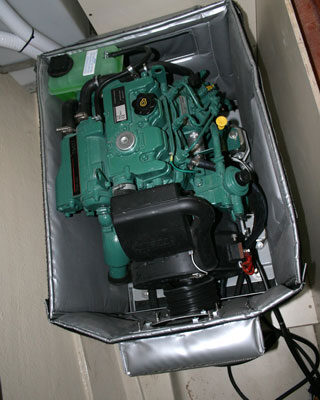
- Cars, Jets & Yachts
The Best Hybrid Superyachts in the World
These eco-conscious vessels offer all the luxury of your typical superyacht.
By Emma Al-Mousawi

Hybrid power is seen as one of the most exciting innovations in the yachting world, with more superyacht owners demanding their vessels leave a smaller carbon footprint.
It is somewhat disputed quite how long hybrid superyachts have been around. Some would argue that Royal Huisman’s Etheral was the first superyacht to pioneer the use of hybrid technology when she launched in 2008. Others would say that hybrid power in fact arrived seven years later in the form of Feadships’s Savannah, featured below.
What can be agreed is that the hybrid superyacht is here to stay, and since both Etheral and Savannah hit the water, numerous luxury shipbuilders have followed suit. But what actually is a hybrid superyacht? Bjorn Moonen of Ghost Yachts offers a straightforward explanation in Superyacht News. He said: “A hybrid yacht is basically a yacht that can be propelled by two different energy sources. Most commonly these are a combination of diesel and electric propulsion systems”. As in cars, this system is infinitely greener thanks to the reduction in fossil fuel usage.
As well as hybrid power, these forward-thinking owners and their engineering teams often incorporate the very latest green technology into their designs – such as solar power and wastewater recycling system – limiting their impact that one step further. At Elite Traveler we have shortlisted some of the very best hybrid superyachts on the water today.
[See also: Meet the Elite Traveler Eco Superyacht by Heesen]
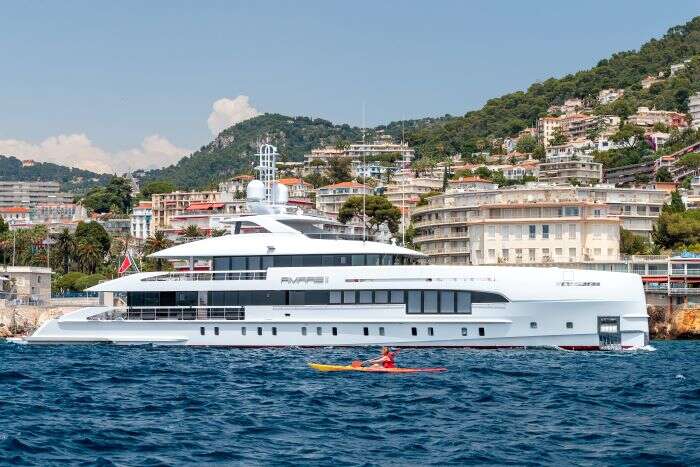
Amare II can can reach speeds of 17.2 knots / ©Dick Holthuis
Builder: Heesen Year of build: 2020 LOA: 164ft Number of guests: 12 Number of crew: 9

These Yacht Charters Offer Prime Access to Remarkable Places

These are the 7 Yacht Interior Designers to Know
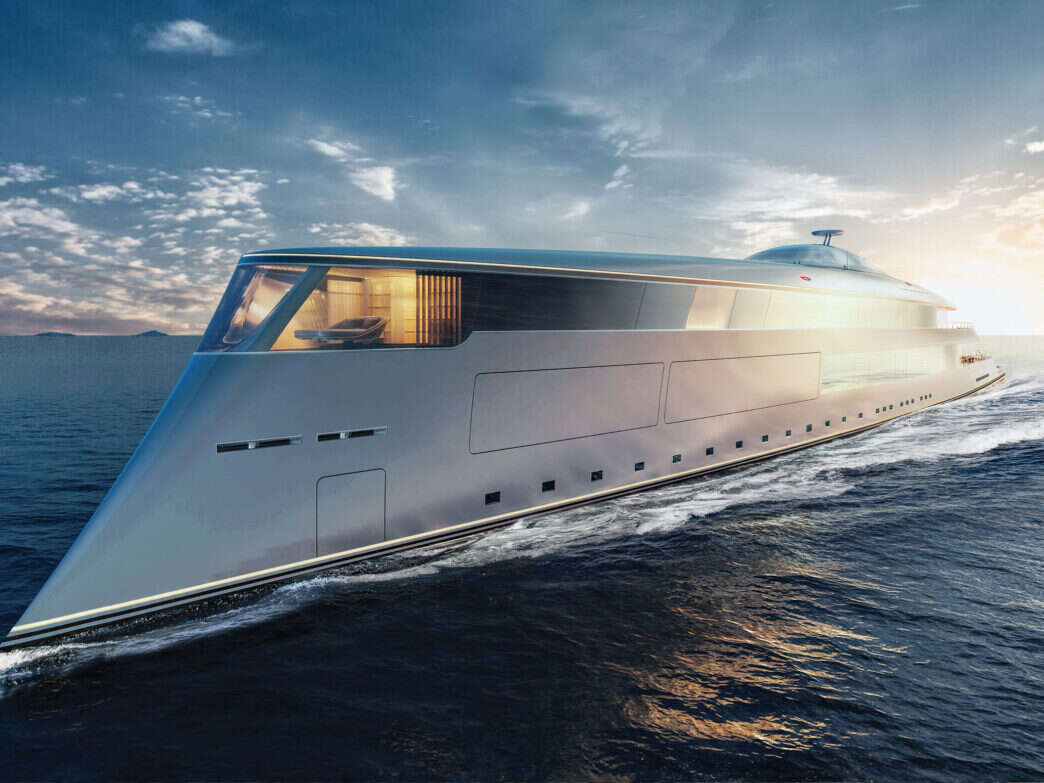
The Ultimate Guide to Hydrogen-powered Yachts
Delivered in June 2020, Amare II is one of the newest hybrid superyachts to hit the water. Custom built by Dutch shipyard Heesen, her sea trials were completed during the height of lockdown which Heesen described as “challenging” but her delivery date was kept on track so she could enjoy her first summer cruising the Mediterranean in 2020.
Thanks to her lightweight aluminum Fast Displacement Hull, which was devised by naval architects Van Oossanen and engineered by Heesen’s in-house team of experts , she offers the luxury of silent cruising coupled with frugal fuel consumption. In diesel mode, Amare II can reach speeds of 17.2 knots while in silent mode she can travel at 10.2 knots.
[See also: Twenty for 20: Innovative Yachts of the 21st Century]
Content from our partners

Nightcap: Enjoy Live Music All Summer at Nemacolin Resort
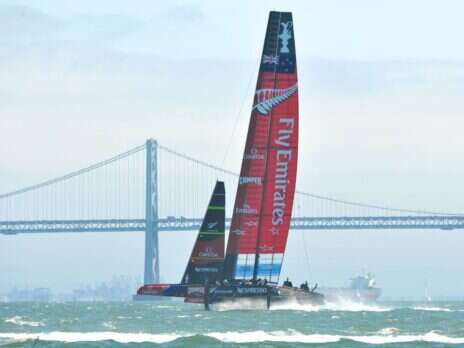
How to Enjoy America’s Cup 2024 in Barcelona

From Mexico to Manhattan: Clase Azul’s Latest Tequila Captures NYC
Her sleek exterior lines are courtesy of Omega architects who also penned Heesen’s first hybrid superyacht Home. Her interiors are yet to be seen publicly but are said to feature soft pastel tones by Monégasque studio Sabrina Monte-Carlo and fine furnishings by the Italian designer Cristiano Gatto.

Artefact set sail on her maiden voyage in 2020 / ©Francisco Martinez
Builder: Nobiskrug Year of build: 2020 LOA: 262.5ft Number of guests: 12 Number of crew: 24
This hi-tech head-turner built by German shipyard Nobiskrug also took her maiden voyage in 2020. Nobiskrug states that the goal in her design and build was to demonstrate that “ beautiful man-made objects can complement and celebrate the natural environment with minimal impact.” Have her builders and designers achieved what they set out to?
The facts speak for themselves. Artefact has some of the lowest emissions of any superyacht and is one of the only ones to meet the International Maritime Organization’s Tier III emissions regulations. Utilizing the very latest green technology she features solar panels and a battery storage system that enable the vessel to reduce the use of its combustible engines, as well as a wastewater recycling system and a silent hybrid propulsion system that can hold position without dropping anchor to protect the sensitive seafloor.
It’s not just Artefact’s green credentials that are changing the game but also her avant-garde exterior design by naval architect Gregory C Marshall. Her multilevel glass wall and quirky curved windows are like nothing ever before her.
Black Pearl
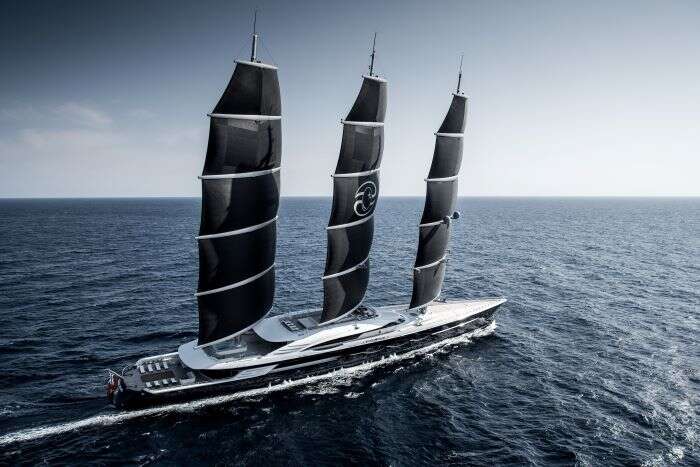
Oceanco say that Black Pearl capable of crossing the Atlantic without using any fuel / ©Tom Van Oossanen
Builder: Oceanco Year of build: 2018 LOA: 350ft Number of guests: 12 Number of crew: unknown
Oceanco’s Black Pearl is the world’s largest sailing yacht ( Sailing Yacht A below is larger but is a sail-assisted yacht) and is estimated to have cost in excess of $200m. The distinct vessel has achieved worldwide fame in the yachting world thanks to her innovative design and eco-credentials which have set a new industry standard.
Capable of crossing the Atlantic without using any fuel, Black Pearl is powered by a hybrid propulsion system that Oceanco designed in collaboration with consultancy BMT Nigel Gee. Of course, her other power source comes in the form of her towering 230ft DynaRig carbon masts which were designed by Dykstra Naval Architects and house 31,215 sq ft of sales. Harnessing wind propulsion couldn’t be easier as her sales can be set at the touch of a button in just seven minutes allowing for a much greener mode of travel than your average motor yacht.
Black Pearl’s interiors remain somewhat of a mystery but according to the Italian design studio Nuvolari Lenard who were responsible, the design embraces Louis XVI style (imagine elaborate wood carvings, opulent fabrics and gold touches) as well as some art deco influences.
[See also: Step Inside the Black Pearl Yacht]
Bravo Eugenia
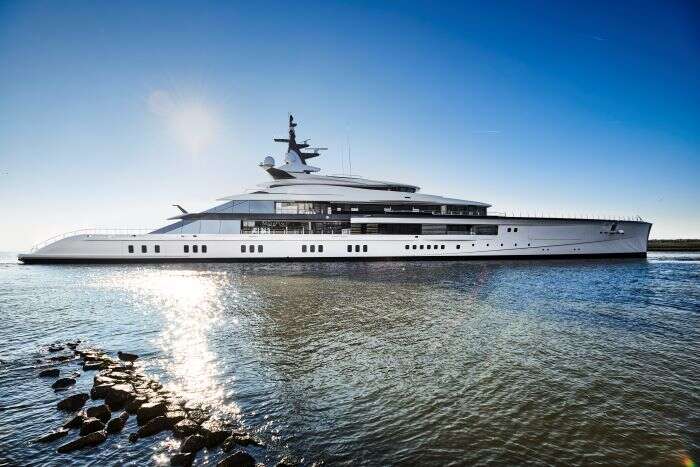
Bravo Eugenia uses around 30% less fuel consumption than her competitors / ©Francisco Martinez
Builder: Oceanco Year of build: 2018 LOA: 357ft Number of guests: 14 Number of crew: 30
Dallas Cowboys owner Jerry Jones’ Bravo Eugenia superyacht was the first Oceanco vessel to utilize an innovative LIFE design approach which was created with the input of Lateral Naval Architects. LIFE, which stands for lengthened, innovative, fuel-efficient and eco-friendly, harnesses intelligent naval architecture with these four principles in mind to achieve a harmonious balance between weight, power, technology and luxury living space.
By boosting Bravo Eugenia’s waterline length, engineers were able to reduce the overall need for propulsion power and could therefore install smaller engines. In fact, while most similar-sized superyachts would demand a two-level engine room, Bravo Eugenia ’s occupies just one, freeing up over 1,000 sq ft of living space (or more rooms for the vessel’s toy and tender collection).
The team also refined her hybrid propulsion system to give significantly better fuel efficiency – around 30% less fuel consumption than her competitors.
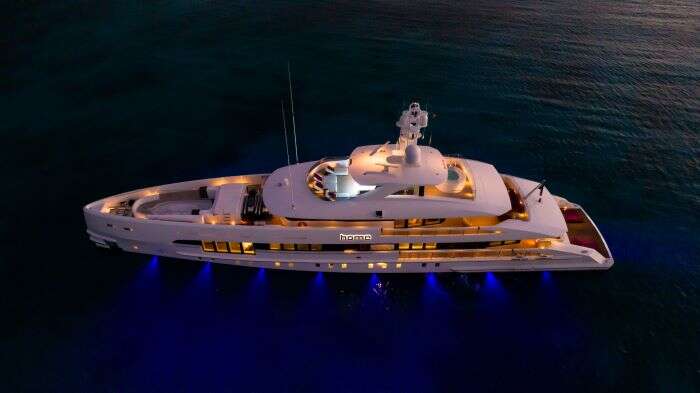
Home is Heesen’s first hybrid propulsion yacht / ©Jeff Brown
Builder: Heesen Year of build: 2017 LOA: 163.3ft Number of guests: 12 Number of crew: 9
Heesen’s first hybrid superyacht was also the first to benefit from Van Oossanen Naval Architects’ li ghtweight aluminum Fast Displacement Hull. Her innovative eco-credentials and cutting-edge design caused quite the stir in the industry; so much so that Home scooped three awards at the prestigious Monaco Yacht Show in 2017 as well as a World Super Award and a Boat International Design Award in 2018.
Able to seamlessly shift between her diesel engine to electric, Home offers a more efficient voyage with reduced vibration and noise making for a more comfortable cruise.
Available to charter from Burgess from $245,000 per week , Home’s Cristiano-Gatto-designed interiors are the epitome of relaxed luxury. The outdoors is invited in through floor-to-ceiling glass windows which flood her beach-club-style VIP cabin and living areas with natural light.
Sailing Yacht A
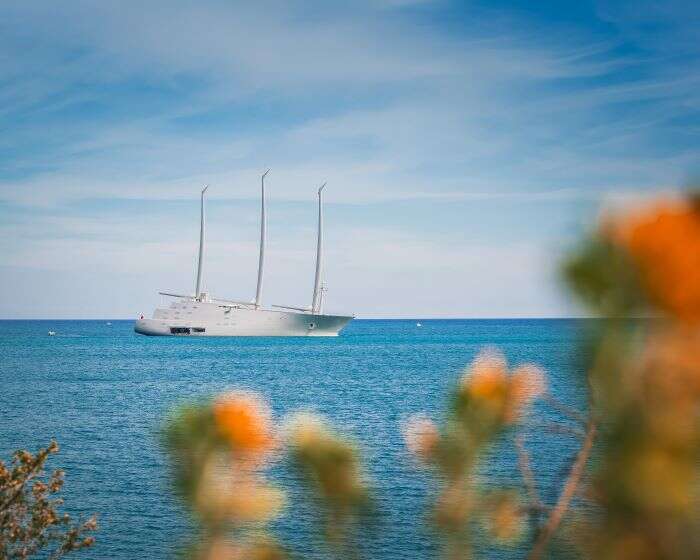
Sailing Yacht A’s exterior and interior were designed by Philippe Starck / ©I.Puiatti
Builder: Nobiskrug Year of build: 2017 LOA: 468.5ft Number of guests: 14 Number of crew: 35
At an enormous 468.5ft, Sailing Yacht A is the largest sail-assisted yacht in the world. Her lustrous futuristic exterior perfectly complements the forward-thinking engineering that powers this groundbreaking vessel. Sporting a hybrid diesel-electric propulsion system and advanced navigation technology Sailing Yacht A is reported to have cost in excess of $400 million.
Her mainmast towers designed by Dykstra Naval Architects – responsible for Black Pearls’ and The Maltese Falcon’s masts – are the largest carbon masts in the world and stand 328ft above the waterline, taller than London’s Big Ben.
The striking hybrid superyacht’s interior and exterior were designed by the renowned Phillippe Starck and feature near-invisible windows enabling her streamlined appearance. This eight-deck superyacht is said to host a plethora of incredible amenities including a glass observation pod, a helipad, huge swimming pool and a submarine.

Savannah was built by Dutch shipyard Feadship/ ©Feadship
Builder: Feadship Year of build: 2015 LOA: 273.1 ft Number of guests: 12 Number of crew: 26
The multi-award-winning Savannah is widely regarded as the world’s first hybrid superyacht. Combining a single diesel engine with a pioneering electro-mechanical propulsion platform and streamlined hull, she is a true innovator.
Built by Dutch shipyard Feadship, both her metallic exterior and sophisticated interior were designed by Paris-based Cristina Gherardi Design. The main aft deck has the effect of almost emerging from the water’s edge, with steps and platforms leading to a spacious beach club and living area. An outdoor 33ft pool, underwater lounge and a library are just some of the amenities that can be enjoyed onboard by those who wish to charter her, with a week-long charter costing approximately $1.2 million.
[See also: Style and Sustainability: The New Sunreed 80 Eco Catamaran]

Emma Al-Mousawi
Latest in luxury, the explorer.
Thank you for subscribing to Elite Traveler.
- THE PRINCESS PASSPORT
- Email Newsletter
- Yacht Walkthroughs
- Destinations
- Electronics
- Boating Safety

Rossinavi Launches 140′ Hybrid-Electric Catamaran
- By Caleb Revill
- May 30, 2024
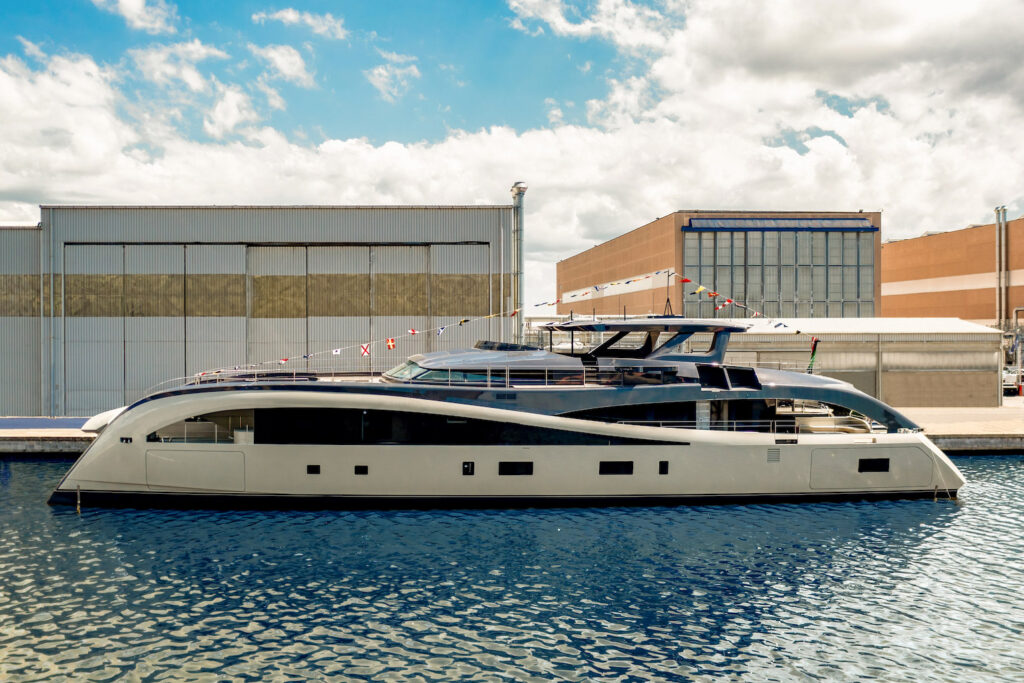
Italian yacht builder Rossinavi announced the launch of the M/Y Seawolf X , a hybrid-electric power catamaran capable of cruising in full electric mode for 100 percent of the time on one-day trips.
In a press release from the company, Rossinavi announced the innovative yacht carries the BluE label designating the shipyard’s new sustainable philosophy. Seawolf X has a 140-foot length overall, 45-foot beam and is an all-aluminum vessel that combines sleek design with environmentally friendly solutions.
The press release notes that the catamaran can cruise in full-electric mode for 100 percent of the time on day trips and 90 percent of the time on multi-day trips. Rossinavi also states that the vessel is capable of making transatlantic trips while in electric mode 80 percent of the time.
The Hibernation mode, kicking off when the power catamaran is moored, reduces consumption to a minimum and the energy generated can be given back to the dock or a private property. Rossinavi boasts that the Seawolf X supplies enough energy to charge up an entire villa. The ship’s two diesel generators can quickly recharge its batteries on shore power in five hours.
“After years of study and construction, it is now a source of satisfaction and pride for us to witness the launch of project Sea Cat, now Seawolf X , the first hybrid-electric multihull vessel,” said Rossinavi COO Federico Rossi in a press release. “This yacht showcases remarkable technological innovations in both power management and propulsion technologies, marking the beginning of a new chapter in next-generation vessels.”
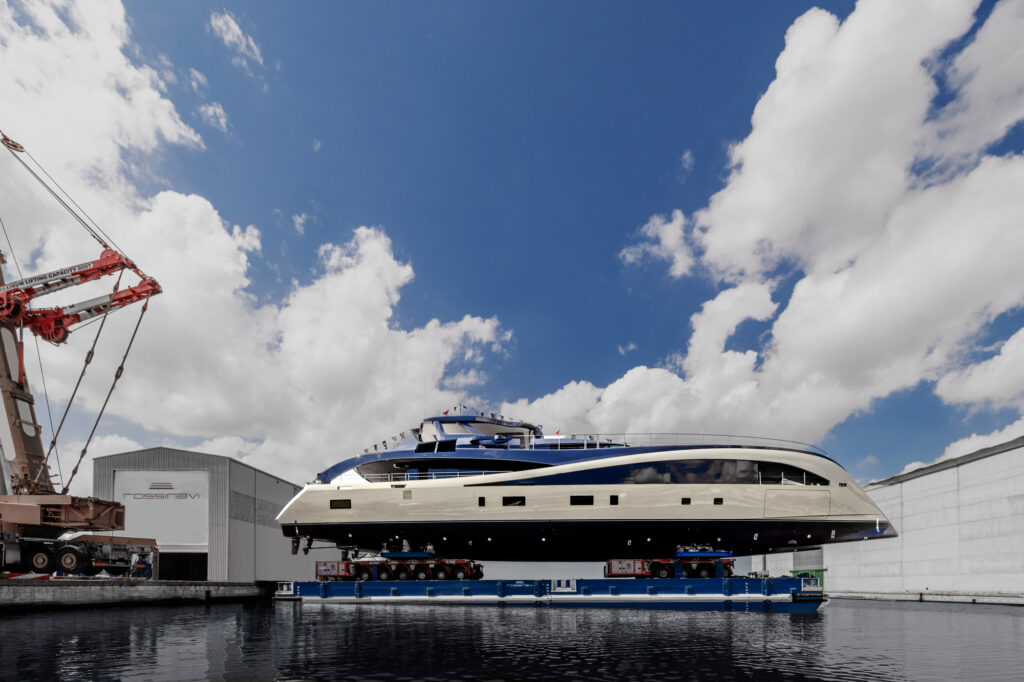
Yacht of the future
Rossinavi’s BluE label hybrid-electric yachts are propelled by batteries and solar panels with the goal of reducing CO2 emissions. Energy collected by these solar panels during the day is stored in advanced batteries and released at night, creating a bioluminescent effect similar to glowing plankton.
On top of its environmental perks, Seawolf X also includes an onboard artificial intelligence system developed by Rossnavi. Rossinavi AI constantly analyzes the operation of the vessel and acts as a brain that can learn from observation and predict the needs of the guests on board. Rossinavi AI is able to talk with crew members and monitor the battery pack to keep it in a range of 20 to 80 percent –the ideal range to ensure better battery pack lifespan.
The boat’s exterior architecture is by Fulvio De Simoni Yacht Design , while New-York-based practice Meyer Davis Studio designed the interiors. The Fulvio De Simoni Yacht Design team came up with a sleek and low-profile silhouette, reminiscent of a sports car.
The yacht has three distinct spaces for outdoor living: a lively cockpit centered around a pool, a large sundeck with sunbathing and living spaces, and a bow area featuring a hidden pool and convertible home theater. The yacht design team accurately integrated solar panels into the vessel, ensuring plenty of surface space for energy recovery.
“We set out to envision the boat of the future, unbound by convention yet grounded in feasibility with cutting-edge technology for minimal environmental impact,” said Fulvio De Simoni, founder of Fulvio De Simoni Yacht Design, in a press release.
- More: Catamarans , Electric , Hybrid , Rossinavi , Superyachts , Yachts
- More Yachts

Bering Yachts Showcases Exploration

Merritt 88 Skybridge Reviewed

Tankoa Launches “Diamond Binta”

Duffie Boatworks 70 Reviewed

For Sale: Pershing 82 VHP

Sunseeker Predator 55 Prepares for Debut

- Digital Edition
- Customer Service
- Privacy Policy
- Email Newsletters
- Cruising World
- Sailing World
- Salt Water Sportsman
- Sport Fishing
- Wakeboarding
JavaScript functionality for your browser has been deactivate. Please activate JavaScript so you can use all functions on this page.
- ‹ Return |
- › Products
- › Hybrid Drives
Deep Blue Hybrid
Deep blue is a fully integrated propulsion and energy management system, industrially engineered and customizable with modular components. the result is exceptional performance, compliance with international safety standards, and highly intuitive operability.
- Relaxation: no noise from the motor and only a little noise from the generator
- Environmental protection: use renewable forms of energy
- Independence: adequate energy on board, less need to head for a marina
- Convenience: simple joystick docking
- Simplicity: only one type of fuel – and less of it required
System Overview of the Hybrid Drive System
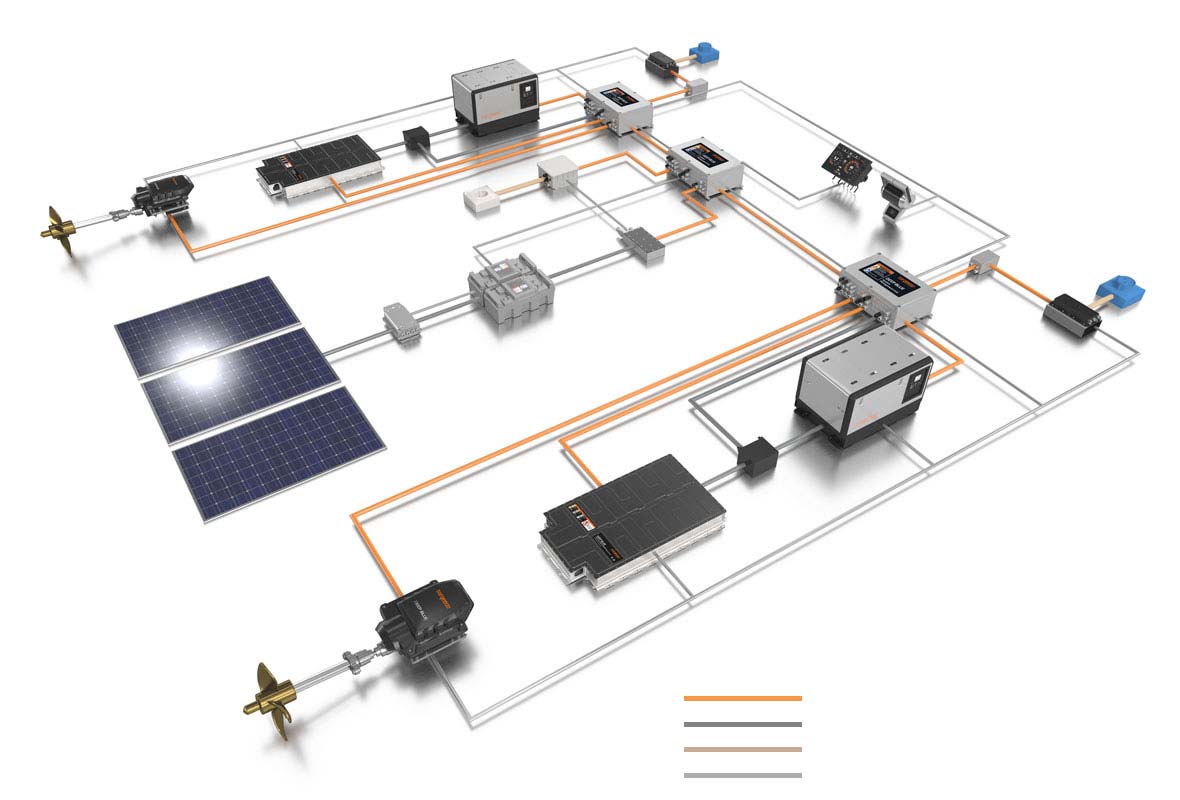
| 1 | Powerful electric motor: delivers between 25 and 100 kW of continuous power at 360 V. Available as inboard, outboard or saildrive |
| 2 | 360 V high-capacity lithium battery system |
| 3 | 12 V batteries: system power supply for starting up the high-voltage battery system and the diesel generator. The Deep Blue system manages these batteries autonomously |
| 4 | Efficient state-of-the-art diesel generator. Only runs when power requirements exceed the renewable sources and available battery capacity. Runs at optimum operating point feeding the 360 V system directly |
| 5 | Onshore power chargers: for charging the system from the AC mains supply in port |
| 6 | System management unit: the heart of the drive management system. This is where all the connections and system management functions for the drive train are concentrated |
| 7 | Onshore power connection: The large battery bank can be recharged with sufficient energy for the voyage when in port |
| 8 | System connection box: this is where the connections and system management functions are linked together to form a complete system and where other (convenience) functions for larger boats and yachts are integrated |
| 9 | AC inverter: provides independence from power conditions on land. Voltage and frequency can be freely configured |
| 10 | Isolated AC power system (120/240 V AC current, 50/60 Hz): equipment and power sockets are connected via an AC power distributor |
| 11 | Bi-directional DC/DC converter: connects the 24 V DC power system with the battery system, allowing the free transfer of power |
| 12 | 24 V on-board batteries: act as a buffer and redundant power store for the entire on-board electrical system |
| 13 | Solar charge controller: converts power generated by photovoltaic into the right voltage for the on-board power system. Highly efficient thanks to MMP tracking |
| 14 | Photovoltaic modules: generate solar energy as additional power for the system |
| 15 | Electronic throttle: controls the performance of the electric motors. The twin remote throttle allows individual control of two drive trains |
| 16 | Display with onboard computer: allows the flexible management and modification of parameters controlling the usage patterns of the system |
System Components
High-capacity lithium battery technology.
Lithium-based batteries are the technology of choice for electric mobility applications. They store significantly more energy than all other batteries, they maintain a high current, they do not lose their charging capacity, they supply power reliably, and have no memory effect. They also have a much longer useful life than lead-based batteries.
The benefits for customers:
• High energy density
• Lower costs
• Long service life
• Highest quality and safety standards
Dimensions and preliminary specifications
| Deep Blue Battery 40 | Deep Blue Battery 80 | |
|---|---|---|
| Nominal voltage | 352 V | 348 V |
| Chemistry | Lithium-Ion, NMC | LFP - Gr |
| Safety | IP67 ingress protection, venting, damping, IEC 62619 & IEC 62620 | IP67 ingress protection, venting, damping, IEC 62619 & IEC 62620 |
| Capacity (usable) | 38 kWh | 77.6 kWh |
| Weight | 284 kg | 562 kg |
| Dimensions | 1660 x 964 x 174 mm | 1800 x 853 x 236 mm |
Click here to learn more about battery technology
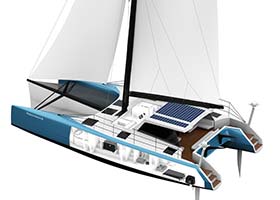
Economical auxiliary power
Third-party generators can be integrated into the Deep Blue system via the DC generator interface developed by Torqeedo. The converter generators eliminate the fixed ratio between rotational speed, power and voltage output.
Integrated into the information, safety and energy management system of the Deep Blue Hybrid, the generators produce any combination of power and voltage as required, adopted to individual setting.

Third-party generators can be integrated into the Deep Blue system via the DC generator interface developed by Torqeedo, providing long-range motoring and efficient backup power for serial hybrid systems. The converter generators eliminate the fixed ratio between rotational speed, power and voltage output.
Integrated into the information, safety and energy management system of the Deep Blue Hybrid, the generators produce any combination of power and voltage as required, adopted to individual setttings.
Technical Data
| Panda 45 VS PMS Generator | |
|---|---|
| Continuous power | 45 kW |
| Max. rpm of diesel engine | 2,800 |
| Weight | 595 kg |
| Dimensions | 1313 x 800 x 892 mm |
| Benefits | Low noise |

Typical application areas
Perfect for ...
• Torqeedo Deep Blue Hybrid drives with shaft power from 25 to 100 kW (equivalent to 40 – 160 HP)
• Sailing yachts, ferries, water taxis, etc., with hull lengths from 40 to 110 feet (12 – 33 m)
Highly flexible thanks to four operating modes
The Deep Blue Advanced Energy Management System offers four ways of conveniently operating the hybrid system automatically:
| Generator off; completely electrical operation. | |
| The generator recharges the batteries. As soon as the maximum battery level is reached, the generator only produces the power currently required by the drive system, allowing the float mode to be activated. | |
| The generator starts automatically if the battery charge falls below the previously defined level. |
Electrical drive power, on-board power and charging power of the highest standard
The Advanced Hybrid Control System for the Torqeedo Deep Blue Hybrid system controls the generator to optimum effect (single or twin installations). It provides a reliable supply of electricity for 360V DC boat drive systems as well as all other 110/230V AC and 24V DC power supply systems on board:
Hybrid and charging power for the Torqeedo Deep Blue system
• AC on-board power supply for galley, air conditioning, water maker and other electrical consumers on board (hotel loads)
• Low-voltage DC power for lighting, radio, navigation, winches, etc.
Always in control
Deep Blue Hybrid offers intuitive operation presented on the multifunctional display, providing a complete overview of the entire system and access to all control functions.
The software keeps an eye on everything and prevents errors like deep-discharging batteries. An easy-to-understand graphical user interface is available as either multihull or monohull and delivers complete, up-tothe- minute system visualisation.
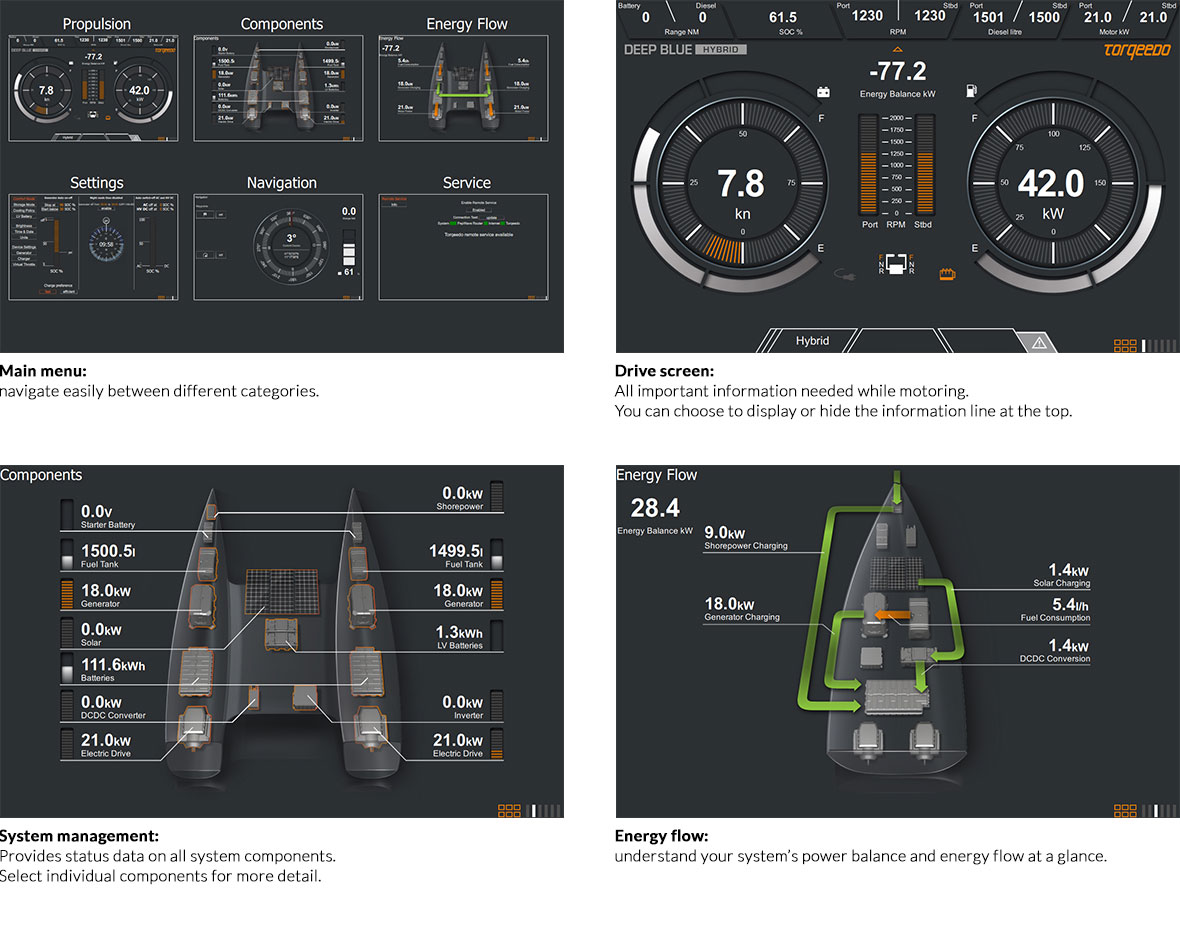
Premium throttles
We’ve come to expect an intuitive way to operate our technical devices. We expect detailed information, nicely displayed and clearly arranged. We expect that the objects we use are both beautiful and functional.
This is what spurred us to create the new Torqeedo throttle family and improved user interface for Deep Blue.
Our premium throttles offer the right solution for every application, whether for sailboats or on motorboats – ergonomic, strong and functional. All premium throttles come with Bluetooth built in for simple integration of Torqeedo’s TorqTrac smartphone app.
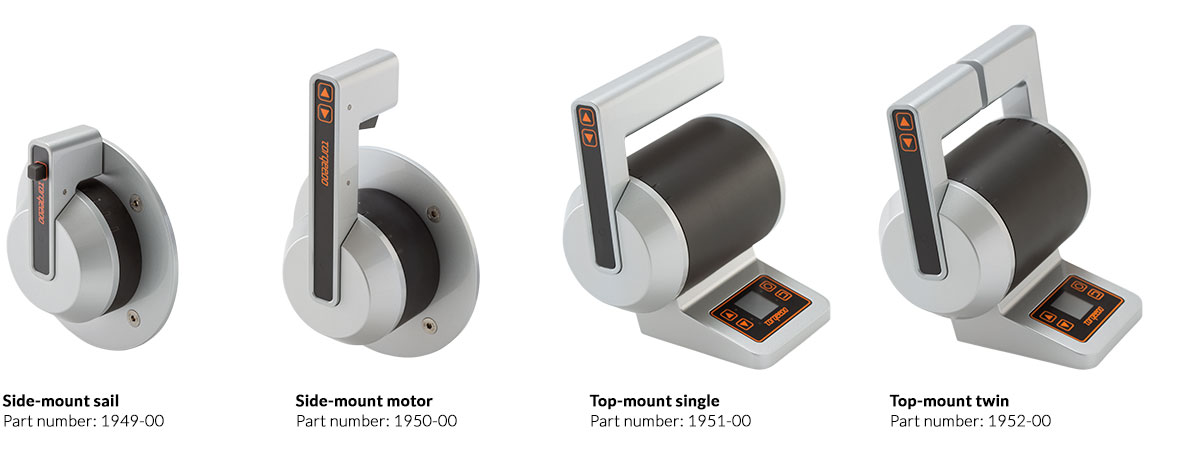
Hybrid Drive System and Integrated Energy Management
Hybrid drive system.
Powerful and silent electric drive systems allow manoeuvring and sailing at hull speed.
High-performance batteries adapted from the automotive industry enable prolonged motor-cruising for up to 50+ nautical miles without use of a generator. Solar power generated on board and hydro-generated energy – the propeller rotates while boat is under sail – provide additional propulsion. Besides, the integrated generator provides sufficient energy to cover long distances, if required.
The slowly rotating electric drives allow precise maneuvering and in combination with joystick docking makes putting out to sea and berthing as easy as pie.
Integrated energy management
The integrated management system of Deep Blue Hybrid makes it possible to use available power in any way you wish – for the powerful high-voltage drive system, for the 24 V on-board power supply or to operate equipment with 230 V AC current. Deep Blue Hybrid is designed in such a way that energy is always available where it's needed.
The combination of energy generated from renewable sources and by the generator means that there is always sufficient power available. However, the generator does not need to run for as long.
Clean and safe electricity can be used for all equipment and so it is no longer necessary to have propane or petrol on board. A tender can also be run electrically and can be charged from the Deep Blue Hybrid on-board power system.
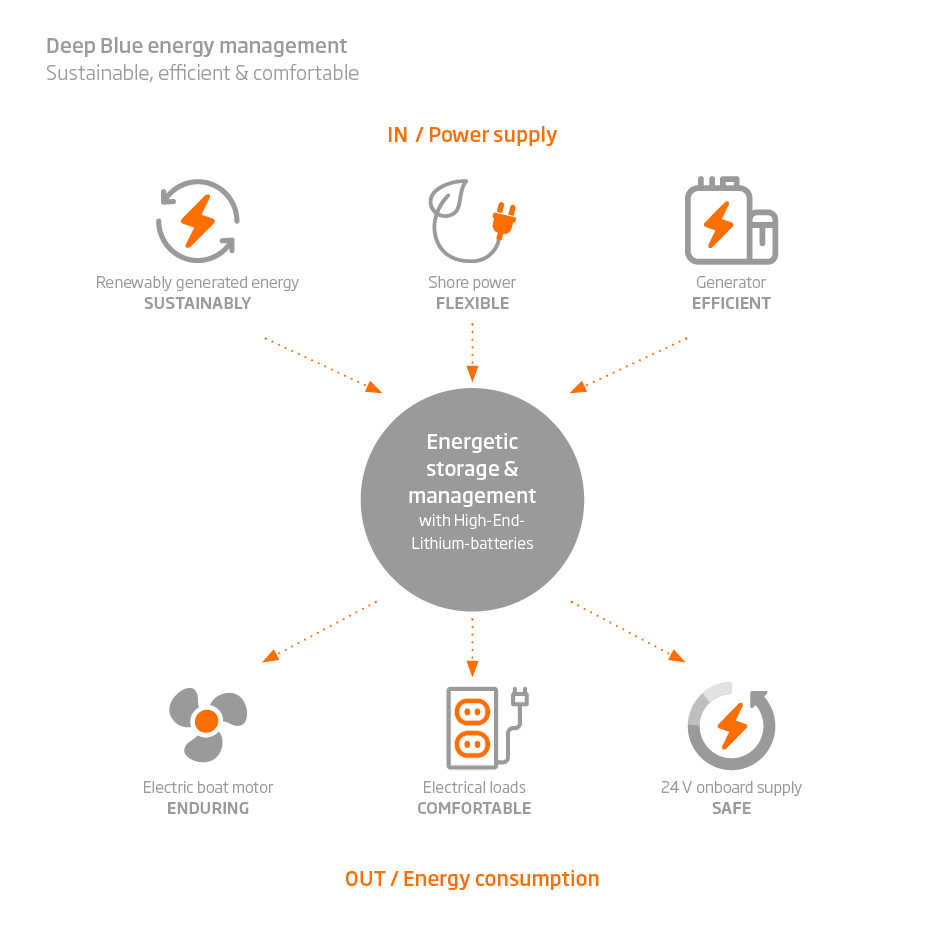

Professional Safety
Professional safety for your sailing yacht.
Particular attention should be paid to standards compliance and safety during the development of a hybrid drive system. During the years spent on developing the Deep Blue Hybrid system we followed safety concepts that, for example, are standard in the automotive industry – but which previously could not be found in powerful electric drive systems for electric sailing yachts.
In addition, electrical drive systems for electric sailing yachts pose special challenges that are not relevant for other industries. In this respect, it is not enough to just follow the standard of other industries for high-voltage boat drives. As we are used to setting new standards, we have done so with regard to safety. Below you will find a number of examples of the Deep Blue Hybrid's unique safety concept.
Isolation monitor: constantly monitors that the voltage from all 360 V components is completely isolated from the boat – not just for individual system components but for all of them. If damage is detected, e.g. to the cable insulation, the system will issue an alert. In the event of dangerous insulation failure, the system will be shut down.
All components are waterproof: Components that were not specifically developed for boats are not always waterproof. All the components of a high-power system on a boat must be waterproof to guarantee safe operation. That is why all of our components are waterproofed.
Automotive industry-level battery safety: The first lithium batteries for the marine industry with the advanced quality standards of the automotive sector are the result of Torqeedo's collaboration with established battery manufacturers. Integrating a battery into a drive system and the associated safety concept alone requires considerable effort that can only be achieved by working together with the battery manufacturer.
Battery venting: In the unlikely event that the redundant safety mechanisms of the battery fail, the battery cells can reduce their temperature and pressure via a pressure valve. While batteries are installed in electric cars in such a way that they can discharge battery gases directly onto the road, on electric boats the gases must be channelled safely off the vessel. We developed the first safe venting system for boats for the Deep Blue System.
Battery damping: All components on fast and seagoing boats are subject to constant high levels of shock that exceed shock levels on the road – in some cases over 12 g of acceleration force. The same holds true when trailering the boat. Since batteries and battery electronics are not designed for these constant impacts, they need their own damping system on boats (in addition to the damping mechanisms within the battery). Torqeedo is the only company in the world that provides this for maritime use.
Benefits for Boatbuilders
Custom-built solutions are often pursued in order to meet a user's requirements. These individual hybrid projects raise a number of difficulties:
- High-end components do not exist for the custom project. High-tech safe lithium batteries, for example, require an intensive design-in process in close cooperation with the battery manufacturer's research and development department. However, reputable high-voltage battery manufacturers do not supply their batteries for custom solutions that they are not familiar with and that have not been coordinated with them in detail.
- Creating an integrated hybrid system requires a comprehensive research and development project accompanied by many person-years in the field of development running to the tune of several million euros. These efforts are not undertaken for custom projects, leading to lower reliability and a lack of complex but important safety features (such as pilot lines).
- The system integrator has the statutory duty to ensure that the hybrid system complies with all the relevant and mandatory standards such as the Machinery Directive and the EMC Directive. Custom hybrid systems do not generally meet these standards. Since a boatbuilder is responsible for ensuring that the entire boat complies with standards, the installation of custom-built hybrid systems constitutes a serious risk for boatbuilders.
Unlike custom-built hybrid systems, DEEP BLUE HYBRID addresses the requirements of environmentally aware customers, offering a turnkey solution that guarantees compliance with the relevant norms and standards.
- DEEP BLUE HYBRID was created in an extensive research and development project involving a large number of mechanical and electrical engineers over several years. The components were carefully selected and coordinated with an overall system. Essential inspections and certifications were performed at system level.
- High-end components such as hybrid batteries from the automotive industry were integrated into the system.
- Torqeedo assumes responsibility for the functionality and compliance with relevant standards for the whole system.
- DEEP BLUE HYBRID was developed on the basis of modular components. It allows flexibility and scalability without affecting system integration and reliability.
- DEEP BLUE HYBRID for electric ferrys, electric sailing yachts, electric catamarans & electric water taxis.
If we have awakened your interest in our products we would be pleased to send you more detailed information. Simply enter your details in the contact form below and we will get in touch with shortly.

- Allures yachting
- Garcia yachts
- Dufour yachts
- Fountaine Pajot Sailing Catamarans
- Outremer catamarans
- Catana catamarans
- Garcia Explocat
- Dufour catamarans
- Aventura catamarans
- NEEL Trimarans
- Allures Sailing Catamarans
- Fountaine Pajot Motor Yachts
- Garcia trawler
- Beneteau Motorboats
- Aventura Power Catamarans
- Yacht school
How hybrid sailing yachts are slowly becoming a reality
Every sailor is familiar with the harsh cough of a diesel engine and the acrid smell of its exhaust. For some it is a sign that the adventure is beginning, for others it is a reassurance that everything is in order on board. A traditional engine is arguably the most important safety feature in your boat, but its days may be numbered. The electric yachting revolution is coming. And although the introduction of electric motors [...]
Every sailor is familiar with the harsh cough of a diesel engine and the acrid smell of its exhaust. For some it is a sign that the adventure is beginning, for others it is a reassurance that everything is in order on board. A traditional engine is arguably the most important safety feature in your boat, but its days may be numbered.
The electric yachting revolution is coming. And although the introduction of electric motors in the marine industry is much slower than in the automotive industry, progress has been made.
The market is still relatively small. The undisputed leader in the production of electric motors, Torqeedo , last year made € 25 million in sales, most of which were for ferries and small boats using outboard motors. But the company also offers a range of engines for yachts ranging from 2 to 50 tons, or roughly 20-60 feet of total length.
However, yachtsmen are in no hurry to purchase new products, and there is a good reason for that: if you plan to cross the ocean and you may face difficult conditions on the water, you rely on your engine to help you avoid danger or fight your way through hopelessness - and sometimes these conditions last for several days.
Even with the current crop of advanced lithium-ion batteries electric system power reserve measured in tens of miles, not hundreds. Thus, a 35-foot monohall with a 10 kW lithium battery (four units totaling 96 kg) has only 24 nautical miles in reserve at 3.8 knots or less than 16 nautical miles on full throttle.
Despite the incredible inefficiency of internal combustion engines, which dissipate more energy in the form of heat and noise than driving, diesel is still ten times more energy intensive than batteries.
Avon Marine and Torqeedo launch the eJET 450 electrodes
“If you look at the cruisers sailing the high seas, you will certainly see diesel,” says the founder and CEO. Torqeedo, Christophe Ballin ... "And it's okay that few sailors choose an all-electric motor."
But this does not mean that electric motors are not of interest to yachtsmen - this is far from the case. In the most optimal way for the modern sailor there will be a combination of diesel and electricity in a hybrid propulsion system.
With this approach traditional engine replaced by an electric motor connected to a lithium battery. They can be charged by hydro-generation (where sailing turns the propeller and creates power for the batteries) or by the sun and wind. But when long periods of operation are required, electricity is provided by a self-contained DC generator that can be installed anywhere on board.
This setting is recommended by a Finnish company. Oceanvolt which specializes in the cruise sailing market with an electric motor range from 3.7 kW to 15 kW (approximately 10 hp to 45 hp in terms of an internal combustion engine).
" For sailors sailing around the world , we recommend a hybrid system with a standby generator set to support continuous power supply when needed, ”says CEO Oceanvolt Marcus Mustelin ... "The propeller, which rotates during sailing and recharges the batteries (taking 0.2-0.4 knots, depending on the boat and conditions), allows us to be practically independent of the generator and use it only for reserve."
The advantage of this system the fact that the generator is needed only on long passages, so the boat maneuvers quite silently in ports and at anchorages.
And a well-designed and properly sized generator is much more efficient at converting diesel fuel to electricity than an engine that was not originally designed for this purpose. Some sailors prefer an integrated hybrid system like the one offered Hybrid-Marine , which is mounted to the existing diesel engine.
They are easier to retrofit and many have the same specs as the full hybrid system, but the downside is that you still need room for the engine.
"Electromagnetism"
Until now, most installations have been done by retrofitting existing yachts. But more yacht builders are looking to include an electric propulsion system as an initial equipment. Hanse yachts , the world's third largest yacht manufacturer, is arguably the most innovative today, offering Hanse 315 in the base with an electric drive on the steering wheel.
The system takes up less space is much quieter than standard diesel and does not generate vibration or emissions. But Hanse admits that the overall venture has been disappointing so far.
The technology has met with more interest among those who walk on the lakes. Innovative young German brand Bente accommodates motors Torqeedo to its successful 24-foot model originally created for the German Green Lakes.
However, large racing yachts are also interested in lightweight propulsion systems. Just look at Malizia , IMOCA 60 preparing for Vendee Globe 2020 years with a lightweight system from Torqeedo .
“A race around the world, not only free of emissions but also generating its own energy, is a very inspiring concept,” says Malizia skipper Boris Herrmann.
Electricity is also making headway in the high-end market, where lithium-ion batteries account for a smaller share of the boat's total cost. 50ft catamaran Privilege 5 and a carbon fiber boat Gunboat 60 have been modified with the kit Torqeedo while setting Oceanvolt appears on board Swan 57 and completely carbon Agile 42 .
Moonwave has two 25kW units Deep blue capable of being recharged while sailing. There is still a generator on board to provide power for the high seas, but "they barely use the generator, leaving it for emergencies," says Ballin of Torqeedo .
Spirit yachts also develops an electrical installation for its flagship Spirit 111 due to be presented this summer. With four large 40 kW lithium batteries on board and a 100 kW motor, the yacht will be able to run silently for hours, although she also has a 100 kW diesel generator in reserve.
“Our focus is not on the driving force per se,” explains the director. Spirit Nigel Stewart - but on the harmonious operation of equipment, from the galley and hot water to heating, air conditioning, hydraulics, etc. " The British shipyard is also building a 65-foot using hybrid technology. Oceanvolt and a 44-foot with only an electric motor.
Spirit Yachts: How and why do yacht owners use green technology?
But between races on one side and advanced cruisers on the other, there is a bit of a dip down the middle. By confession Torqeedo yachtsmen have not been the focus of the electric revolution, but that must change. "We are a little late with sailing," admits Ballin, "but this will be fixed in the next five to eight years."
What does this actually mean? Well, first of all, it means system integration. If that doesn't sound revolutionary enough, imagine an on-board installation where solar panels, hydro generators, batteries, generators and motors operate without interruption to ensure that the yacht has enough power around the clock. " This is what people are willing to pay for: enough energy, incl. - for heating or air conditioning during the night, ”says Ballin
. The future of hybrid sailing
Soon Torqeedo plans to use a new DC generator specifically designed for hybrid sailboats. Its existing prototype is designed WhisperPower and provides a power of 25 kW.
The generator will be designed to operate at optimal rpm, while Smart converter will separate the battery voltage from the charging voltage for greater efficiency.
With boats, as with cars, the breakthrough that will be critical has to do with battery capacity. Bye power reserve on an electrical installation not comparable to diesel, there will be many skeptics. And that is unlikely to happen for ten or more years, Ballin said.
"Theoretically, in laboratories batteries tested that are ten times more effective than lithium, he explains. - And if this happens, the gasoline era will end. But now we are trying to combine a long-term vision with a short-term perspective. ”
Meanwhile, the widespread technology is based on lithium-manganese-cobalt, and the technological development process adds 5-8% every year. For example, Bmw recently announced that her battery i3 the next generation used by the system Deep Blue by Torqeedo , will be able to support 40 kWh of power - an increase of 33% for the same size, weight and almost the same cost.
Another direction of development is associated with the screw. Most cruisers use a folding or regular propeller designed for diesel engines. But research Torqeedo shows that high motor torque is optimal for variable pitch propellers.
Superyacht Snowflake with DynaRig rigs and solar-powered sails
And yet it is precisely Oceanvolt took care of the issue of screws especially for electric motors with their own system Servo Prop which is said to be more efficient at the front on the 30%, better at the stern on the 100% and better at the 300% in regeneration mode.
Oceanvolt says such a propeller can deliver about 500 watts to the batteries at just 5 knots - the average pace of a 30-foot monohull yacht. At 6 knots the figure rises to about 800 watts, at 7 knots you get 1.2 kW for the larger ocean cruiser.
“A new technology at its start can rarely compete in price with an existing one,” says Mustelin.
However, we have done so, and today electrical systems are offered at a fairly reasonable price. competitive cost ... Add to that the fact that the electrical system is virtually maintenance-free, and the total cost of ownership translates into electricity. "
So you may not hear their "quiet footsteps", but expect to see more and more electrically powered boats on the water as you continue. "Electric revolution" .
Torque issue
A key part of attraction electric motor relies on the idea that a smaller engine can do the same job as a larger diesel. There are two points here. First, the diesel engine is not an efficient power-to-thrust converter, generating a lot of heat and noise in the process. Secondly, the torque characteristics of the electric motor are much better than those of the diesel.
Mustelin says that Oceanvolt's 10 kW engine “easily outperforms” the 30 hp diesel. “Typically, the boat's maximum speed will be slightly lower (0.5-1.0 knots) than when using a comparable diesel engine, but at the same time the boat will maintain speed better in rough seas and headwinds due to more high torque. Also maneuverability will be much better in the confined space of marinas ”.
This is because combustion engines only achieve peak power (and maximum torque) over a small speed range. Torque is an indicator of the force of rotation, in the case of a boat, the rotation of the propeller. The diesel engine develops optimal torque at 1800-2000 rpm, while the electric motors develop it from 0 to 2000 rpm. This allows electric motors to use higher efficiency propellers that are thinner and have a steeper pitch.
Alternator on "steroids"
It took years and over $ 10 million to develop, but a renowned yacht expert Nigel Calder helped design an alternator so powerful that it eliminates the need for a generator on board.
Mounted on the engine, Integrel can produce five to ten times more power. Behind the system is at least 10 kWh of lead-acid batteries (lithium are optional), as well as chargers and inverters Victron .
“If you use an engine, it charges the batteries; if you are in neutral, he will know that the generator is in stand-alone mode and will switch to this algorithm , Explains Calder. "It is likely to be cheaper than installing a generator and eliminates the problem of through housings, cooling circuits, long run times and maintenance."
Case study: Dufour 382 Alcyone
Built by the company Dufour in 2016, Alcyone was immediately re-equipped with an engine SD15 Oceanvolt with a lithium battery of 14 kW / h. Owners Michael Melling and Diana Kolpak also received a direct current generator with a capacity of 8 kW / h to increase the power reserve. Equipment costs were € 30,600 for the engine and battery system, plus an additional € 13,744 for the generator, and the installation cost was around € 8,000.
They charter a boat near Vancouver to explore places where quiet, clean traffic is a condition of the sale. “Nothing spoils the joy of sailing or a secluded anchorage like the noise and smell of diesel engines,” they explained. - System installation Oceanvolt in our new boat saved us from this. This is the path of the future. "
Charter manager Merion Martin said the conversion has also proven popular with charter clients, adding, “The main benefit of the unit is that it uses about 40% less fuel than a standard diesel engine during a week's charter. But herself the system takes some getting used to, and troubleshooting can be challenging. "
Small electrification of yachts
Meanwhile, electric motors are actively appearing on board yachts. We are talking about hangers Torqeedo and E-propulsion which company Interparus supplies its clients for yacht tenders. According to Sasha Goron , head Interparus Yachting , about 80% yachtsmen are completing their tuziks with electric outboards. They are satisfied with the lightness of the motor, ease of use and silence while driving.
Please contact us for all questions and we will share with you the experience of operating these motors.
+33 644 14 21 68 WhatsApp, Sasha Goron
News and articles

Two parallel, side by side, with the same structure telescopes, become binoculars, thanks to the so-called bridge that connects them.

Cruisers around the world have been invited to join the Trash Tuesday initiative to try to tackle the pollution of the world's oceans. A couple of cruisers Nick and Catherine Hodgson invite all boaters to do their part in the fight against ocean plastic pollution by joining their “Garbage Tuesday” initiative. The couple live in Cape Town, and in the summer they travel across the Mediterranean on the Fountaine Pajot Saba [...]

Hey! The other day we asked ourselves a good question - of course, it's good that the sanctions policy is in effect, but what's next? What will happen to these dozens (if not hundreds at the time of publication) of superyachts? Where will they be sent, resold, nationalized? Interparus decided to deal with these questions.

- Yachting World
- Digital Edition

Three hulls, one planet: Neel 51 owner explains how he went self-sustainable
- May 28, 2020
A Swiss sailor and organic farmer has customised his Neel 51 to prove that boats can be completely self-sustaining. Sam Fortescue reports

Wolf chose a Neel 51 trimaran for speed and comfort
Bluewater sailing stories usually start with someone who has been around boats all their life. But not this one. A Swiss man who goes only by the name ‘Wolf’ freely admits he came late to the sailing party when he started to spec out a new Neel 51 trimaran in 2016.
“I came to the boating world in an accident of life after a medical problem that made me think about how to spend the rest of my life,” he tells me before listing his new aspirations. “The first one was living on a boat, like a child’s dream.”
Coming to boat ownership without any of the preconceptions or traditional constraints that inform many of our choices, Wolf knew straight away that he wanted a multihull . “I wanted a fast and comfortable boat,” he says. But he also wanted something a bit more than that. “I wanted autonomy and environmental sustainability.”

Plans for sustainable sailing include growing crops on board as well as making use of zero carbon renewable energy
This is where Wolf’s story takes a really interesting turn, because he wasn’t prepared to settle for standard ‘greening’ measures such as synthetic teak decks or a few solar panels . “Usually with boats, your life is based on a diesel engine . I thought ‘I’m not prepared to be dependent on fossil fuels’.”
So he looked at the design of a boat’s systems in a fundamental way to determine how he could live aboard with the lowest possible carbon footprint. It led him to develop his own straightforward solutions to harvesting fresh water, electric propulsion , growing food on board and managing waste – all interconnected.
“I didn’t want to do a concept boat, just one that I agreed with and understood,” he says. Now he wants to use his experience to prove to boatbuilders and other sailors that boating doesn’t have to pollute.
Article continues below…

How the crew of SV Delos created the ultimate self-sustainable yacht
When Brian Trautman bought a 53ft Amel Super Maramu in 2008 he had little intention of living aboard for ten…
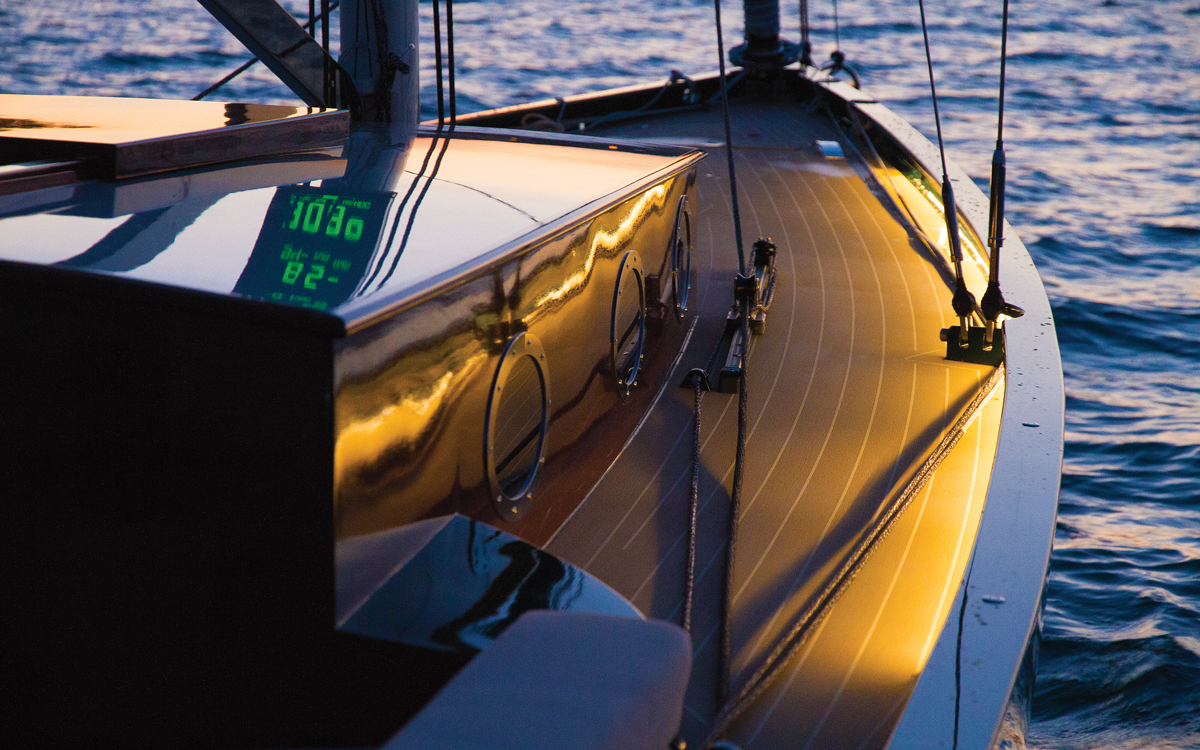
How hybrid sailing yachts finally became a feasible option
Every sailor is familiar with the wet cough of the diesel engine, and the acrid smell of its exhaust. For…
Going electric
The first thing was to install an alternative to the standard 75hp Volvo engine of the Neel 51. “An electric motor seemed to be promising because I could also produce that energy as I went along,” Wolf says.
After some research, he decided to install a 50kW Deep Blue electric motor from Torqeedo to drive the boat, hooked up to six i8 lithium batteries , each containing 10kWh of energy. These batteries have their own dedicated shelves in the mechanical space usually given over to the diesel engine.
As is possible with all electric drives, the prop can generate electricity as the boat sails to recharge the batteries and run house loads, like the induction hob, electric cooker and the instruments. “I made some calculations and strangely it was quite easy to produce enough energy to cover all my needs. The Torqeedo system should produce 1kW at around 7-8 knots boat speed.

Engineroom space is mostly given over to batteries
“It could be much more, though, so I am also considering an independent hydrogenerator that you could lift out of the water when you don’t need it. This would be interesting because then there is more power available at a slower speed.”
Solar panels naturally cover part of his overall power equation, with the potential to dwarf the generating capacity of the propeller. He reckons that his 3kW of flexible DAS panels glued to the coachroof can generate 6-13kWh per day and estimates his demand to be 8kWh. The final piece of the jigsaw is two wind turbines that will help charge the batteries day and night.
Getting supplies of fresh water on board is a regular chore for bluewater cruisers. Most boats will install a watermaker to free them somewhat from the tyranny of the water tank and provide peace of mind in case of unexpectedly long passages.

Harvesting and waste recycling systems conserve water
Wolf has also put in a watermaker, a Katadyn PowerSurvivor 40E capable of producing five litres per hour. After all, he, “didn’t want to make any compromise on safety on board, or on comfort. I want to live on the boat for long periods of the year.”
Saving water
But the watermaker is a back-up – there just in case. He tries not to use it. “I didn’t want to depend on a watermaker, because it’s a very complex piece of technology,” he explains. “Desalination puts brine back into the sea, which contributes to the eutrophication of the marine environment. What’s more, they require a lot of energy, usually fossil fuels, reducing the range of the boat and increasing its environmental impact.”
His solution was to turn to a system that has been keeping mariners in fresh water since man first took to the sea: rainwater collection. By installing a small fiddle around the edge of the coachroof, which drains to a central point, it is easy to collect, filter and store fresh water.

Solar panels are used for electricity and heating water, while a fiddle surrounding the coachroof collects rainwater
By the simple expedient of rejecting the first few minutes’ worth of water, all the salt and any impurities caught by the sails or the coachroof are purged, he says. The first yard he approached just looked at him blankly when he outlined his project, but Neel was more responsive, readying the boat for all his subsequent modifications.
Wolf is an organic farmer in his other life, and also plans to grow food aboard Noos . He will make use of the “many wasted spaces” on the boat and apply intensive indoor growing techniques to cultivate simple greens such as lettuce, radish and herbs, as well as courgettes, tomatoes and even aubergine.
“As an organic farmer, I know it’s possible to produce quite a lot in a very small space,” he says. “My expectation is to cover the vegetable needs for four people all year round. This requires selecting the right vegetables, and always starting the next crop before the old crop is finished.”

Corridors between cabins have built-in troughs that are lined with plastic, troughs are then filled with a lightweight soil growing medium so lettuce, radish, herbs, courgettes and tomatoes can be grown
Special racks fill the corridor between the cabins, and what would normally be guest heads in the outer hulls. They are lined with a kind of plastic to keep the lightweight ‘soil’ and water in. Then a perforated fabric is buttoned over the top of the plants to stop things coming loose in rough conditions. Wolf has laid 400 litres of soil.
Some further adjustments will be necessary – such as removing the anti-UV coating on some hatches and windows, to allow the plants to photosynthesise. He plans to install some additional hatches to bring in more natural light, and top the whole system up with greenhouse-standard LED lighting as needed. The darker nooks and crannies will be perfect for growing mushrooms, he says.
Waste disposal
Of course, boats don’t just take on supplies; they also have to get rid of waste. And here again Wolf has some novel ideas. Already a mandatory feature on superyachts , water treatment systems are a key part of Noos ’ equipment.

Button-down covers reflect light and help keep soil in place around the plants
By keeping so-called black water separate from other wastewater, it is possible to filter and reuse the grey water from showers and basins. This is re-circulated in a closed system that supplies the vacuum heads (which flush with just 0.2 litres), washing machine and showers – everything except for drinking water, in fact. In this way, around 75% of grey water is recycled.
All organic waste on board, whether from cooking, growing food or from the black water system, is collected in a Clivus composter containing woodchip and worms. This produces a rich humus and liquid compost, which will be applied to the growing racks as organic fertiliser. “The waste that goes overboard is biologically neutral,” Wolf insists. “It can produce bad smells when the black water arrives in the composting tank, but a carbon filter solves that problem completely.”
Despite all of this renewable technology and the sustainable systems, Wolf has also put in a diesel-powered generator from Torqeedo. “Its advantage is to store a great amount of energy for a long period, which can be given up instantly on demand,” he admits with a sigh. “At the end it’s always about security.”

From boat garden to galley… produce doesn’t have to travel far
The aim is not to use the system at all, but he knows that may not be possible. “There may be some conditions in which you really need power and you haven’t generated enough – when you have cloudy weather without wind, for instance. During two weeks off Palma de Mallorca, I didn’t use the generator at all and from my calculations, I shouldn’t need it. With just 4-6 hours of sailing per day, I should still be able to do 1-2 hours with electric propulsion.”
For high-latitude sailing, he plans to install a small Refleks-style woodburning stove. “Burning driftwood, which is abundant on many beaches, offers a source of complementary energy. Depending on where it is positioned on board, it can also be used for cooking.”
The cost of pioneering
Wolf calculates that his modifications may have cost an extra €120,000 compared to a standard diesel-powered boat. But he believes that lower maintenance and almost no fuel costs will help to amortise the difference. “ Noos is maybe the first boat to fully integrate that new approach; so let’s bet on the fact that in a few years, the systems will cost a lot less and that the difference will be smaller and smaller,” he says. “In the end, it may be even cheaper than a diesel-based boat.”

Noos is novice sailor Wolf’s first yacht
He plans to refine his systems during the coming season in the Mediterranean , before striking out to sail across the Atlantic and explore the Caribbean . And though he’s fulfilling his dream of living aboard, he has a more serious purpose too: to showcase a sustainable way of sailing. It is all in line with the concept of ‘noos’ or awareness, which he has embraced.
“We as humanity have knowledge about everything, from particle reactions to the limits of the universe. Yet we are not able to solve some very simple issues like water and food for everyone, and an ethical society. What is missing is awareness. Noos means rationality, intelligence. The boat is a materialisation of that concept.”
Noos, or ‘nous’ as the Anglo-Saxon world styles it, is a concept from Greek philosophy that refers to the ability of the human mind to understand what is true or real. These days, Wolf and others use it to describe the sharing of information and awareness to break down silo mentality and solve the problems facing humanity.

He is launching a website called ‘Permaboat’, which will detail the systems he has developed to reduce the environmental impact of sailing, and he plans to use his boat as demonstrator. There will be seminars and practical events aimed at spreading his findings more widely.
But he hopes that his example will reach further than just the sailing world. “We won’t change agriculture by bringing agriculture on a boat. But what it will show is that we can use a small space for growing; if it applies to a boat, it could also apply in a city.
“In a closed cell and a hostile environment, it is possible to feed people. Imagine if half of every urban roof space was planted? And if we collected rainwater in cities?”

About the owner
Although Wolf recalls a few minor brushes with sailing when he was growing up, he’d be the first to admit that he has very little experience. The 52-year-old pursued other interests, running an organic farm near the Swiss-French border and an IT security business, until a health scare brought him to the sea.
He chose a trimaran from Neel because he felt it combined the safety of a monohull with the comfort of a multi. He took delivery of Noos in June 2019 and hired professional skipper Timothé Bruneel, the son of the yard’s founders, to get him up to speed during the four month cruise round to Palma. Since then he has lived sporadically on board as he finishes fitting out the boat.
First published in the May 2020 edition of Yachting World.

With the Maverick 440 Hybrid you will enjoy
more silence & unlimited range.
Maverick 440 Hybrid
Key Benefits of Electric Engines
Quiet & Green
More Torque
Reduced maintenance
More power for house batteries
The set-up of the Maverick 440 Hybrid is for a circumnavigation ready yacht launched on the water in Cape Town, South Africa. This yacht already includes air conditioning, water maker, solar panels, generators and other items required for a circumnavigation.
The yacht comes equipped standard with a generous bank of lithium-iron-phosphate batteries to provide for your everyday needs and cruising pleasure while living aboard.
Mavericks are built in a semi-custom manner. The hulls & superstructure are production modeled and the owners specify their equipment, layout, and décor.
In this section, we focus on the benefits and set-up of the Electric powertrain. All the other good things you would find on The Maverick 400 & 440 are also available in this model.

The Maverick 440 Hybrid is an electric motor sailing catamaran. The electric motors are powered by lithium-ion phosphate batteries. The batteries are charged through a number of sources, namely; solar power, wind generators (optional), hydro-regeneration while sailing, shore power, and diesel generator(s).
The dual electric motors operating in pure electric mode from battery power have enough energy from the batteries to perform all anchoring & mooring maneuvers. This covers 90% of your use cases when operating on motors. For off-shore motor cruising & motor-sailing, there is a backup generator. The Maverick tracks so well through its clever hull design that it only requires one motor to run straight in most conditions off-shore providing double the range.
Our electric powertrain with multiple charging options and GenSet power back-up, with large diesel tanks, makes for the best range of any electric 44ft production cruising catamaran in the world.
Electric Motors are sail drives with feathering propellers provided by Oceanvolt.
Maverick Life Hybrid Layout

Saloon, galley & cockpit layout.
You can customize the layout of the galley, various cockpit layouts are available and decor is all your own choice.
Three Cabin , two heads owners yacht.
This is our most popular choice of the cabin layout.
You can customize the hull e.g. replacing the desk in the owner's hull with an additional sofa/sleeper couch or
converting the port forepeak bunk into a pantry, and/or
A workbench with the tool storage in the companionway.
The 3-Cabin Hybrid comes with
2 x 11 kW 48V DC GetSets.

4 Cabin layout
The four-cabin layout can accommodate 10 + 2 guests.
The forepeaks are for children. The saloon has a full queen size double bed that can be used as a day bed or for occasional guests or for watchkeeping.
The 4-Cabin Hybrid comes with a 15kW 48V DC GetSet.
Deck Layout
The deck layout shows the extensive opening hatches and good ventilation that is standard on a Maverick.

Testimonial
Genko Ganev
San Diego, California
"As a professional mechanical engineer, I am very particular about any construction process I am involved in, the quality of the materials and components used, all key ingredients for a high-quality product. Building a “live aboard” catamaran is twice more difficult than building a house in California. Our search for the right boat builder and the right live aboard custom-built catamaran took us over a year and I can confidently say: “We found the right one – Maverick Yachts in Cape Town, South Africa”. After two meetings with Rudi Pretorius at Maverick Yachts, we signed a contract, I quit my day job and relocated to Cape Town for six months while our catamaran was built. True custom-built catamaran, well thought out and build strong. As people say – “They don’t build them like that anymore”. We are extremely happy with our choice and the entire experience was better than expected."

Specification
Key Specs
•Length overall
•Length waterline
•Draft
•Mast height
•Mast height above waterline
•Displacement
•Fuel capacity
•Fresh water capacity
•Motors
•Main sail
•Genoa
•CE certified
13.3 m / 43.6 Ft
12.3 m / 40.3 Ft
7.45 m / 24.5 Ft
1m / 3.2 Ft
18.3 m / 60 Ft
20.1 m / 65.9 Ft
9930 kg / 21'892 lb
2 x 400 l / 2 x 106 US gal
2 x 500 l / 2 x 132 US gal
68 m² / 731.9 sq ft
43 m² / 462.8 sq ft
Sail More Often
The ability to sail more often in both light and strong conditions is the best solution for eco-cruising. The Maverick Hybrid catamarans get going under sail in just 4 knots of wind and can tack or gybe under sail power alone in just 6 knots of wind. Maverick catamarans are engineered with high-strength, low-weight materials.
The hulls and the interior modules are foam core using Gurit® Corecell™ foam for weight-saving and durability.
A lightweight catamaran means you sail more often and for longer with less reliance on engines.
The Maverick 400 & 440 catamarans have the shallowest draft of any fixed keel cruising catamaran in the world.
Optimal weight distribution & space-saving have been achieved with the installation of electric drive motors leading to improvements in boat handling, greater load-carrying capacity, and storage space.

Longest Range when Cruising
Maverick Yachts electric motors with the range extension system allow you to travel further on motors alone than any other 44ft electric cruising catamaran on the market today.
The total cruising range setting off with full battery bank and diesel backup for electric sail drive engines (i.e. no sail power) is calculated at over 1’000 nautical miles. (1’850 km). This range is under calm (neutral) sea conditions at 5 knots.
The cruising range extends further through solar charging.
Cruising range is unlimited when hydro-regeneration is combined in the right proportions with sailing.
Extend your Range
Together with solar power and wind generation you can extend your range on engines and reduce the need for diesel.
The Maverick 440 Hybrid is fitted standard with 42kW of lithium-iron-phosphate (LiFePO4) batteries, 650 watts of solar panels, and 800-liter (220 gallons) of long-range diesel tanks.
The configuration of the system is customizable to meet owners' requirements. An additional 650 watts of solar panels can be added to the bimini bringing the total of solar power to 1300 watts, consisting of 4 x 325-watt hard panels.
An optional 2 x 400watt wind generators can be added to the system to bring the total solar & wind power generation up to 2'100 watts. With the Maverick Hybrid's ability to recharge its batteries through solar power, wind generators, hydro-generators, and plug-in at the dock there is much less need for refilling your diesel tanks, saving you time and money.
Shore Power charging is available for both 120V and 230V.

Performance
Maverick Hybrid Oceanvolt electric motors instantly deliver the full torque of the engines from zero revs. With immediate torque throughout your rev range, the handling and performance of the engine power are sublime. This step-change in performance is achieved while enjoying the peace and quiet electric motors provide.
The responsiveness and power of the electric motors provide confidence during docking procedures and on the open ocean through excellent boat handling characteristics in all situations.
The Comfort of Silence
There is nothing better than the comfort of silence when sailing. With the electric motors, you get close to this level of silence when motoring. When at anchor you can enjoy the peace and quiet for hours on board as the large battery pack is powerful enough to run all the electrical house systems.
Due to the large power of the lithium-iron-phosphate (LiFePO4) battery pack, you have a greater ability to run all electrical systems on the yacht for longer periods. The battery pack is strong enough to run your air-conditioning, water maker, dishwasher, windlass, or autopilot without the need to switch on the generator. If you are conservative with your electrical consumption your batteries will recharge only through the use of solar panels, wind generator, and hydro generator. The backup generators are set to automatically come on when required and you can enjoy more silent intervals. The diesel generators are highly insulated to run smoothly & quietly. Overall there is less vibration & noise when the diesel generator is running than traditional diesel engines.

The Power of Lithium-Ion Batteries
The lithium-iron-phosphate (LiFePO4) battery pack is the source of the main power for all the boat systems and electric motors. This battery pack has a broader operating range than other traditional battery packs. You can use more of the discharge of the battery and you can charge the battery pack faster. This leads to far greater utilization of your batteries, providing more available amp hours that you can use compared with lead-acid / gel batteries. When you are producing a lot of electric power from solar, wind, and hydro generators the battery pack can absorb all this charge thereby greatly reducing the battery charge time.
The batteries have less weight, much higher amount of amp hours = higher Energy Density (Wh/kg), charge much faster, and can be discharged to deeper levels than traditional battery packs. This provides more power to all your home systems for longer. While sailing both electric motors can be set to hydro generation and this is a great way to charge your batteries while cruising with a minimum impact on boat speed. In certain conditions, while sailing at higher boat speeds, the electric motors in hydro generation mode have less resistance than folding props.
Beach your Maverick
The Maverick 440 Hybrid sailing catamaran is designed to dry out on its own bottom.

When setting off onto the open ocean it is good to know you can always get home safe. We use only the most advanced Lithium Iron Phosphate battery technology for safe operation at 48V that is UN38.3 and IEC62281 compliant. This provides a safe and conservative system with its own BMS – battery monitoring system that prevents excessive discharge or overcharging. We have 2 x powerful diesel generators that can provide sufficient power to operate electric motors while by-passing the battery bank. The battery bank can be charged from numerous other sources other than the diesel generators. By design, there are levels of back-up and redundancy built into the systems. This is coherent to the overall design philosophy of Mavericks that is designed to be independent & reliable with dual back-up built into most of the critical boat systems and the use of the highest quality components and materials.
Less Maintenance
Electric motors require far less maintenance than diesel engines. They have far fewer moving parts. The average diesel engine has 300+ moving parts including the transmission. The electric sail drive motors have less than seven moving parts and no transmission is required.
2 X electric motors replace the traditional diesel engines.
For charging & operating efficiencies electric motors and house systems share the same MAIN battery bank. For house loads, they draw from a 12v battery topped up by the MAIN battery bank.
Diesel generators run in their optimum rev range with low resistance leading to greater longevity and less maintenance.
The elective motors do not require winterization reducing annual engine maintenance costs.
Reduced maintenance costs and savings on diesel translate to an overall cost saving over the lifetime of the yacht. This saves time and money for the private owner. For the charter business, these savings translate to greater profitability, better return on investment, more productive time, and ultimately greater customer satisfaction.

Greener Eco -Cruising
The Maverick 440 Hybrid is greener in all aspects.
The system reduces the use of fossil fuel making it cheaper to operate the boat and better for the environment.
- 2024 BOAT BUYERS GUIDE
- SWS ADVENTURES
- Email Newsletters
- Fishing Boat Reviews
- Fly Fishing
- Marine Electronics
- Fishing Tackle
- Fishing Destinations
- The Bahamas Fishing Guide
- Boating Safety

2023 Boat Buyers Guide: Hybrid Boats
- By Lenny Rudow
- December 27, 2022
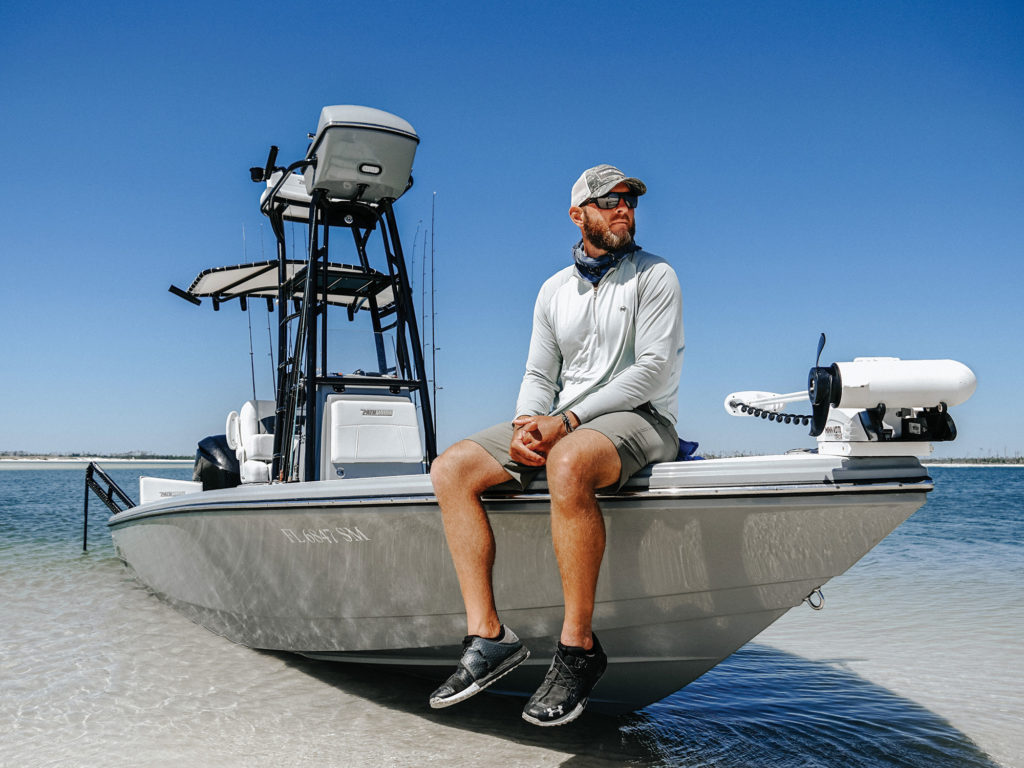
Anglers who want to fish big water one day and backwater bays the next will be served best by a hybrid bay boat. Hybrid bay boats run larger, from 24 to 28 feet, giving them the length needed to safely navigate rough seas. Some hybrids are also outfitted with upper stations.
Deadrise at the transom is usually steeper than a flats skiff or smaller bay boat, clocking in around 15 or so degrees to smooth turbulent waters.
While that means sacrificing a couple of added inches of draft, it boosts the seakeeping abilities.
Hybrids also tend to have more range thanks to larger powerplants and gas tanks, and feature larger fish boxes that can handle even large offshore species. That opens the door to switch from pelagics and bottomfish to specks and snook.
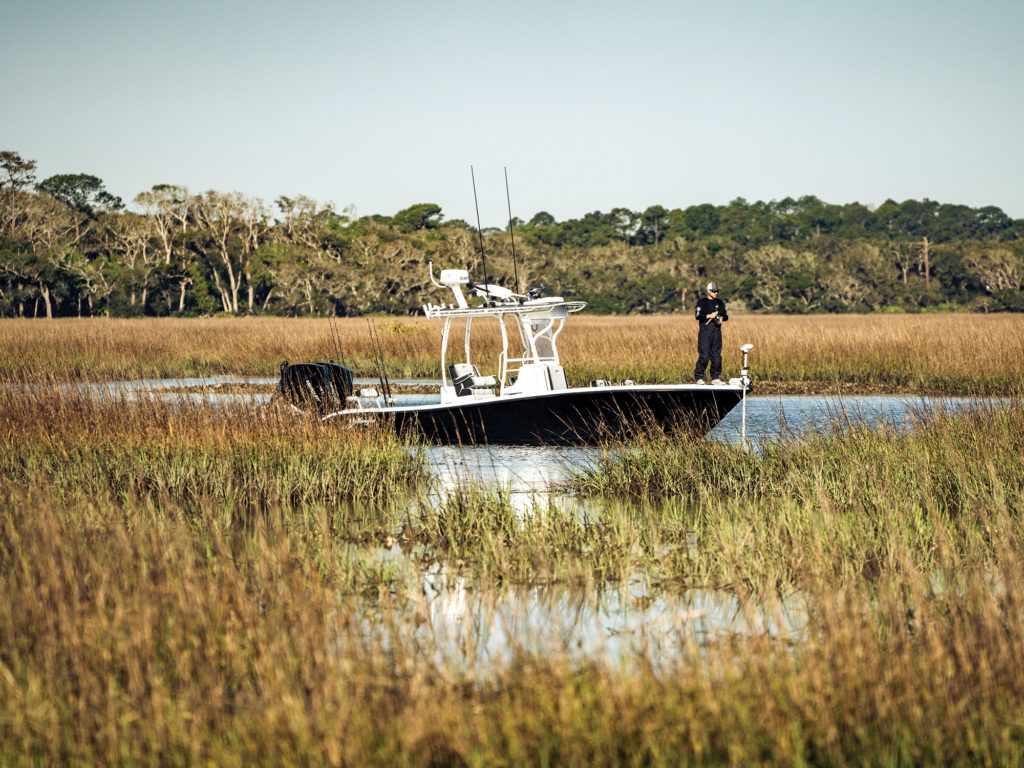
Big Picture
Most hybrid bay boats, such as Skeeter’s 2550 or Grady-White’s 251 CE, have elevated casting platforms at the bow and stern. And because they’re intended to allow for long offshore fishing days, most have the added protection of a T-top. Many also integrate family-friendly features such as extra seating in the foredeck, freshwater transom showers, and large console head compartments. These creature comforts make even extended trips fun for everyone.
The more livewells, the merrier. Regional fishing tactics might still vary some, but live-baiting practice has migrated farther north from its Florida epicenter year by year. So bay boats usually offer at least one livewell, with options for two or more. Often the third is a crustacean well, which is smaller and shallower for shrimp or crabs.
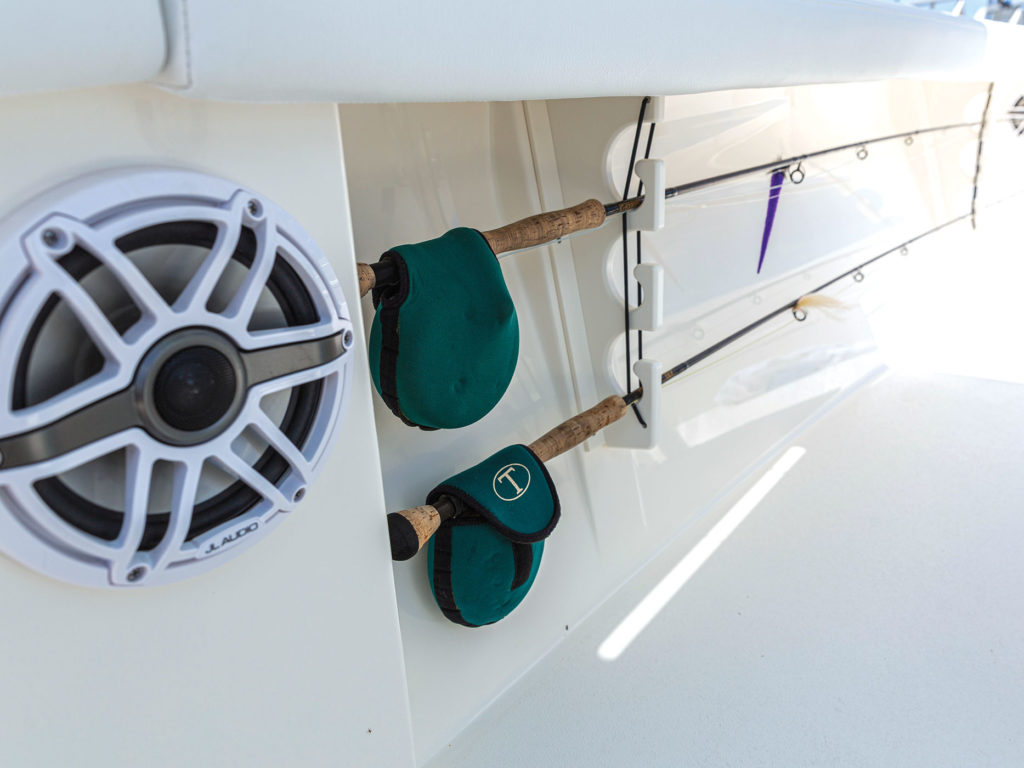
Rod Stowage
You want to have enough rod storage for multiple pursuits to take advantage of these boats’ flexible personalities. Look for vessels outfitted with large, lockable rod lockers in the foredeck, long enough to accommodate up to 9-foot fly rods. Some hybrids will be equipped with rod racks to cradle rods and reels under the gunwales, either as standard equipment or options. Look for ones capable of handling large, offshore rod-and-reel combos. Four to six flush-mount rod holders are generally installed on top of the gunwale, and vertical racks are on either side of the console, leaning post and T-top. Make sure you order your vessel with as many as possible; you can never have enough.
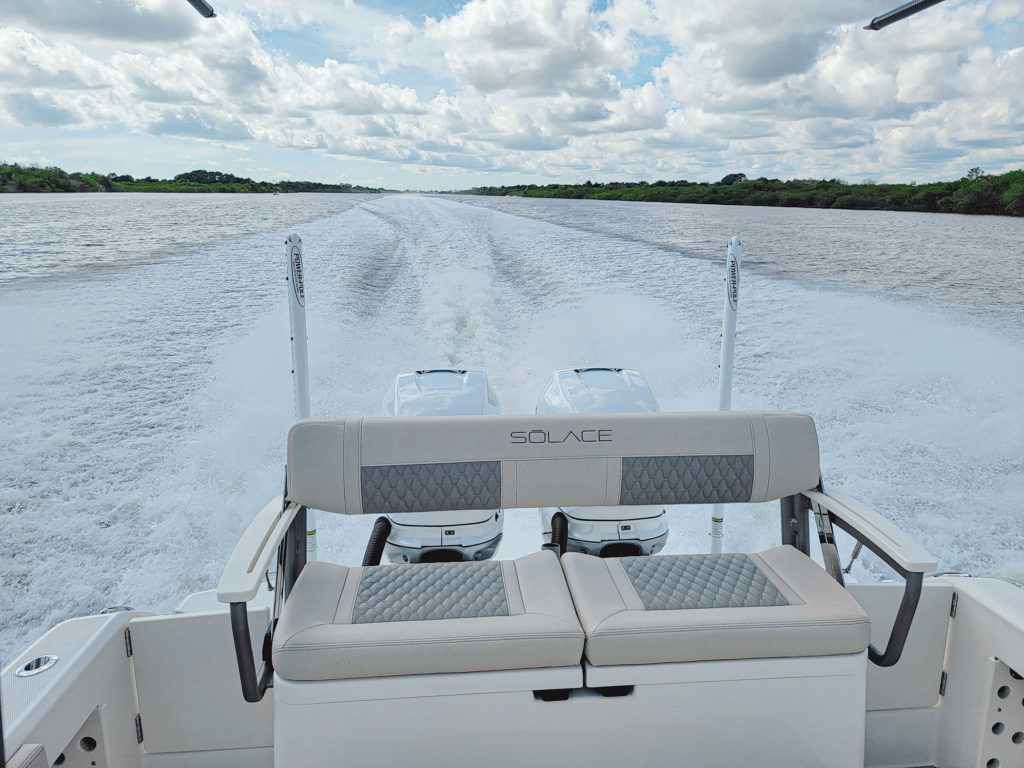
The majority of hybrids are single-engine rigs, but there are a few large models that have twins. In either case, most hybrid bay boats can be loaded with horsepower to provide cruises in the mid-30s to low 40s, with a top end over 50 mph not uncommon.
Opt for max power because larger motors can be run less aggressively to get the performance that would require higher, more-fuel-thirsty throttle settings on smaller motors. You’ll also get better midrange handling from larger, torque-ier models.
Electric Trolling Motors: Hybrids should include a bow-mount trolling motor, either factory or dealer installed, to make the most of their shallow drafts. These require 36-volt battery banks with an onboard four-bank battery charger. Lithium-oxide batteries weigh less than half of flooded cell batteries, are often used for added performance. But these require chargers with lithium-friendly charge profiles, so make sure the boat is so equipped.
Electronics: Radar, chirp fish finders and autopilot are must-haves for big-water adventures. Side-scanning sonar is considered critical for many inshore-angling scenarios. In all cases, having multiple MFDs is advantageous.
Pole Anchors: Some anglers consider Power Poles and MinnKota Raptors to be the best way to hold position in shallow water.
Upper Stations: A half-tower with an upper station will prove useful in both offshore and inshore sight-fishing situations.
Editor Says: If you were on a hybrid bay boat in years past and found it a bit too bumpy or wet for your liking, don’t let that experience cloud your judgment regarding today’s boats. Both design and construction have come a long way in the past decade or so, and modern hybrids are far smoother, drier, and more comfortable in a sea than those of yesteryear. -Lenny Rudow, Freelance Writer, Fishing Group
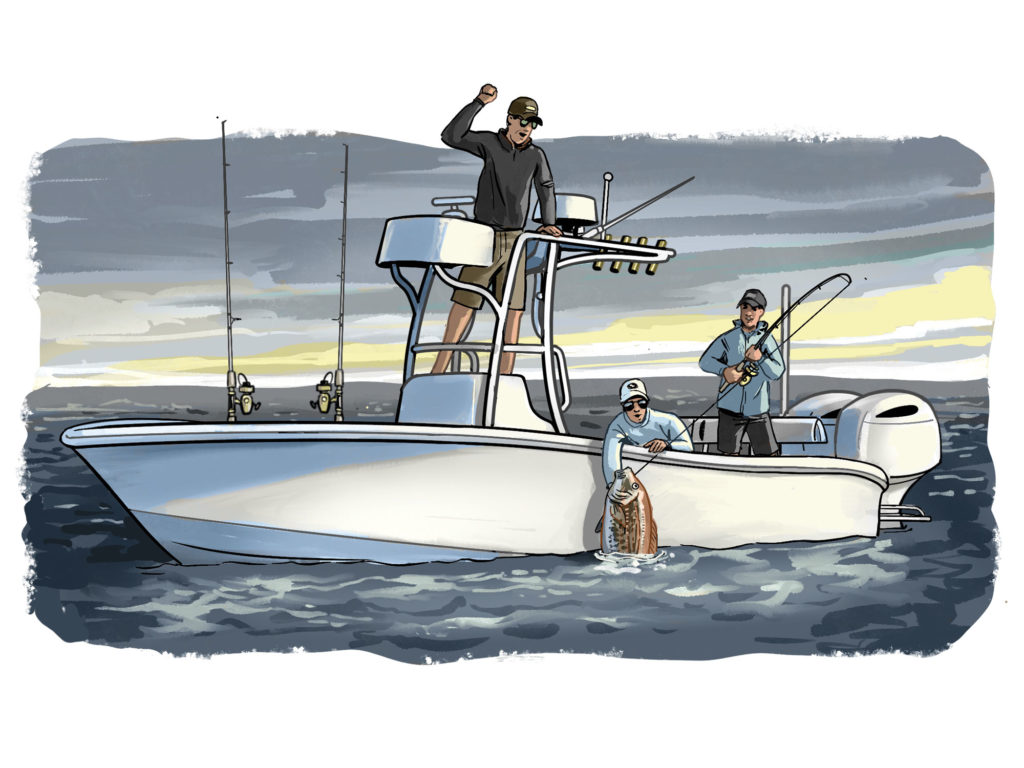
Versatile Vessels In- and Offshore
Hybrid boats bridge the gap between dedicated offshore rigs and smaller inshore boats, allowing anglers to target a variety of species. The twin engines on the vessel above allow those anglers to reach the snapper grounds quickly, and provide peace of mind. But the relatively shallow draft of the boat still permits them to chase snook, redfish, and other shallow-water species on days when the weather isn’t as cooperative. Ample rod holders, like the rocket launchers shown here, let anglers take whatever tackle is needed for both inshore and offshore fishing, so they’ll always have options. Adding a tower improves fish-spotting abilities and creates a well-rounded fishing machine fit for a variety of adventures.
Experts Say
The name of the game here is versatility. Hybrid boats can flats-fish without having to own a flats boat that’s no good offshore. Hybrid boats function well offshore without having to own an offshore boat that doesn’t work at all in the flats. Hybrids also offer all the necessary comforts of a good sandbar boat. —Chad Jaros, Crevalle Boats
A properly designed hybrid bay boat is equal parts inshore and nearshore/offshore boat and gives the angler the ability to choose which arena he or she wants to fish on any given day, with limited trade-offs. We design our boats so if the weather limits offshore fishing, you can still effectively fish in shallow water. —Charlie Johnson, Pathfinder Boats
Editor Says: Don’t be afraid to go big. The major downside to larger models is increased draft, which cuts into your shallow-water fishing access. But the difference in draft between a 24-foot and a 26-foot model, or between a 26-foot and a 28-foot model, is often just 1 or 2 inches. Offshore, however, 2 more feet of LOA can be a big advantage. -Lenny Rudow, Freelance Writer, Fishing Group
- More: 2023 Boat Buyers Guide: More Resources , Boats

EdgeWater 208CC Watchman

Seven Creature Comforts That Help Catch Fish

Grady-White Canyon 386
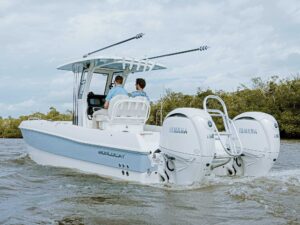
World Cat 235TE
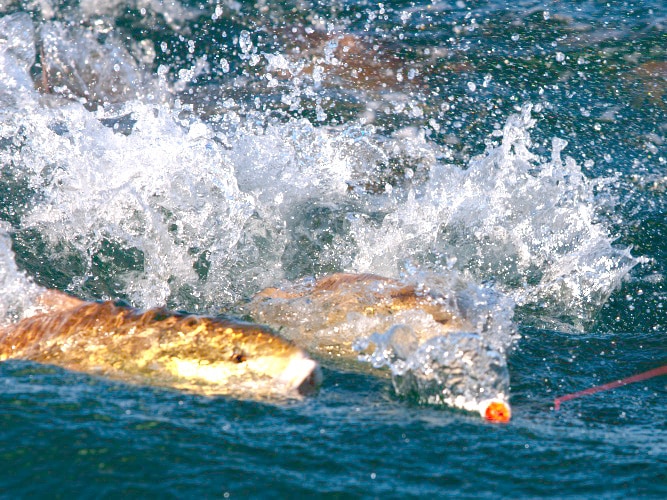
When to Crank Like Crazy

How Does a Fish Finder Work?

How to Best Fight Fish
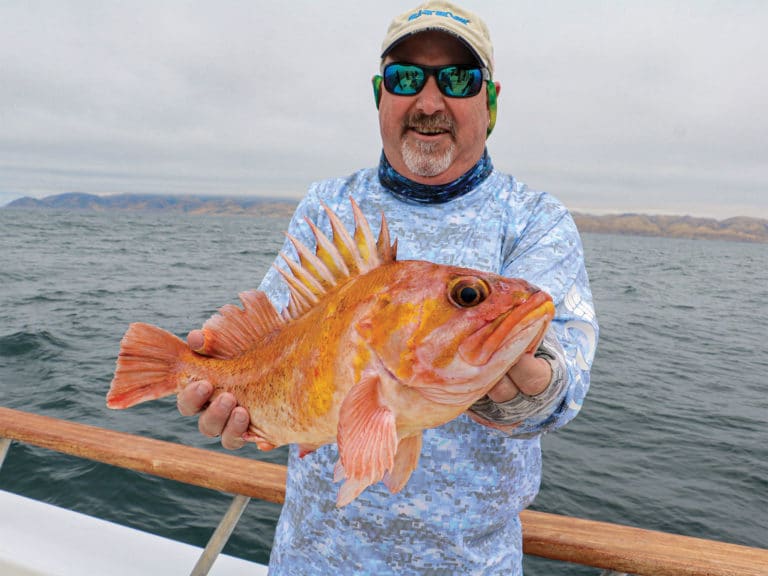
Where to Find the Best Fishing in July

- Digital Edition
- Customer Service
- Privacy Policy
- Cruising World
- Sailing World
- Salt Water Sportsman
- Sport Fishing
- Wakeboarding

The global authority in superyachting
- NEWSLETTERS
- Yachts Home
- The Superyacht Directory
- Yacht Reports
- Brokerage News
- The largest yachts in the world
- The Register
- Yacht Advice
- Yacht Design
- 12m to 24m yachts
- Monaco Yacht Show
- Builder Directory
- Designer Directory
- Interior Design Directory
- Naval Architect Directory
- Yachts for sale home
- Motor yachts
- Sailing yachts
- Explorer yachts
- Classic yachts
- Sale Broker Directory
- Charter Home
- Yachts for Charter
- Charter Destinations
- Charter Broker Directory
- Destinations Home
- Mediterranean
- South Pacific
- Rest of the World
- Boat Life Home
- Owners' Experiences
- Interiors Suppliers
- Owners' Club
- Captains' Club
- BOAT Showcase
- Boat Presents
- Events Home
- World Superyacht Awards
- Superyacht Design Festival
- Design and Innovation Awards
- Young Designer of the Year Award
- Artistry and Craft Awards
- Explorer Yachts Summit
- Ocean Talks
- The Ocean Awards
- BOAT Connect
- Between the bays
- Golf Invitational
- Boat Pro Home
- Superyacht Insight
- Global Order Book
- Premium Content
- Product Features
- Testimonials
- Pricing Plan
- Tenders & Equipment

92m hybrid electric Feadship Drizzle delivered to owner
The 91.8-metre Feadship superyacht Drizzle has now been delivered following successful sea trials in June. According to BOATPro , her final destination is Malta, an archipelago in the central Mediterranean.
The superyacht was last seen departing from the shipyard's facilities in Amsterdam (13 June). Built for a repeat Feadship owner who came to the project with "informed requests based on his long experience of yachting", Drizzle 's design is by Dutch studio Sinot and the owner's related design office.
Characterised by chamfered exterior contours and a more traditional flared bow, the yacht has a modern-classic style with naval architecture by Feadship De Voogt Naval Architects . Notably, she is the first Feadship to carry full Hybrid Electric Class notation.
Drizzle 's interior is designed to reflect an "understated family home" with natural materials and finishes throughout. Accommodation is found on the main deck, along with the large pool and open-air lounge shaded by the deckhead overhang.
Meanwhile, the owner's suite, family lounge and wellness area are situated on the upper decks. Up top, the sundeck serves as an observation vantage point with a forward-facing sofa and sun loungers, while the aft deck is used for storing two rescue tenders.
One of the owner's key requirements in building the yacht was to house a more spacious beach club in the stern, which occupies one-quarter of the total length of the lower deck. The large, fixed stern platform combines with two fold-down platforms to create 165 square metres of water-level lounging space. Sweeping staircases on either side of the stern platform lead to the main deck aft.
Between the engine room and the beach club is a side-loading garage with room for two 10-metre tenders, a ski boat and various water toys. Forward is the crew area, comprising the galley, crew mess and crew accommodation.
Drizzle carries full Hybrid Electric Class notation, the power package comprising two main engines and shaft-driven fixed pitch propellers, coupled with electric motors of 560kW each and 1MW of Li-ion batteries. The e-motors work as shaft generators to produce electricity to serve the hotel load or recharge the battery bank, as well as for low-speed navigation while the generators or batteries generate the required electrical power.
Albert Abma, Feadship project manager, commented on the launch in April: "Working with the experienced owner, designers and owner's team has been a professional pleasure. Gathering the operational experience of the owner's team with the yard’s building experience has resulted in this modern-classic, state-of-art and full-custom new Feadship".
The news comes closely after the first proper sighting of Project 713 , Feadship's first solar powered superyacht. She is now preparing for sea trials.
Sign up to BOAT Briefing email
Latest news, brokerage headlines and yacht exclusives, every weekday
By signing up for BOAT newsletters, you agree to our Terms of Use and our Privacy Policy .
More about this yacht
Similar yachts for sale, more stories, most popular, from our partners, sponsored listings.
- 2024 BOAT BUYERS GUIDE
- SHALLOW WATER FISHING
- Email Newsletters
- Boating Tips
- Boating Safety
- Electronics
- Baits & Lures
- Fishing Tackle
- Fishing Travel
- Conservation
- Fishing Knots
- Women in Fishing

Best Hybrid Bay Boats for Inshore and Offshore Fishing
- By Chris Woodward
- Updated: May 23, 2024
Bay boats exploded in popularity during the last decade, as many anglers sought to fish the middle zones between blue water and emerald flats. But more and more often bay anglers coveted bluebird days when they could creep offshore. They longed for a do-it-all fishing machine — something that felt more at home in rough seas yet still allowed them to plink around docks and grass flats.
Enter the hybrid bay boat. A few boat manufacturers stretched their models to 25 feet, and then 27 and now, at least one bay boat on the market tapes out at almost 28 feet LOA, and several can be powered by twin outboards. But it’s not just length that sets this breed apart. Some hybrid bay boats offer a full transom while preserving a forward casting deck; some builders have added interior gunwale height, still others have opted for full-height helm enclosures.
Anglers now have an ever-widening range of options. In your search, it might be tempting to simply seek out the best bay boat for the money, but we can all agree that cost is not the only parameter. Most importantly, buy a boat based on your fishing needs. Here are 15 of the best hybrid bay boats that transition from inshore to offshore fishing. They’re listed from the shortest to the longest LOA.
Grady-White 251 Coastal Explorer
Scout 251 xss, contender 25 bay, barker 26 open, sea cat 260, yellowfin 26 hybrid, jupiter 25 bay, parker 26 sh, regulator 26xo, pathfinder 2700 open, sea vee 270z, tidewater 2700 carolina bay, everglades 273cc, caymas 28 hb, blue wave 2800 makaira.
– WATCH OUT FOR CARBON MONOXIDE – Learn the signs and symptoms of carbon monoxide poisoning, such as headache, nausea, and dizziness. Immediately seek fresh air and medical assistance if anyone exhibits these symptoms. Safety Tip Provided by the U.S. Coast Guard
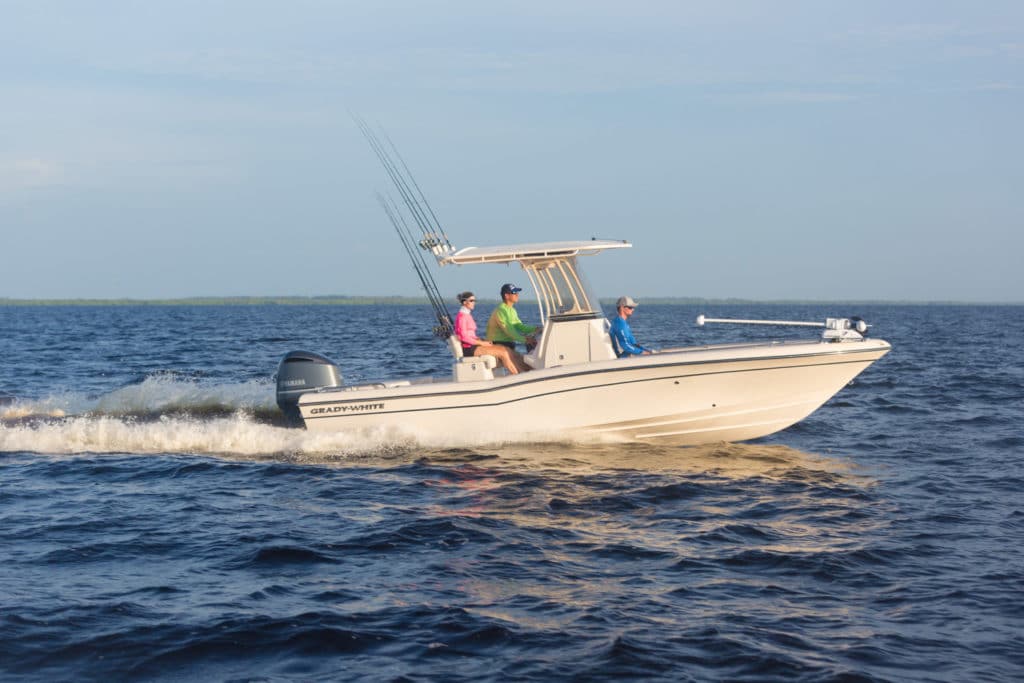
When Grady introduced the 251 Coastal Explorer in 2014, it kept the sharp entry and continuously variable-V hull characteristic of the company’s offshore boats. It also features 20 inches of aft cockpit depth, which is greater than most traditional bay boats. On the other hand, the 251 offers casting platforms fore and aft that convert to seating, and it floats in 14 inches of water.
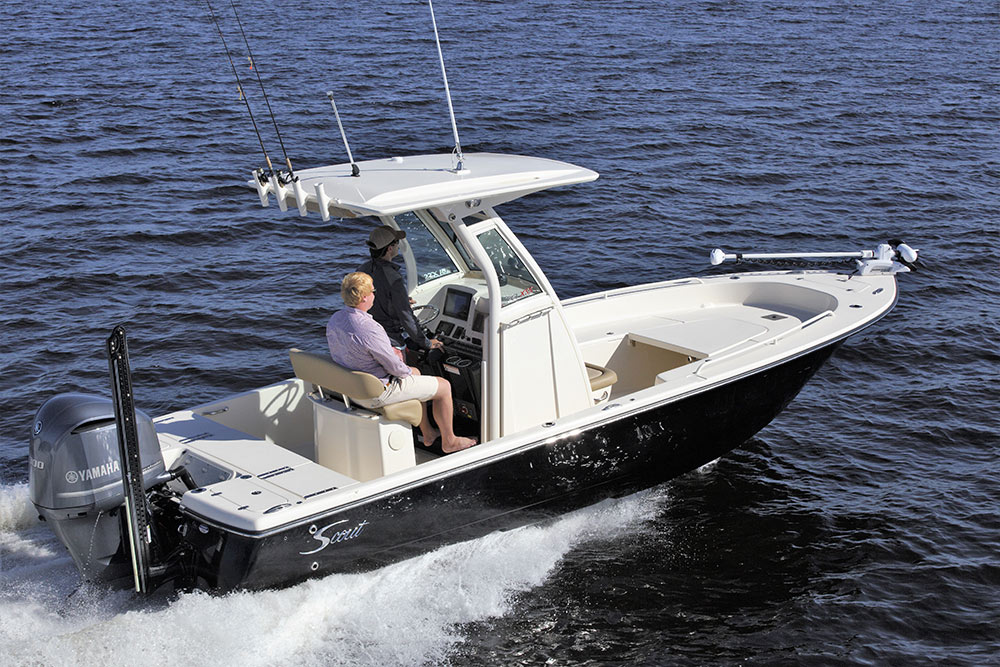
Scout redesigned the bottom of the original 251 XS to make it a dual-stepped hull versus single-stepped. The current XSS version also features a proud bow, glass-enclosed helm, and a slightly deeper deadrise than many traditional bay boats. For inshore fishing, Scout offers a casting-deck extension that can convert to a table. The well-appointed 251 also floats in just 13 inches of water.
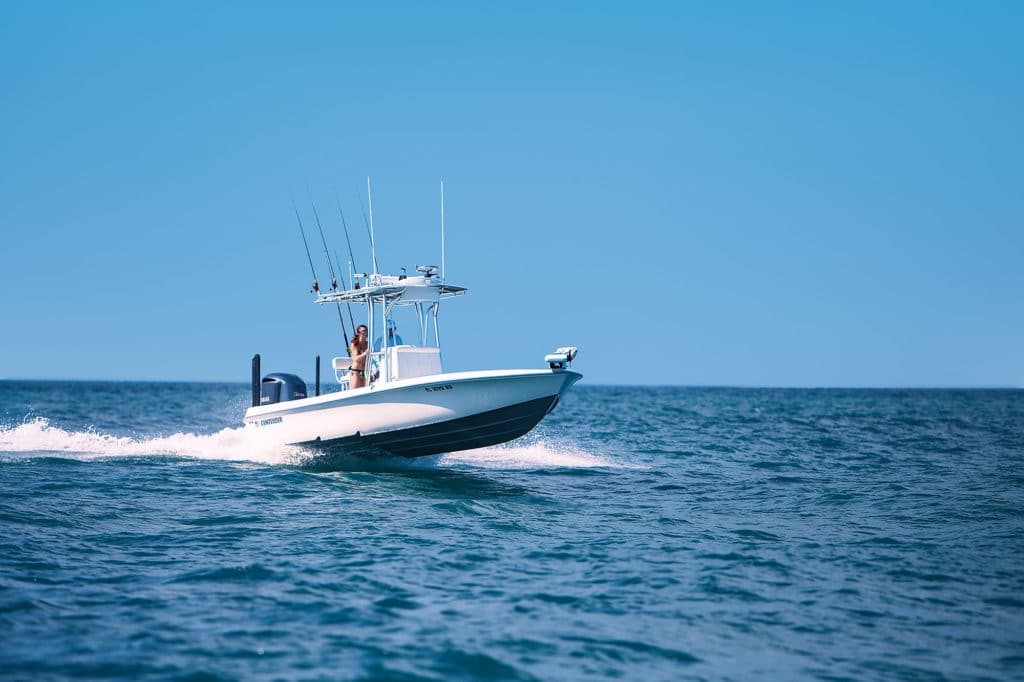
Standout standard features on Contender’s bay boat include spacious casting platforms fore and aft, covering boards and bolster pads surrounding the cockpit, two livewells — 40- and 12-gallon capacity — and twin rod lockers. Drawing just 12 inches of water, the 25 Bay floats shallower than most, but its twin-stepped hull makes the boat efficient and fast offshore.
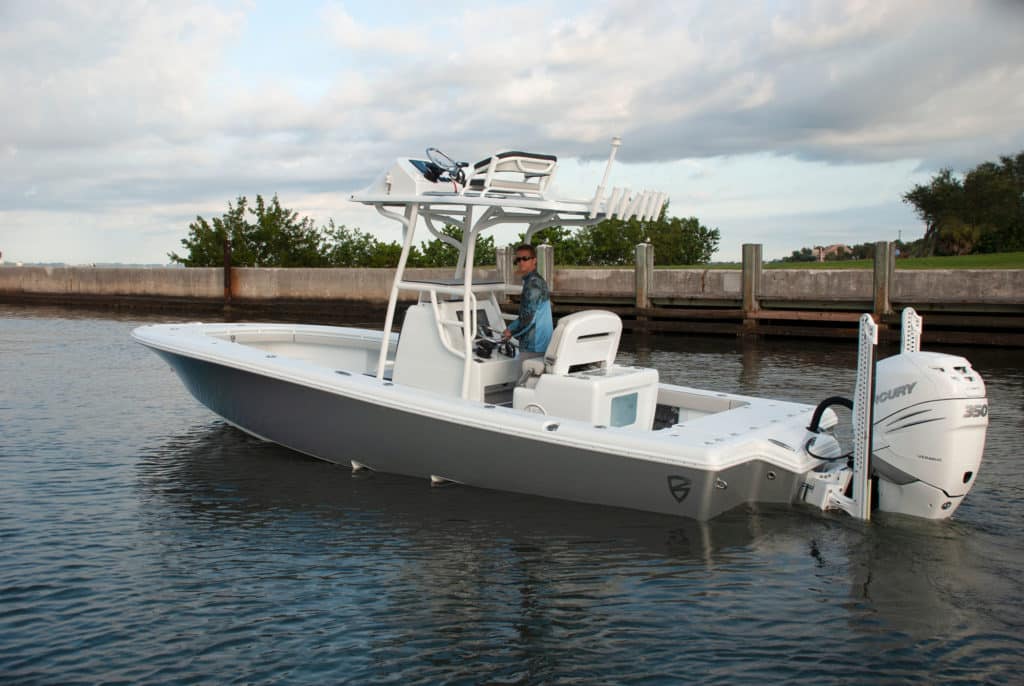
This Michael Peters-designed and patented Stepped-Vee Ventilated Tunnel hull has the lowest drag coefficient of any monohull, which makes it faster with better handling, improved fuel economy and a better ride, Barker says. The 26 Open features a deeper cockpit with a minimal aft casting deck and 60 gallons of livewell capacity. Opt for a full second station for spotting redfish or tuna birds.
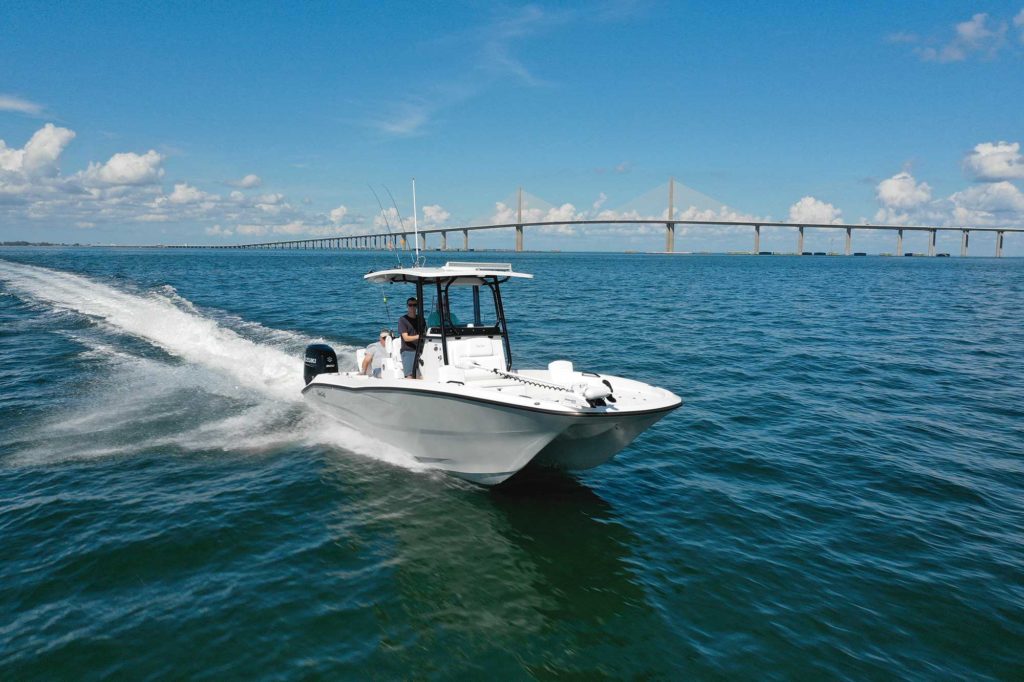
With its multihull design, the Sea Cat 260 naturally handles twin outboards and features higher gunwales for offshore capability. But it also offers a large forward casting platform (trolling motor optional) and it floats in 14 inches of water. The twin 25-gallon transom livewells offer plenty of bait storage for offshore adventures.
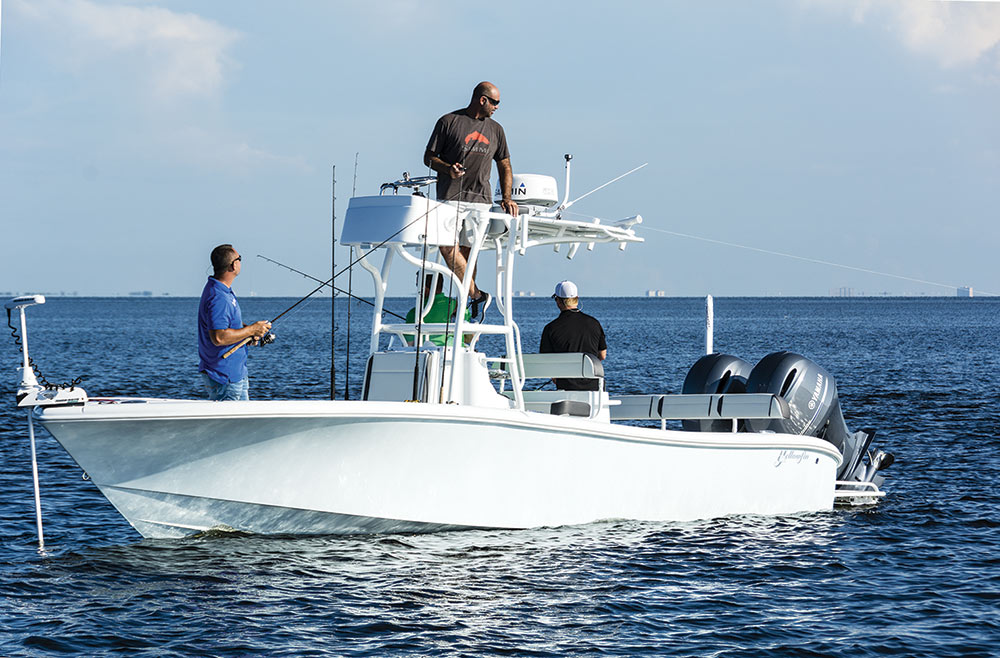
Yellowfin’s 26 Hybrid offers 21 inches of aft cockpit depth and a sharp 60-degree entry with 20 degrees of deadrise at the transom. Drawing 15 inches of water with a single outboard and 18 with twins, it can drift deeper flats inshore or post up on shallow canals and ledges. Fishing features include large livewells, oversize insulated fish boxes and a second station option.
– CHECK THE WEATHER – The weather changes all the time. Always check the forecast and prepare for the worst case. Safety Tip Provided by the U.S. Coast Guard
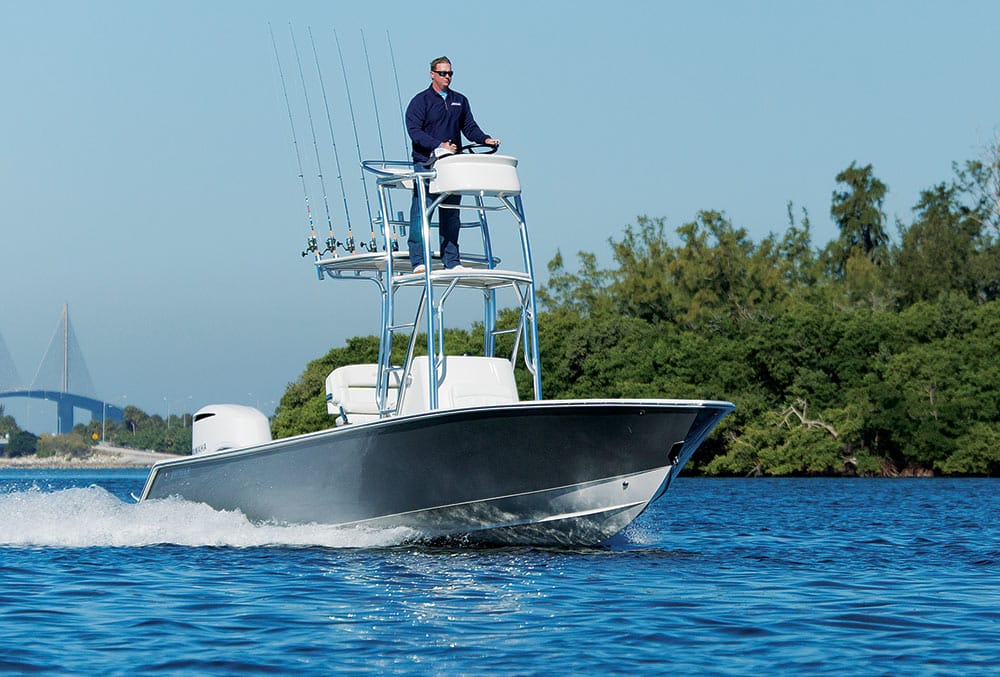
Jupiter says it applied the lines of its bigger offshore boats to this bay boat to give it the design and functionality to handle challenging seas. The company eliminated fore and aft casting decks, which become unsuitable in any kind of sea. Aft cockpit depth measures 22 inches. At the bow, the deck lies 25 inches below the gunwale. A 40-gallon livewell and 110 gallons of insulated fish boxes top the list of angling features.
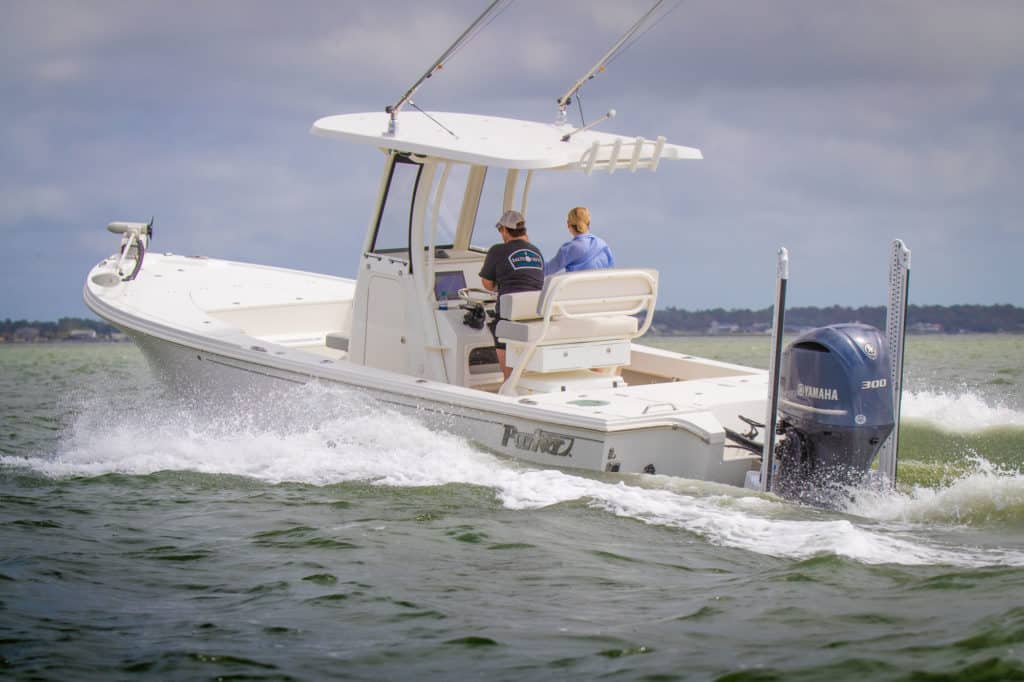
Parker says it spent two years creating this hybrid bay boat, giving it ample inshore fishing space fore and aft with broad platforms, yet creating enough beam and gunwale height for added safety when venturing offshore. The 26 SH also features twin 30-gallon recirculating livewells, lockable storage and a large fish box.
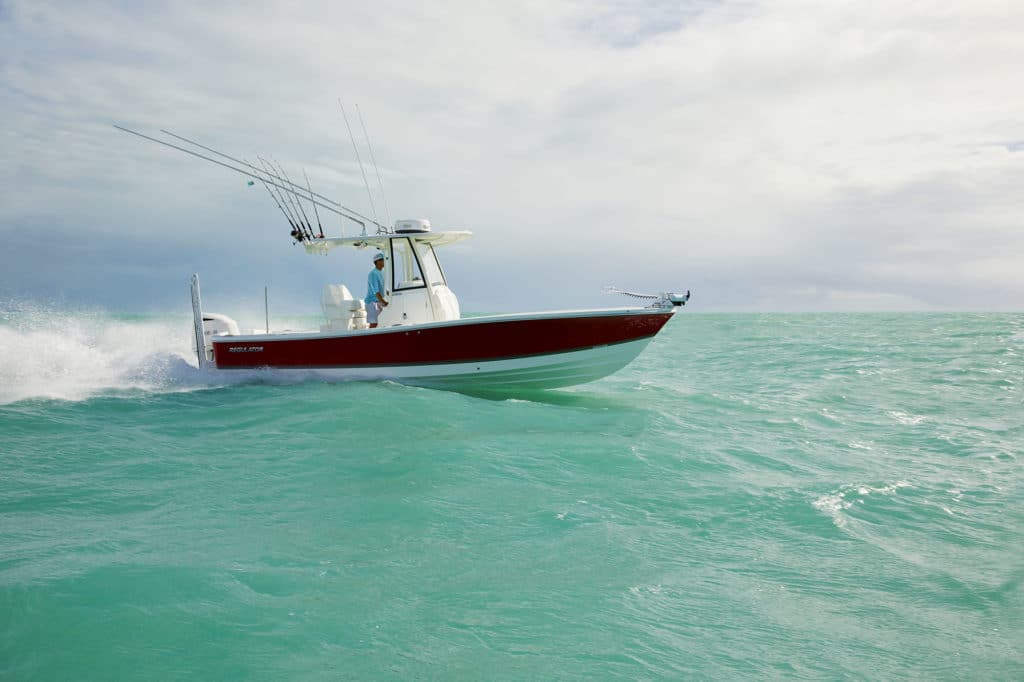
The Regulator 26XO features a standard fiberglass hardtop with an integrated windshield, reminiscent of Regulator’s 41-footer. It offers a broad forward casting deck and smaller aft deck with an elevated lip. Cockpit depth aft measures 19 ¼ inches. The 26XO measures more than 26 feet in length and sports 9 feet 3 inches of beam, making it a stable platform and one that’s still capable of floating in under 16 inches of water.
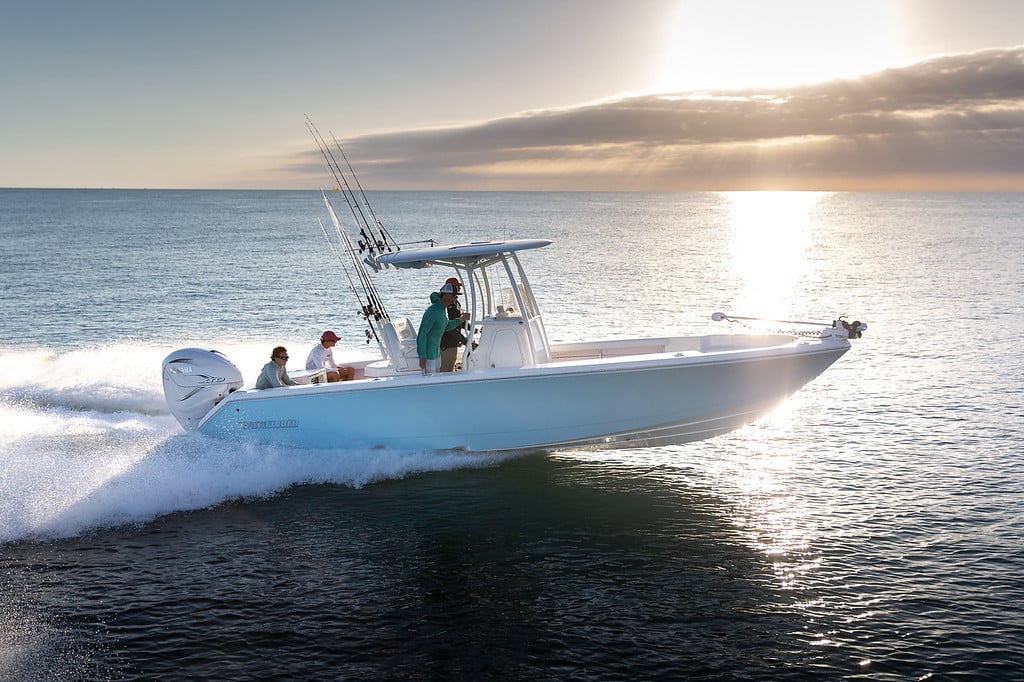
The double-stepped hull Pathfinder 2700 Open features a true hybrid deck layout, the company says. The aft cockpit remains open like an offshore center console but there’s a raised foredeck for casting and castnetting. Fishing features include a 42-gallon leaning-post livewell and a 22-galllon aft well, plus three fish boxes. Pathfinder’s VARIS vacuum-infusion technology keeps the 27-footer relatively light at 4,934 pounds with engine.
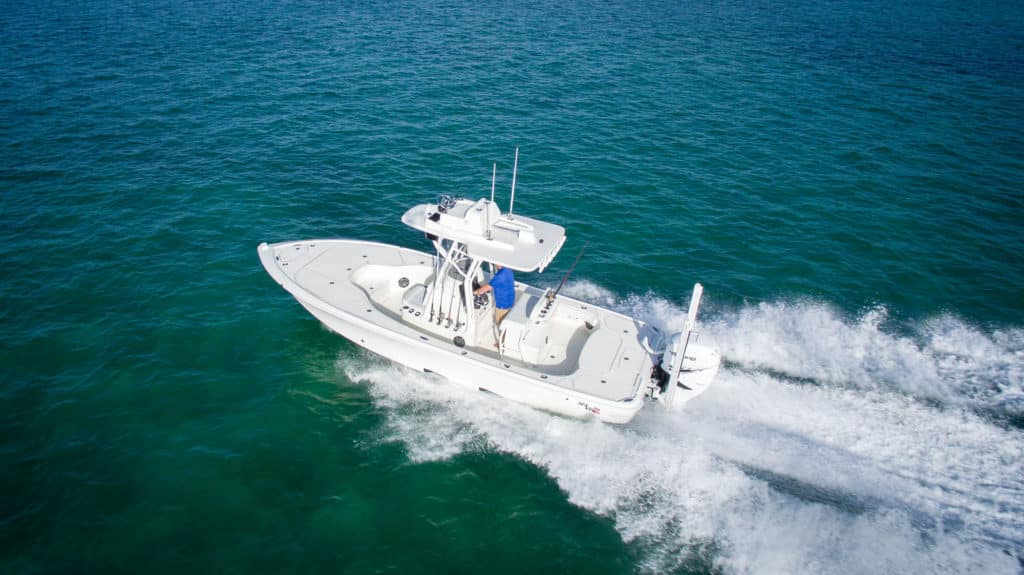
In 2014, the 270Z — at 27 feet LOA — emerged as the largest bay boat to date. With its award-winning stepped-hull design, the boat handles open water well; it easily fishes five anglers and remains stable at rest. The broad foredeck rises more than 20 inches above the main deck. The aft casting platform measures 98 inches wide and 42 inches along the centerline. The jack plate and 15-inch draft allow this boat to motor across shallow flats.
– TOW LIKE A PRO – Remember to leave extra stopping room when trailering your boat. At the ramp, be considerate of others but take the time you need to launch and recover your boat safely. Always check tie-downs, safety chains, lights – and the drain plug. Safety Tip Provided by the U.S. Coast Guard
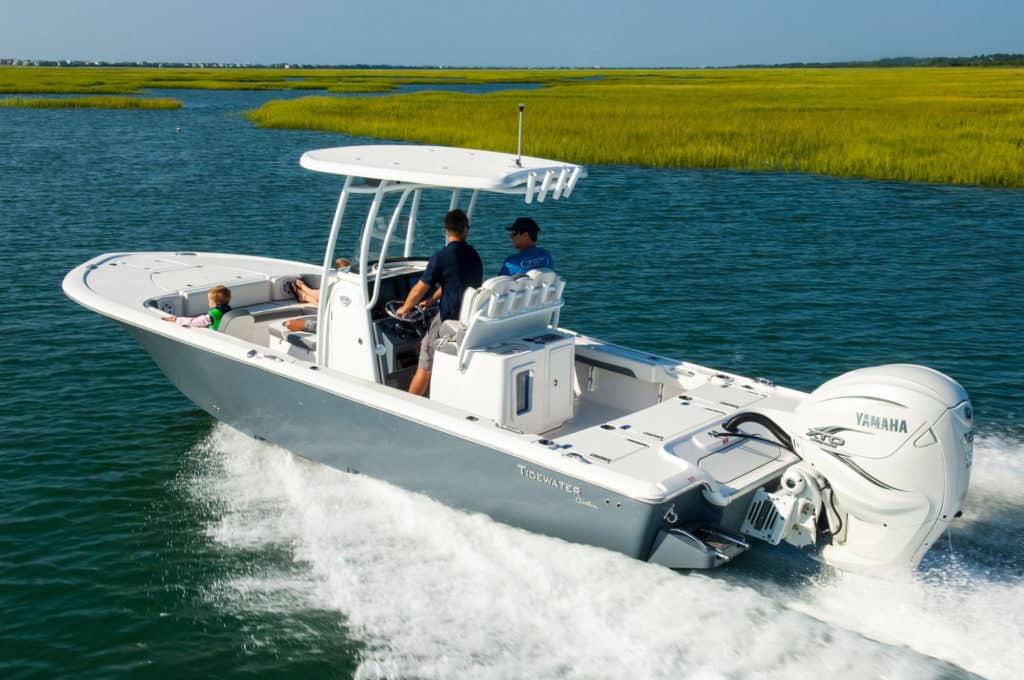
Tidewater says its stepped-hull 2700 Carolina Bay combines the capabilities of a full-featured center console with shallow-water fishability and the amenities of a deck boat. It features fore and aft casting platforms and an aquarium-style livewell aft of the leaning post. The 2700 can be powered with a single outboard or twins and offers 141 gallons of fuel capacity.
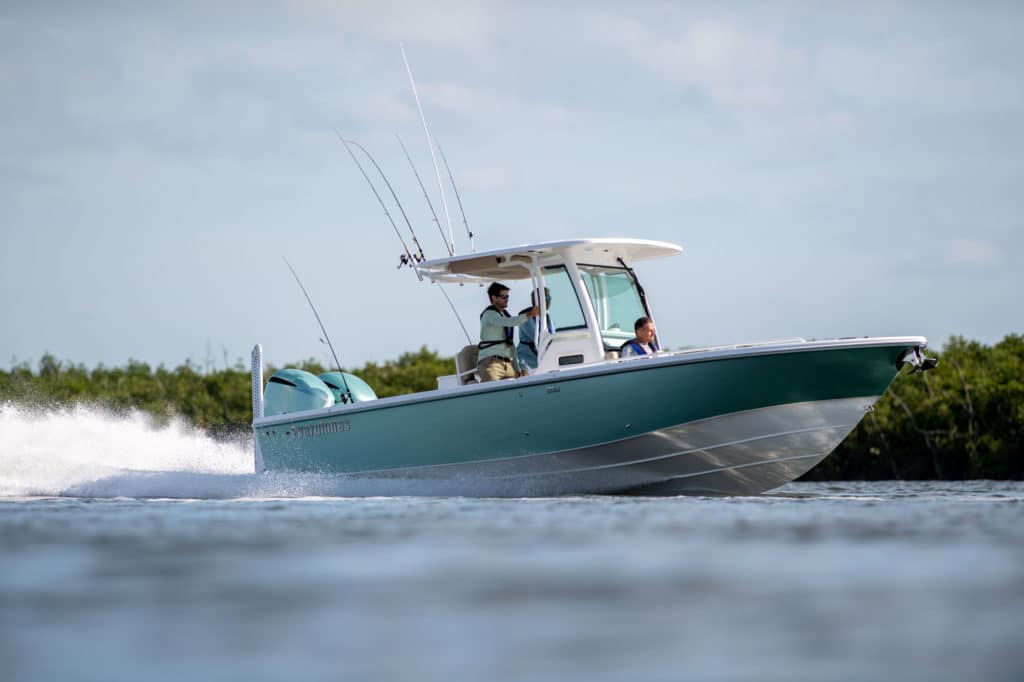
The Everglades 273cc features an 18-inch draft that creates a compromise between smaller bay boats that float in 12 to 14 inches of water and more aggressive deep-Vs that need 24 inches. The 20 degrees of transom deadrise and proud bow assist in offshore capability, and the expansive aft deck offers height and ease of casting inshore. Power this hybrid with a single outboard or twins up to a max of 600 hp.
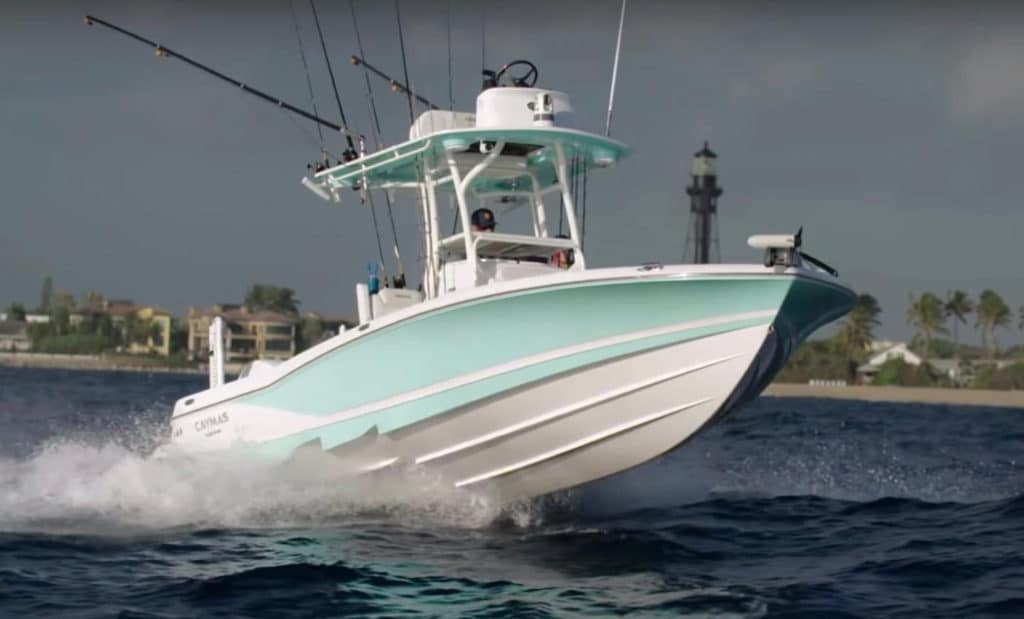
A Michael Peters designed hull, the Caymas 28 HB offers a broad casting deck forward and a fishable aft deck. The 24 ½-inch freeboard and the 9-foot-4-inch beam give it security and stability outside the bay, and the 17-inch draft and jackplate allow it to float over inshore flats. The 28 HB can be rigged with a single outboard up to 450 hp; it carries 120 gallons of fuel.
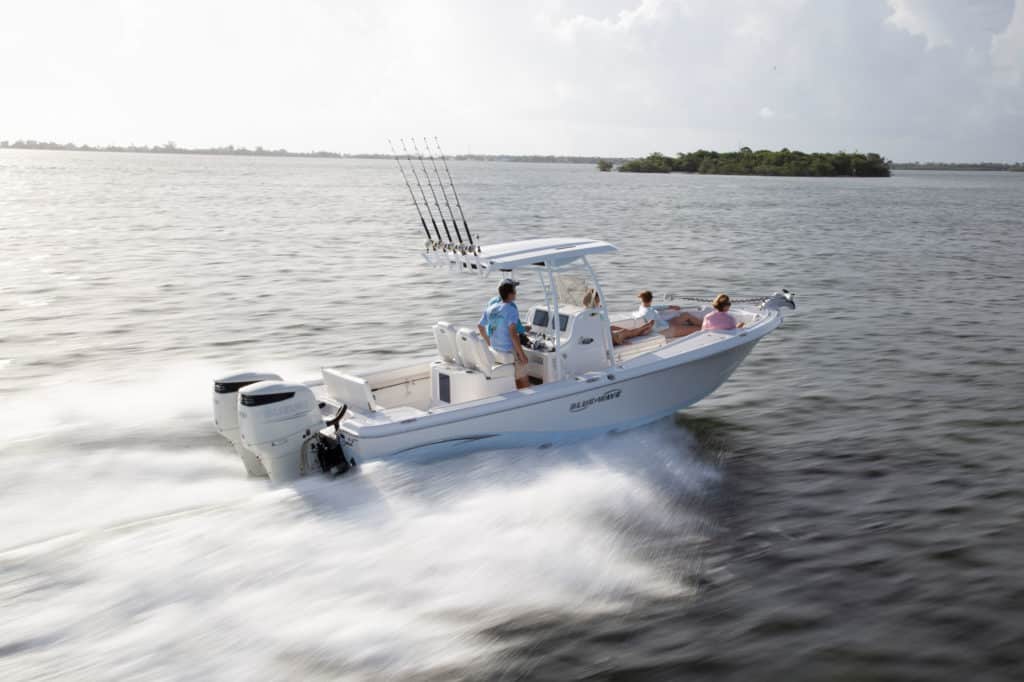
Blue Wave Boats says its 2800 Makaira features a cockpit that rivals many of the 30- to 33-foot center consoles on the market. At the same time, the near-28-footer still manages an aft platform because the deck design lacks a splashwell. The bow wraparound seating easily transforms into a forward casting platform complete with a pitchwell. Other fishing amenities include lockable rod storage and livewells throughout. The Makaira can carry anything from a single 350 hp outboard to twin 300s.
- More: Bay Boats , Boat Reviews , fishing boats , Fishing Machines
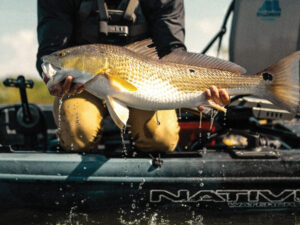
Best Kayaks for the Marsh

Small Boats for Offshore Fishing

What’s Good Fuel Economy for a Fishing Boat?

Yamaha Releases New 350 Horsepower Outboard
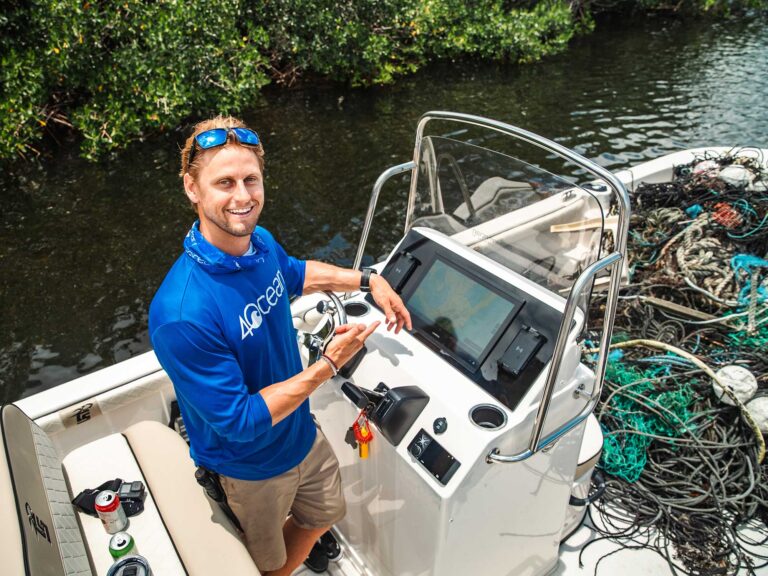
A Perfect Union
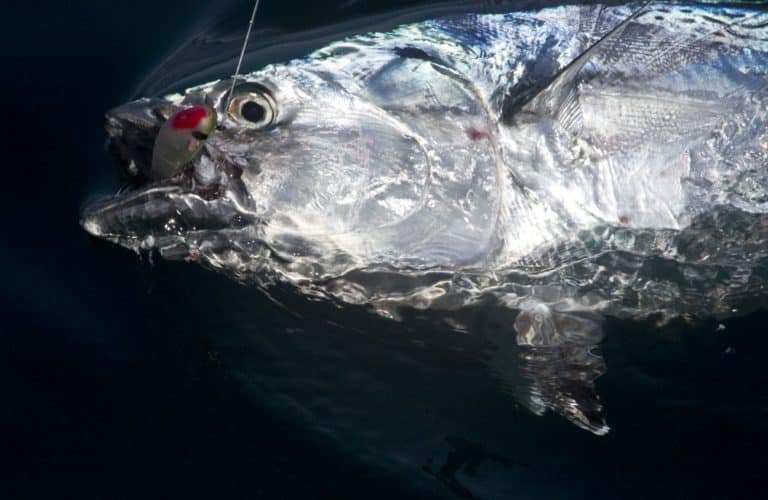
Three Underrated Sportfish You Should Target
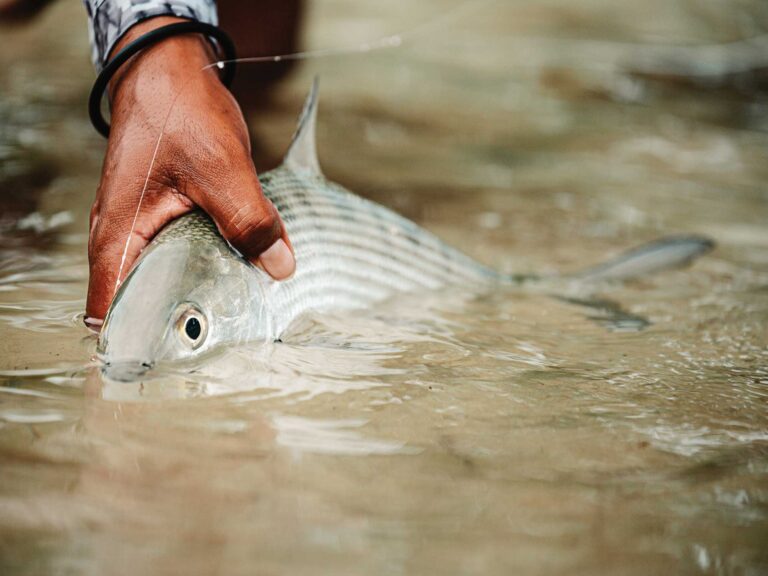
The Evolution of Bahamas Bonefishing
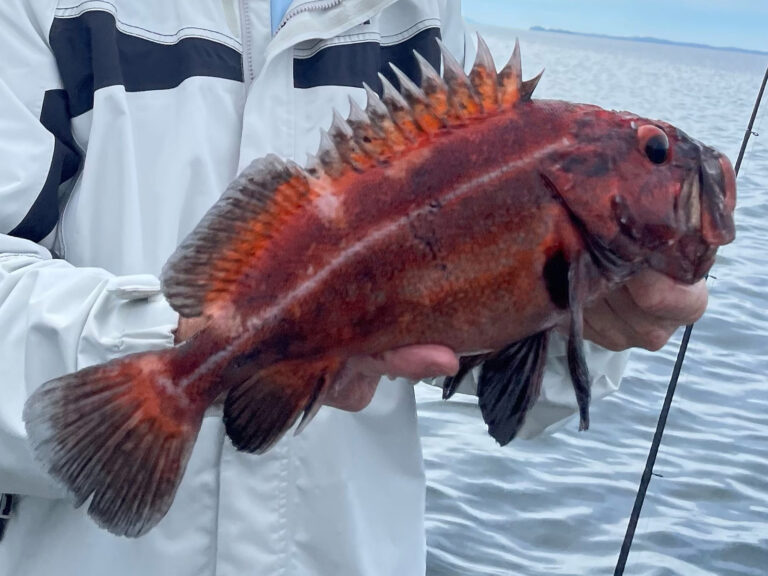
Fish Facts: Guess This Rockfish Species
- Privacy Policy
- Cruising World
- Sailing World
- Salt Water Sportsman
- Sport Fishing
- Wakeboarding
Many products featured on this site were editorially chosen. Sport Fishing may receive financial compensation for products purchased through this site.
Copyright © 2024 Sport Fishing Firecrown . All rights reserved. Reproduction in whole or in part without permission is prohibited.
We think you are located in <strong>Europe</strong><br>To ensure you are seeing career content relevant to your location, please select your correct region using menu on the right
United States & Canada
Eastern Europe & CIS
Turkey, Africa & Middle East
Latin & South America
South East Asia & India
North East Asia
Greater China
FIND YOUR HYBRID SOLUTION THAT MEETS YOUR INDIVIDUAL NEEDS
Hybrid systems for yachts, take your leisure to the next level with quiet, clean and intelligent solutions..
Make the most of your yachting experience with an mtu Hybrid PropulsionPack. Not only does hybrid power reduce on-board noise levels, emissions and vibrations, it also improves efficiency, dynamics and comfort. The components for onboard power and propulsion are modular and scalable. Each hybrid system can be individually designed to meet your requirements.
Enjoy the benefits of silent but highly efficient electric propulsion, exhaust emission-free anchoring – no smell, no smoke, no noise –, emission-free maneuvering in harbor areas, and an all-round environmentally friendly system.
Great maneuverability, E-power assisted propulsion
Comfortable
Silent, vibration-free operation
Meeting the newest emission regulations
Optimized maintenance and operation costs
Discover the mtu Hybrid PropulsionPack
SERIES 2000
Power Distribution Unit
mtu engine series 2000
Electric Machine
BatteryPack
SERIES 4000
mtu engines series 4000
Combining full performance with eco-friendly sustainability: Hybrid propulsion opens up a new generation of yachting experience
Discover the future for yacht propulsion in our use case - as flexible and sustainable as never before, with the same power
Use case Yacht hybrid propulsion
Hybrid solutions are among the keystones of a sustainable future. The power of a diesel engine, which allows top speeds, is combined with the sustainable, emission-and vibration-free comfort of an electric drive. The highlight, in addition to fuel and cost savings, is that with a hybrid system, yacht owners can explore waters previously off-limits to diesel drives with a clear conscience. The following use case shows you what such a journey might look like. Learn more in the use case about:
- How comfort and sustainability are strengthened by a hybrid system
- What flexibility hybrid systems allow on board
- How hybrid propulsion systems enable journeys into unique waters
Premium Yacht Service
Latest mtu Yacht Stories
From bridge to propeller from a single source
With Rolls-Royce now a single-source provider of all systems needed to power a yacht, maximum efficiency is assured.
by Lucie Maluck
London to Monaco to save the seas
The 8-strong pedaling team mtu Power4Seas is cycling all the way from London to Monaco to raise funds for the environmental organization Blue Marine Foundation.
by Wolfgang Boller
Green methanol for mtu marine engines
Heading for the future with e-methanol: Rolls-Royce develops high-speed mtu methanol engines as a game-changer for climate-friendly shipping.
by Peter Thomas
Speed, comfort, efficiency, locally emission-free - mtu Hybrid PropulsionPack
Rolls-Royce's mtu Hybrid PropulsionPack offers more than one way to design hybrid propulsion for ships. Adapted to the customer's wishes, it can not only ensure lower emission levels, but also silence on board - whether in the harbor or at anchor.
by Vanessa Bösch
Solution Guide
Marine & Offshore
Download (PDF 14 MB)
Yacht Brochure
Outstanding performance. Unique comfort. Inspiring experiences
Download (PDF 11 MB)
Related Content
Ship Automation Systems
Controlling power with intelligent electronics. As a systems supplier, we not only provide you with the perfect propulsion system, but also with automation systems that are adjustable to fit your needs.
Premium power deserves premium service. You should be able to cruise confidently, enjoying every moment along the way. That confidence starts with reliable mtu engines and continues with Premium Yacht Service.
mtu NautIQ Bridge
mtu NautIQ Bridge is a fully integrated bridge solution. This outstanding ensemble raises overall ship performance, improves safety and offers a new level of customer experience.
Connect with Us
Customer Assistance Center
We are here to take your Sales & Service questions around the clock, 365 days a year.
Sales & Service Locator
Find your local partner for Sales & Service.
mtu Stories
Reports and interviews about mtu products and solutions.
Upgrade your browser for full experience
It looks like you may be using a web browser version that we don’t support. Make sure you’re using the most recent version of your browser, or try using one of these supported browsers, to get the full mtu Solutions experience.
Mozilla Firefox
Google chrome, microsoft edge.
Don’t have permissions to change browser? Contact us and tell us what you’re looking for.
- Stageplaatsen
- Open Day 2024

Transforming your sailing yacht into an electric or hybrid yacht
Would you like to sail electric or hybrid? And are you curious whether your sailing yacht can be converted into a hybrid sailing yacht or even be fully electric? We are happy to help you. Together with Stok-electric, we offer completely custom-made solutions for converting sailing yachts into electric or hybrid sailing yachts. We have a suitable, custom-made solution for almost every sailing yacht: from 10kW to 200kW. Prepare your sailing yacht for the future by combining a refit with the installation of an electric or hybrid system. Contact us for a free consultation and read here about how we made the 56ft Truly Classic ‘Elysium’.
Is hybrid sailing the future?
Diesel engines are less and less sought after due to emissions and limitations. As a result, more and more sailors are motivated to exchange their old diesel engines for a cleaner and more attractive alternative such as electric and hybrid systems. We can bring beautiful sailing yachts that are 20 to 30 years old back to life by giving them a complete refit and converting them into a hybrid sailing yacht. We have also done this with the 56ft Truly Classic Corner Design, Elysium. Watch the video of the project below or read more about the advantages and disadvantages of a hybrid system here .
How does it work?
1. introduction and analyses, 2. starting the transformation, 3. sea trials & getting ready to go, more information about hybrid sailing.
Schedule an introductory meeting without any obligation by mail . We or the men from STOK Electric will contact you.
Stay informed:

Love Exploring
15 extraordinary superyachts setting sail in 2024
Posted: 19 March 2024 | Last updated: 7 July 2024
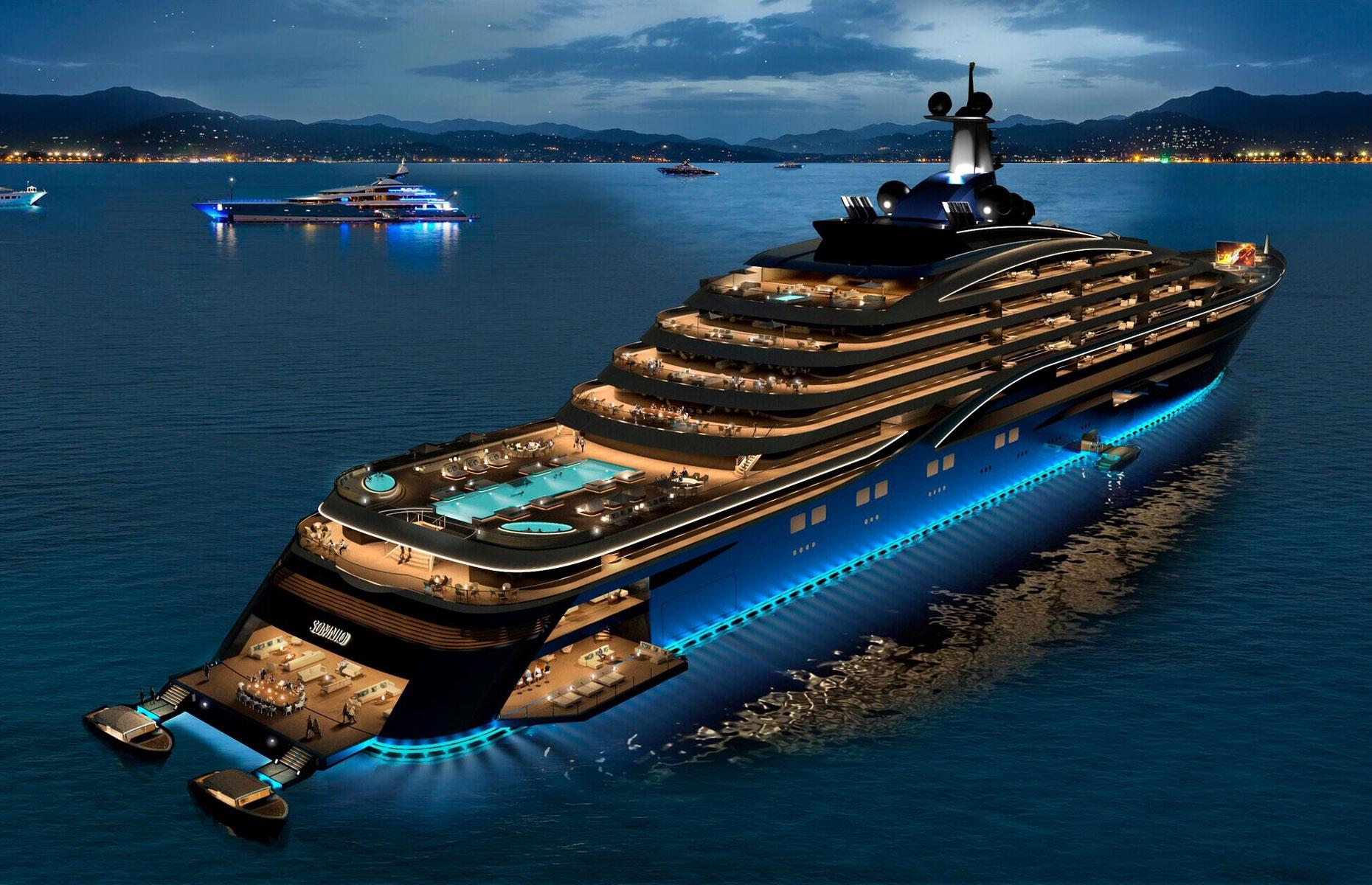
Breathtaking dream boats launching this year
Ready to discover the ultimate in nautical eye candy?
With the largest-ever superyacht poised to grace the high seas – and several other spectacular launches on the horizon – 2024 is tipped to be a truly unforgettable year for fans of floating palaces.
Jump aboard to discover the most hotly anticipated superyachts scheduled for delivery this year, from state-of-the-art explorers to a record-breaking model that's expected to cost a staggering $600 million (£470m). All dollar amounts in US dollars.

Custom YS 75 Hybrid: Cost unknown
Ushering in a new generation of high-end eco explorers, this expedition vessel from Damen Yachting in the Netherlands boasts a hybrid propulsion system for zero-emission cruising. For the uninitiated, a hybrid propulsion system uses two or more forms of propulsion, such as a biofuel or diesel engine combined with an electric machine.
As buyers become increasingly aware of environmental concerns, naval architects and yachtbuilders are devising green-leaning vessels that don't compromise on style, luxury, or performance. Damen is among the firms leading the way.
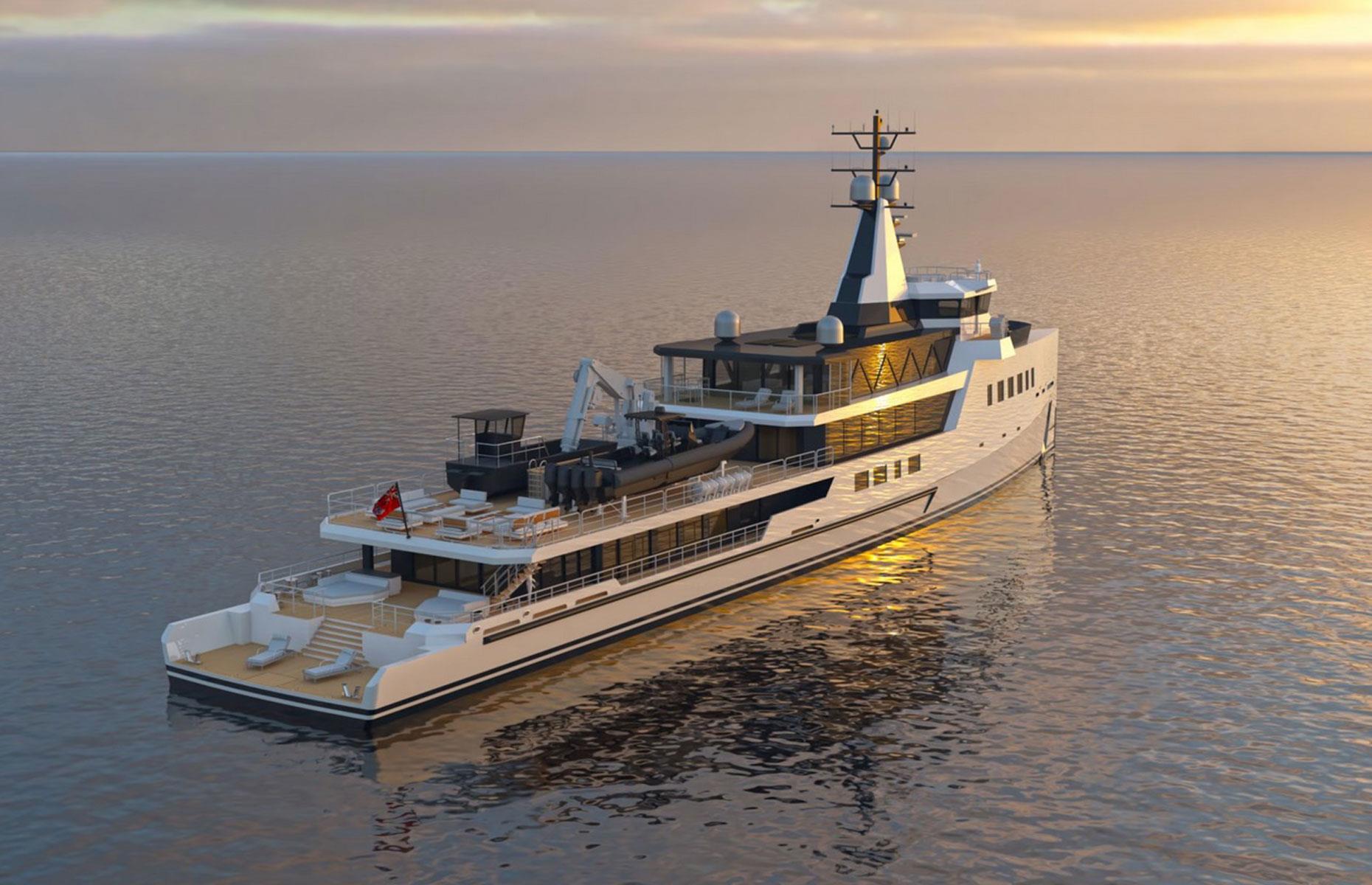
Designed by innovative London studio Michael Leach Design and engineered in-house, the 247-foot (75.2m) Custom YS 75 Hybrid has cutting-edge features, including a touch-and-go helipad and a crane for deploying tenders.
It can accommodate 24 crew members and up to 12 guests across six staterooms and boasts plush entertaining areas.
Due to launch early this year, the innovative vessel will also be the first private superyacht equipped with commercial-grade cultivation pods to grow vegetables, further adding to its eco credentials. As for the price tag? Damen is keeping it firmly under wraps...
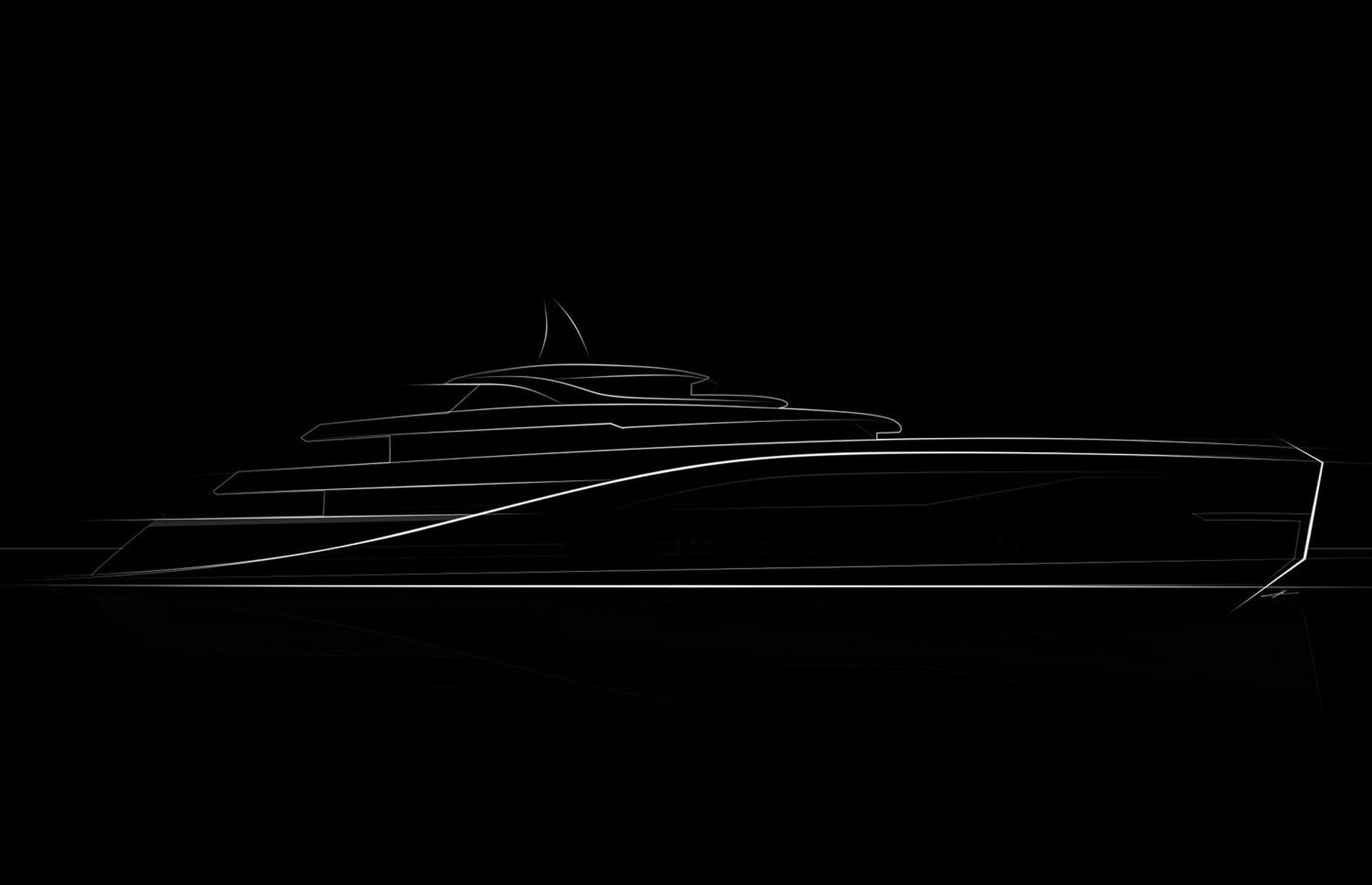
Blue Marlin and Custom 78: Cost unknown
Admiral Yachts, owned by The Italian Sea Group, is delivering two sensational superyachts this year, according to Boat International : the 256-foot (78m) Custom 78 a nd 253-foot (77m) Blue Marlin (pictured).
Sleek and elegant, Blue Marlin's exterior and interior are both the handiwork of prestigious Dutch studio Sinot Yacht Architecture and Design.
The superyacht accommodates 12 guests in six staterooms and offers them a wealth of amenities, including a 19-foot (6m) swimming pool, a private spa, and a helipad. Its more sustainable credentials include a lower-emission diesel-electric propulsion system.
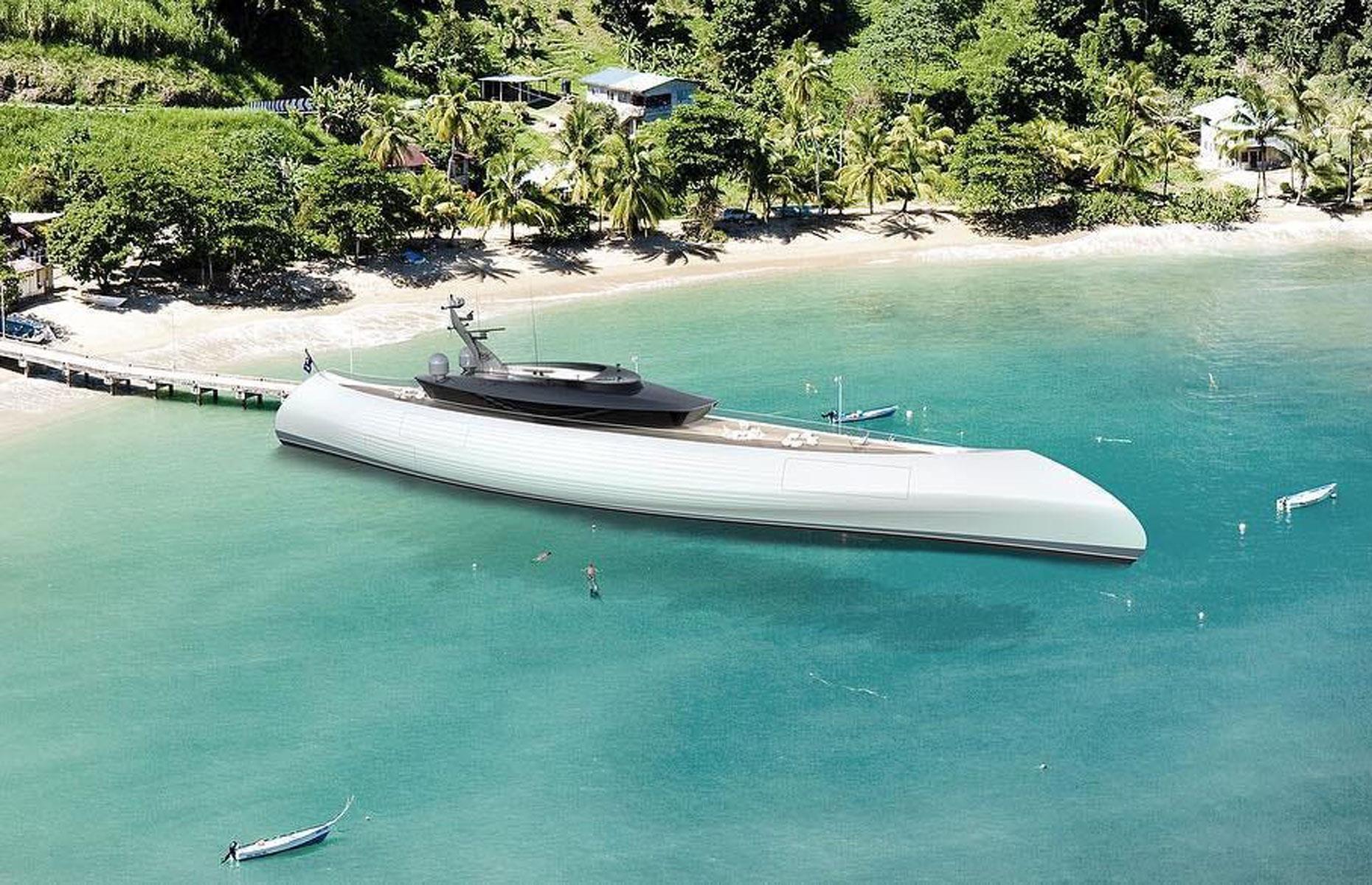
Precious little is known about Admiral's super-secretive Custom 78 project, as noted by Boat International .
It's known that the superyacht's exterior has been designed by Igor Lobanov, the Barcelona-based Russian nautical designer who's renowned for his futuristic, mega-streamlined creations. (An example of his work is shown here.)
Admiral has yet to disclose the price of either Custom 78 or Blue Marlin .
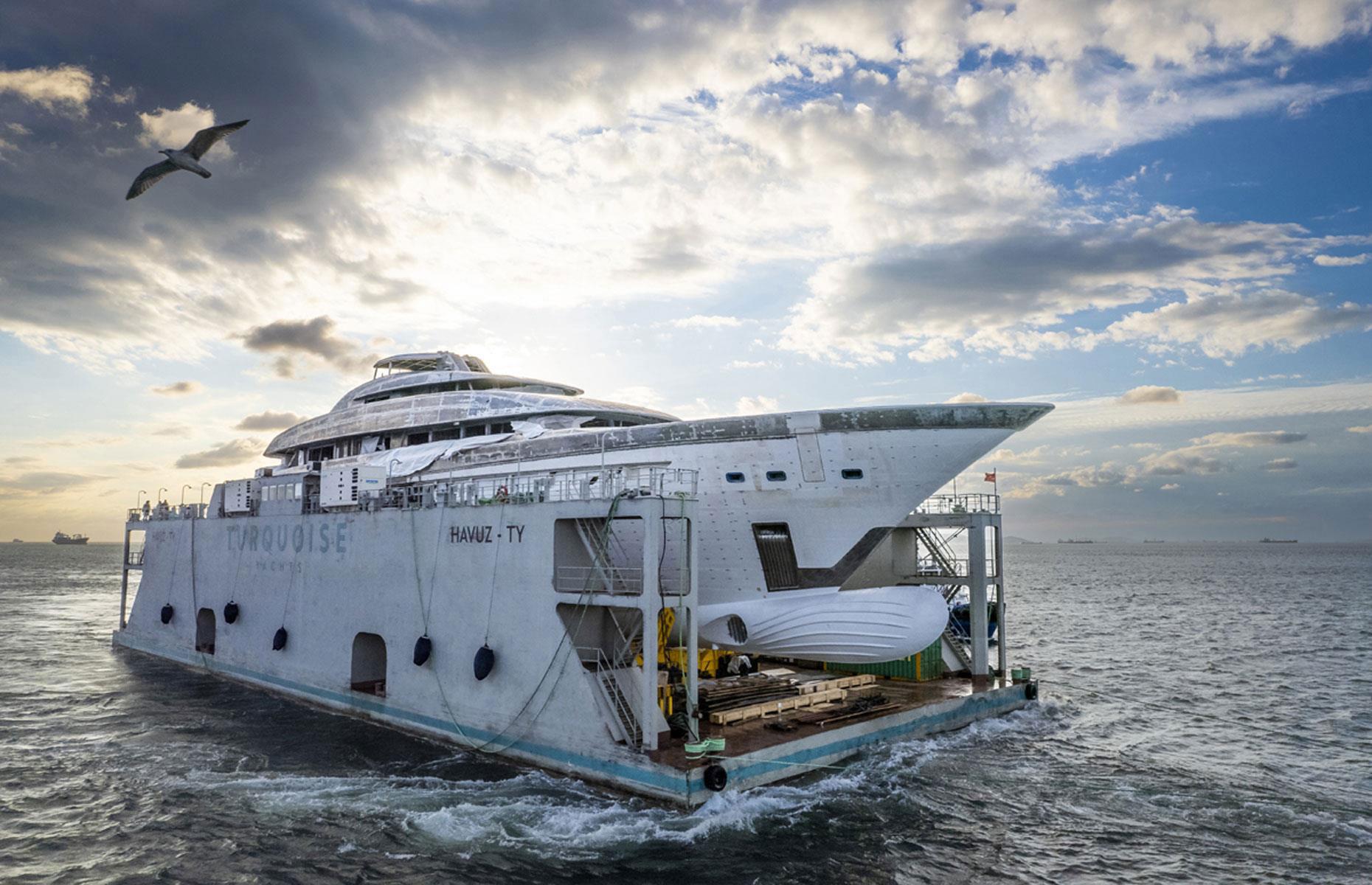
Project Toro: Cost unknown
Türkiye's Turquoise Yachts is getting ready to sign off the 259-foot (79m) Project Toro . It's actually running behind schedule and was supposed to be delivered last year.
With the exterior and interiors designed by British studio Harrison Eidsgaard – which is behind some of the world's most luxurious private jets, in addition to its portfolio of yachts – the end result will undoubtedly be a feast for the eyes.
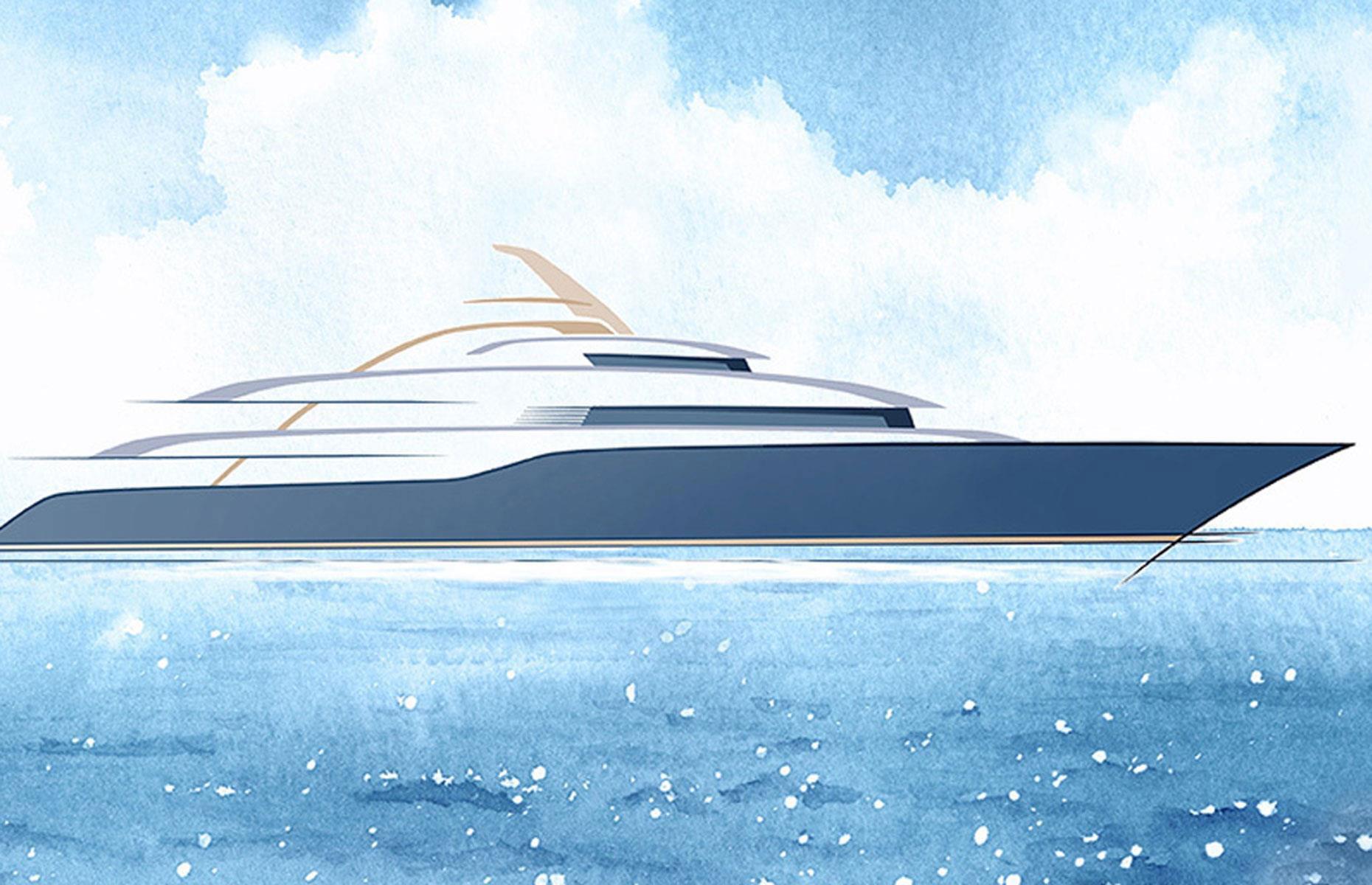
Project Toro's neoclassical exterior is a real head-turner, while its interiors – which apparently include "a huge Neptune Lounge", to quote Super Yacht Times – have been described by the design team as "the definition of serenity and calm".
The fully customised beauty, which was sold in 2021 for an undisclosed sum, can comfortably fit 14 guests in its seven staterooms, as well as providing space for 21 crew members. Amenities onboard include a beauty salon, gym, and swimming pool.
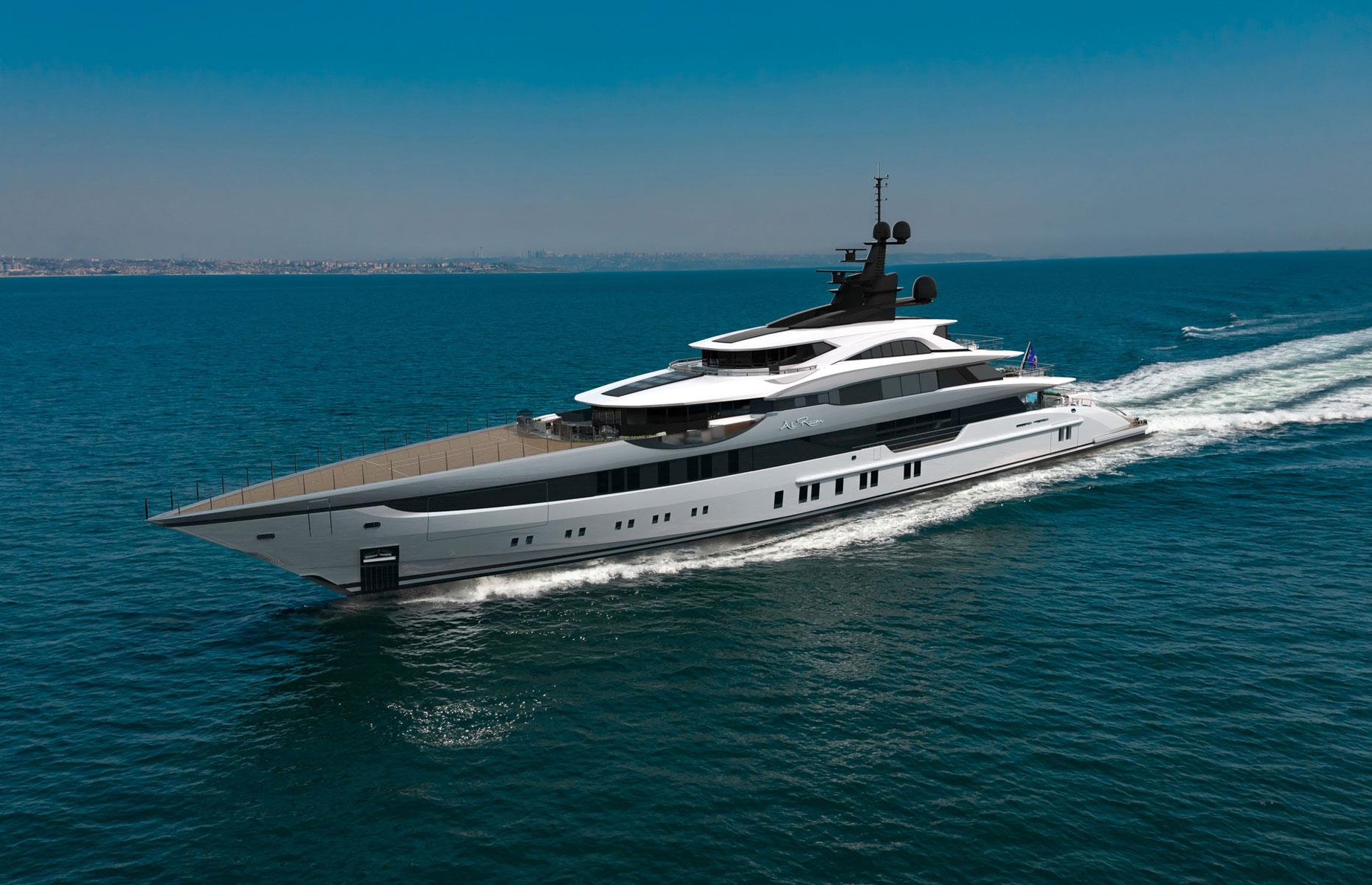
Al Reem: Cost unknown
Formally known as Silence , Al Reem is getting its finishing touches at the Bilgin shipyard in Türkiye's capital, Istanbul.
Spanning 263 feet (80m), the superyacht showcases Bilgin's signature style – think razor-sharp exterior lines and a super-slender profile – with naval architecture by Turkish studio Unique Yacht Design. It's the third unit of Bilgin's 263 Series and the most advanced of the trio.
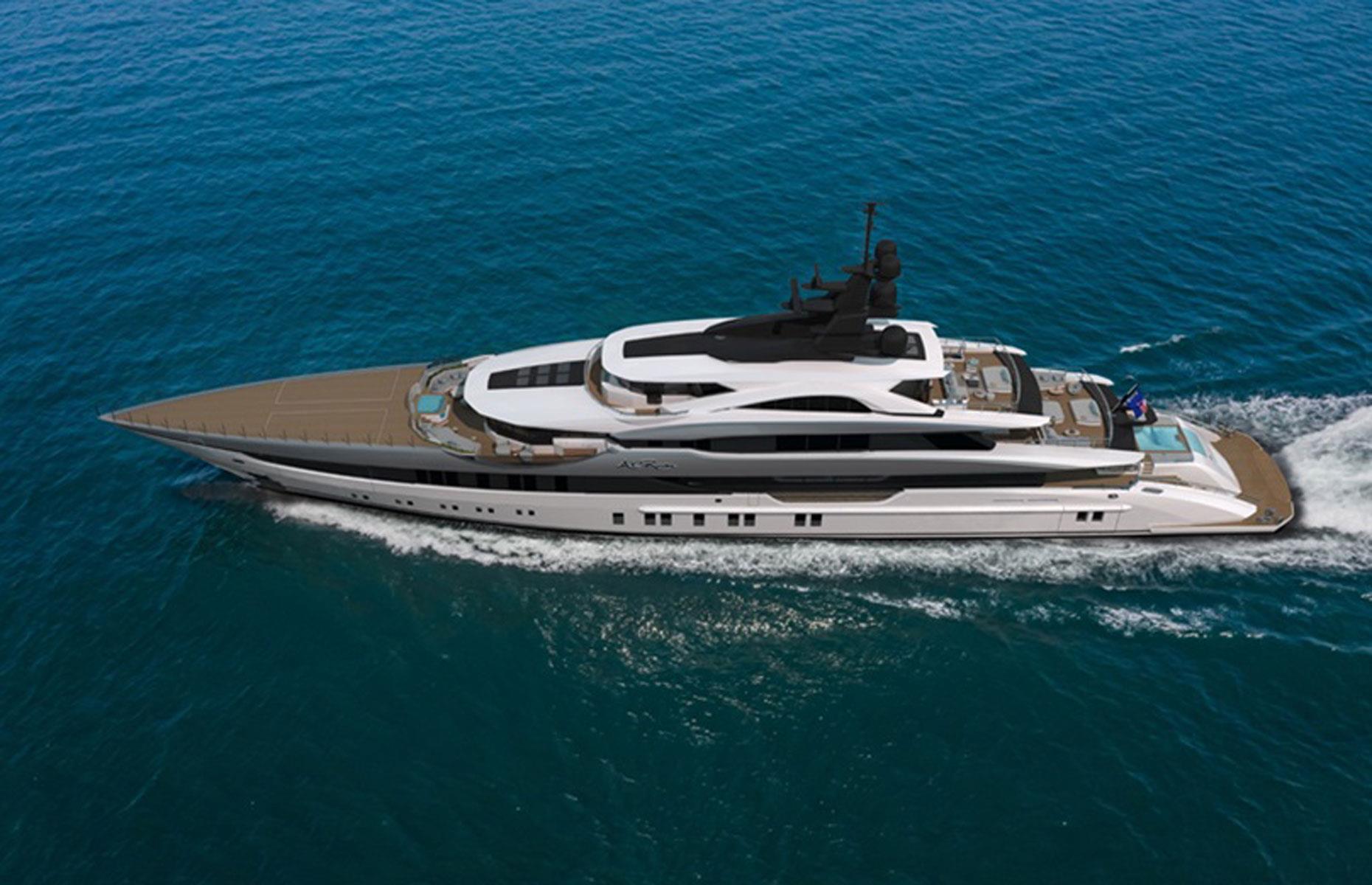
Silent by name, silent by nature: the superyacht was sold to a mystery owner in 2022 and the selling price hasn't been revealed. But it won't have come cheap, that's for sure.
Dreamed up by London's H2 Yacht Design, the modern interiors of the boat whisper quiet luxury. The eight suites (including three VIP cabins) can collectively accommodate up to 12 guests, and there's space for 18 crew members. Al Reem's amenities are top-notch too, with the beach club, gym, and cinema just some of the standout features.
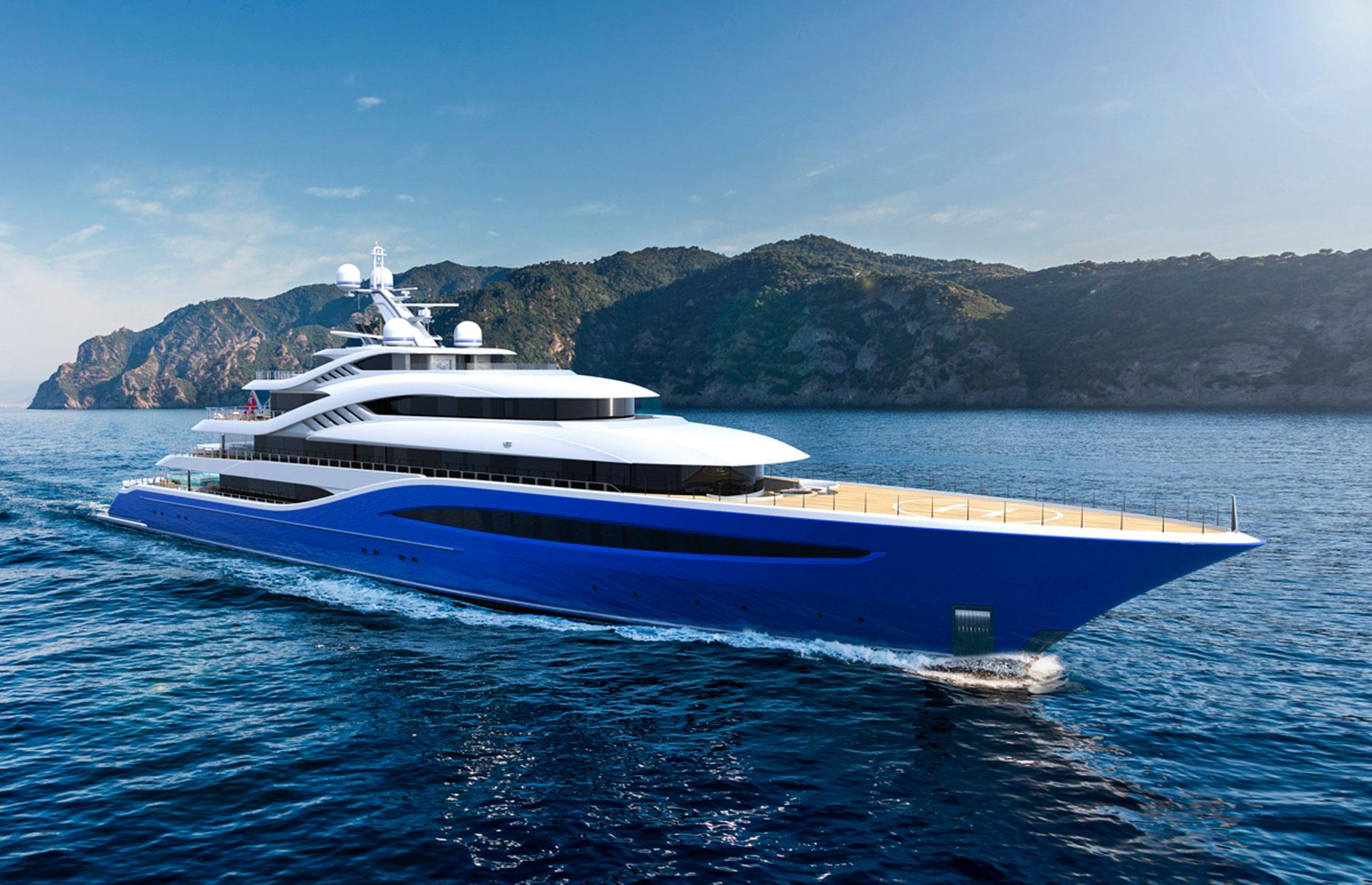
Project Vento: Cost unknown
Just weeks after Project Toro was sold in 2021, Turquoise Yachts found a buyer for Project Vento . As is the case with Project Toro , the identity of the owner and the price tag have not been divulged.
At 285 feet (87m) long, Project Vento is the largest superyacht ever built by Turquoise, with the company teaming up with long-time collaborator London's H2 Yacht Design to work on the boat's aesthetics. The result? A distinctive two-tone white and blue exterior with soft, flowing lines.
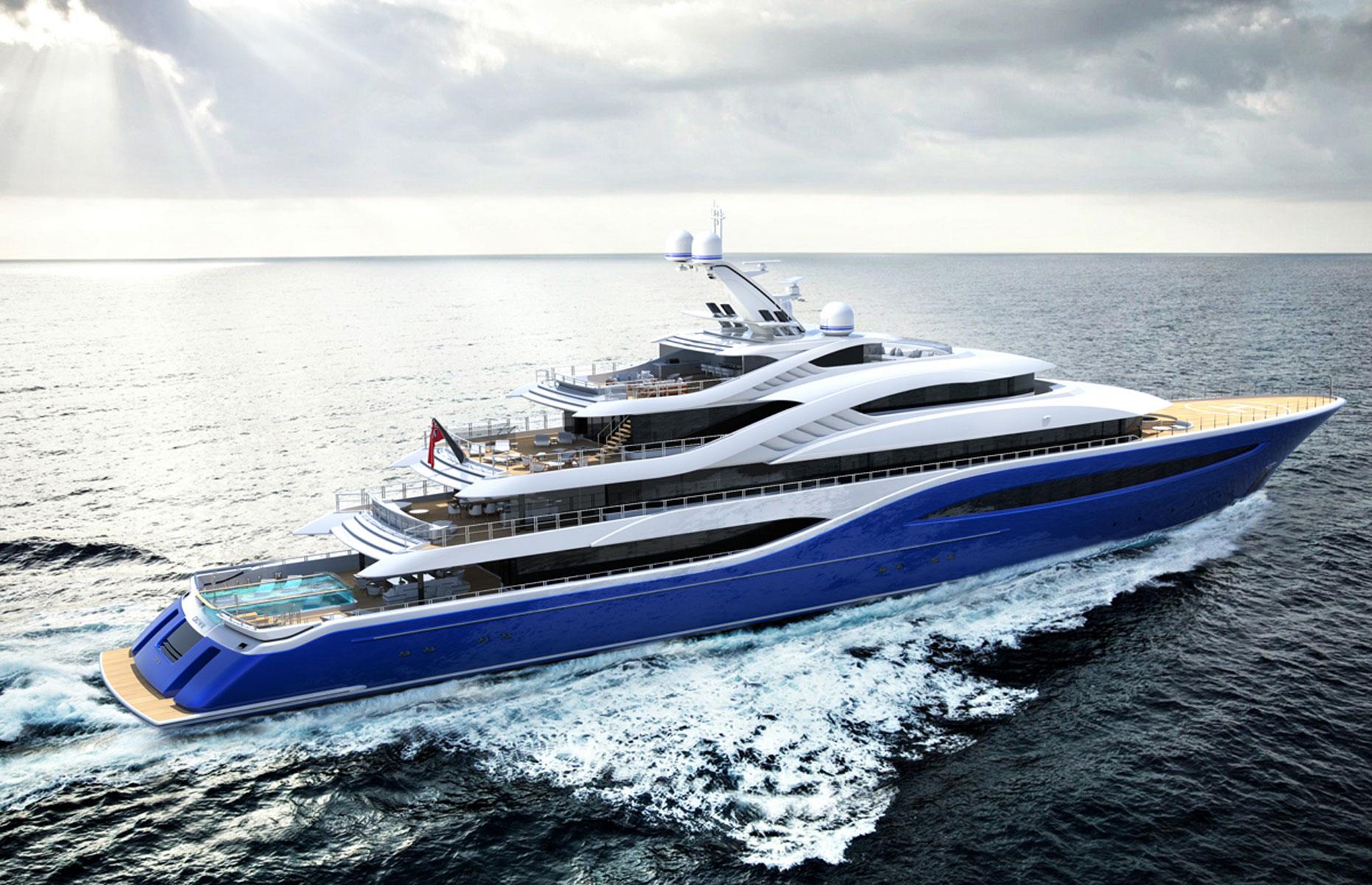
The interiors are just as eye-catching, with the superyacht boasting a wealth of features.
For the billionaire who has everything, there's a helipad that can also be used as an outdoor cinema and basketball court. But the pièce de résistance has to be the incredible 21-foot (6.5m) glass-sided swimming pool on the lowest deck.
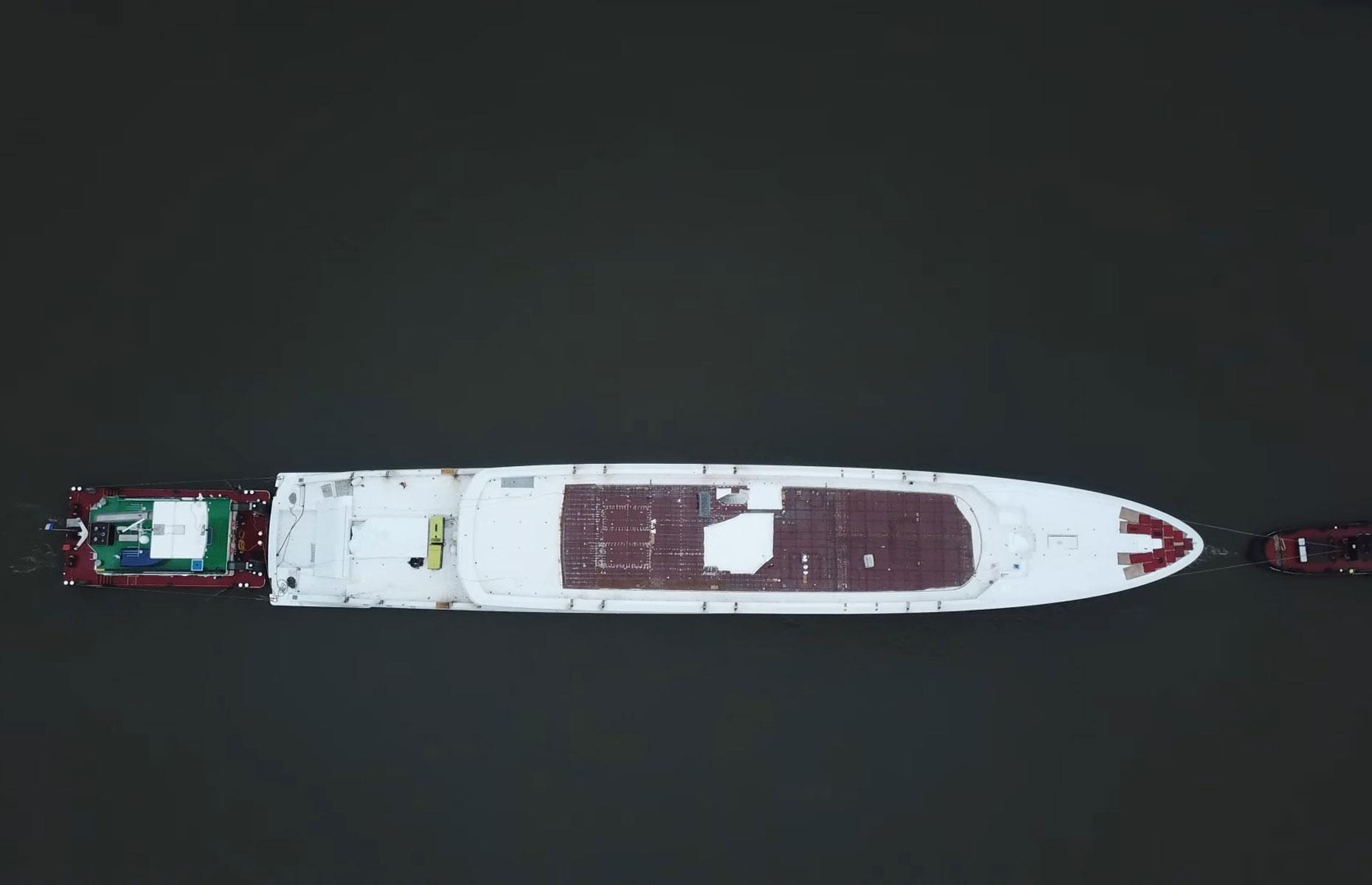
Project 1012: Cost unknown
With the venture cloaked in mystery, Feadship hasn't released any renders of Project 1012 and has yet to disclose information about the team behind it.
Based on images of the vessel undergoing trials in December 2022, Megayacht News has speculated that it could be traditional in design and may feature a beach club. However, these details won't be confirmed until the superyacht is delivered sometime this year – so watch this space...
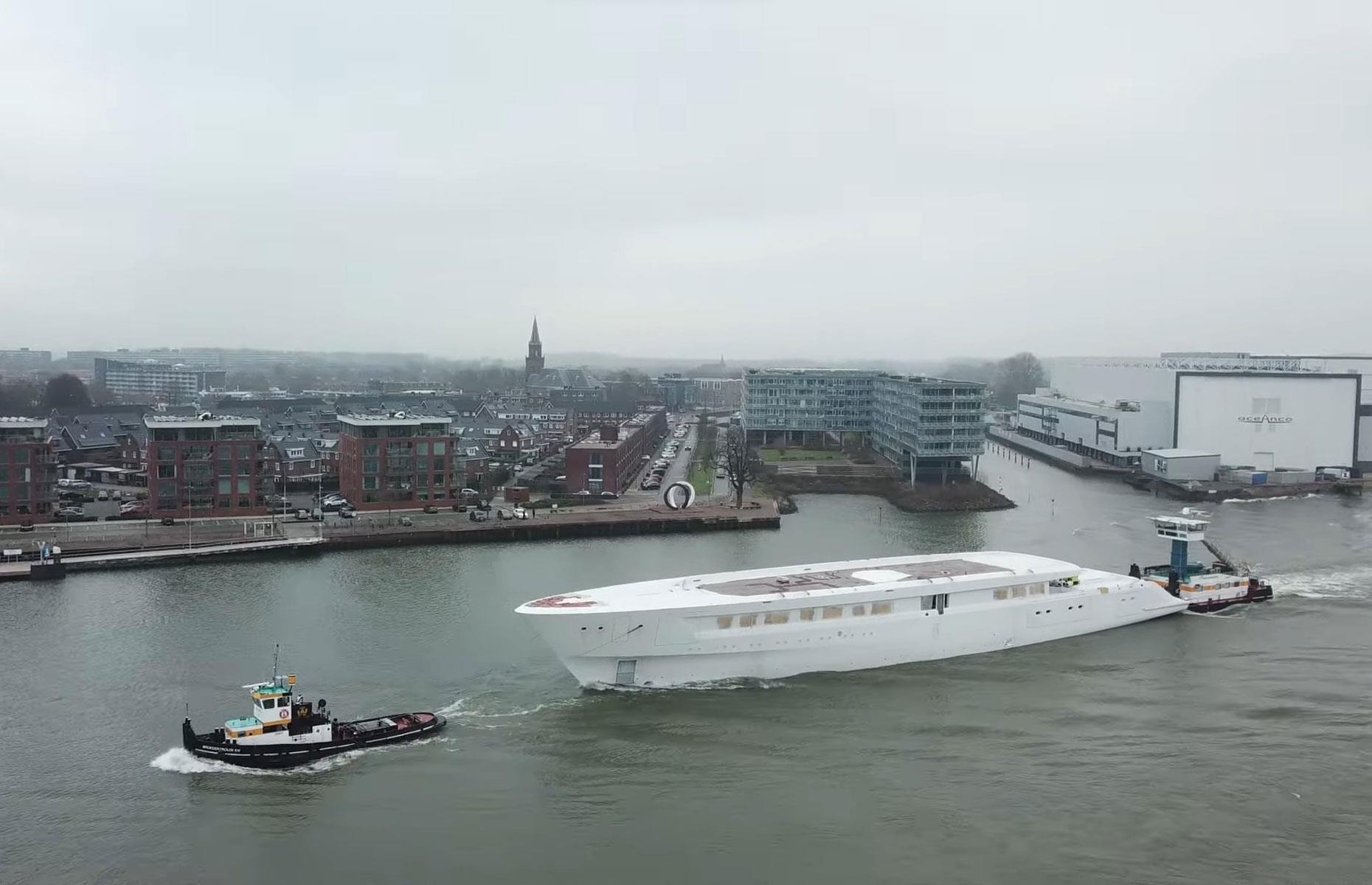
Project 1012 is another Feadship superyacht that's slated for delivery in 2024.
The shipyard is being particularly secretive about the vessel, with details extremely sketchy. While we know that the superyacht is 300 feet (91.5m) long, further information about the vessel is next to non-existent.
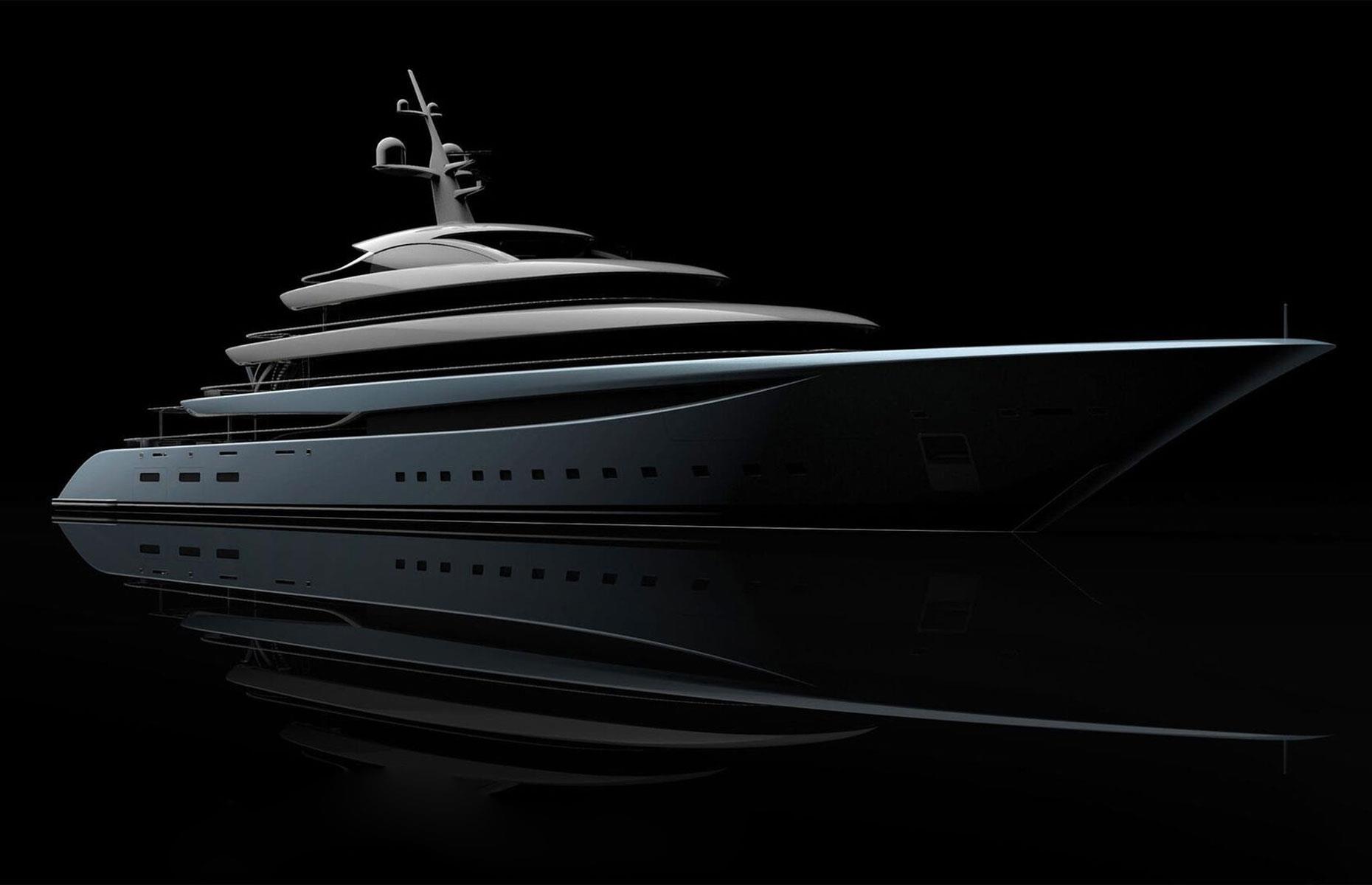
Project JASSJ: Cost unknown
Spanning 338 feet (103m), Project JASSJ is the third-largest of the show-stopping superyachts German shipbuilder Lürssen is delivering in 2024.
Sold in 2021 to an anonymous buyer for an undisclosed price, the superyacht features exterior and interior design by RWD Design. American firm Moran Yacht & Ship is overseeing the build.

Fantastically spacious, Project JASSJ can accommodate 22 guests in 11 staterooms.
Lürssen isn't holding back when it comes to amenities, promising an "industry-leading" beach club, as well as a swimming pool, deck Jacuzzi, top-end gym, and elevator, along with a state-of-the-art helipad and side-opening tender garage.

105 Explorer (NB-729): Cost unknown
Hot on the heels of delivering the 367-foot (112m) Renaissance (NB-724) , the largest ever yacht crafted in Spain (and shown here in all its glory), Freire's Galician shipyard is set to complete another whopper: 105 Explorer (NB-729) , which comes in at 344 feet (105m).
Renaissance has been described by Burgess Yachts as a "temple of leisure" and "sanctum of tranquillity". But 105 Explorer (NB-729) is more about adventure than relaxation...
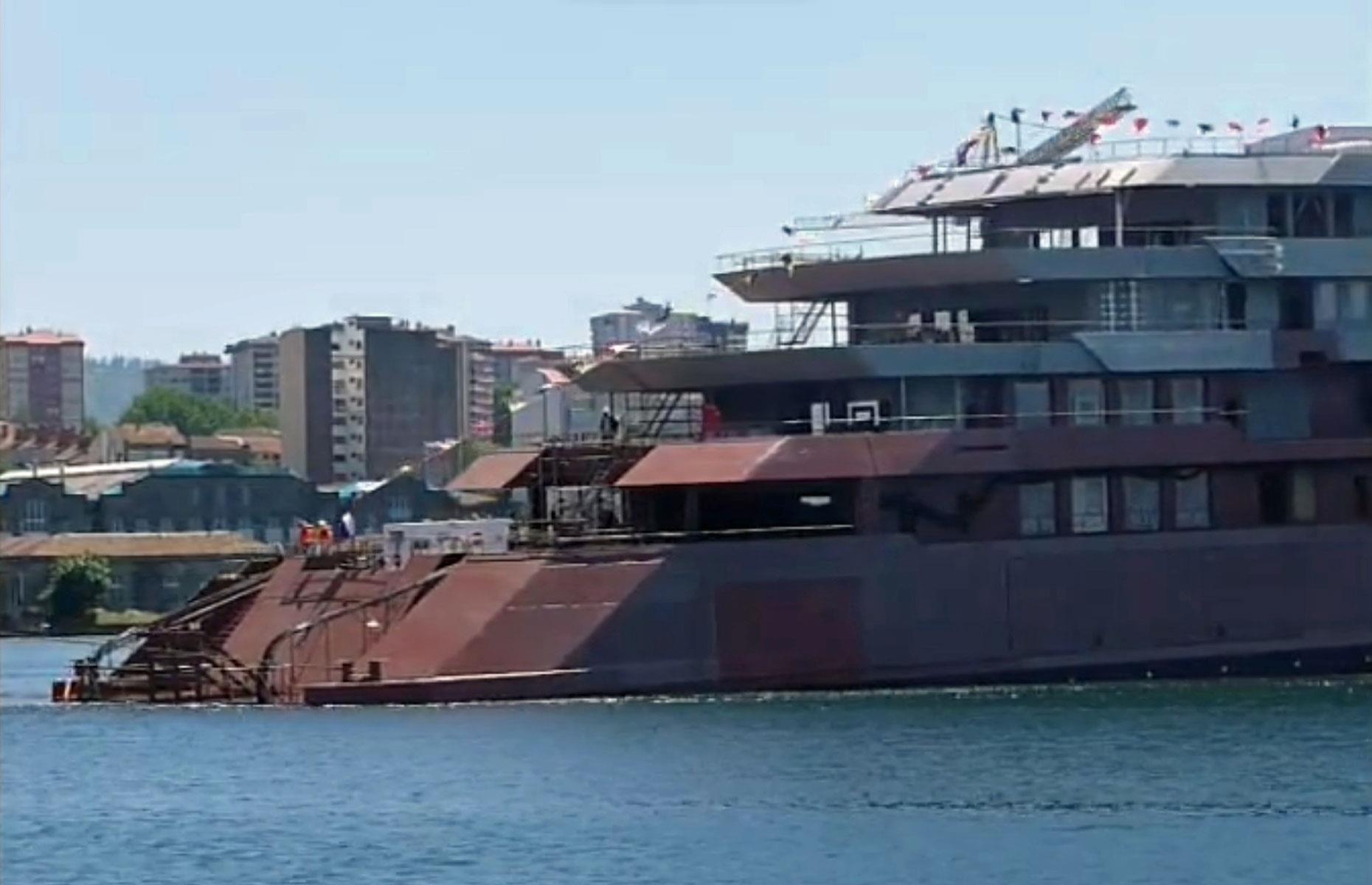
The superyacht may be kitted out with all the classic creature comforts but, as a roving expedition vessel, the emphasis is on performance rather than amenities.
Reflecting other high-end shipbuilders, Freire has chosen to keep the price of the superyacht a secret in the interest of client confidentiality.
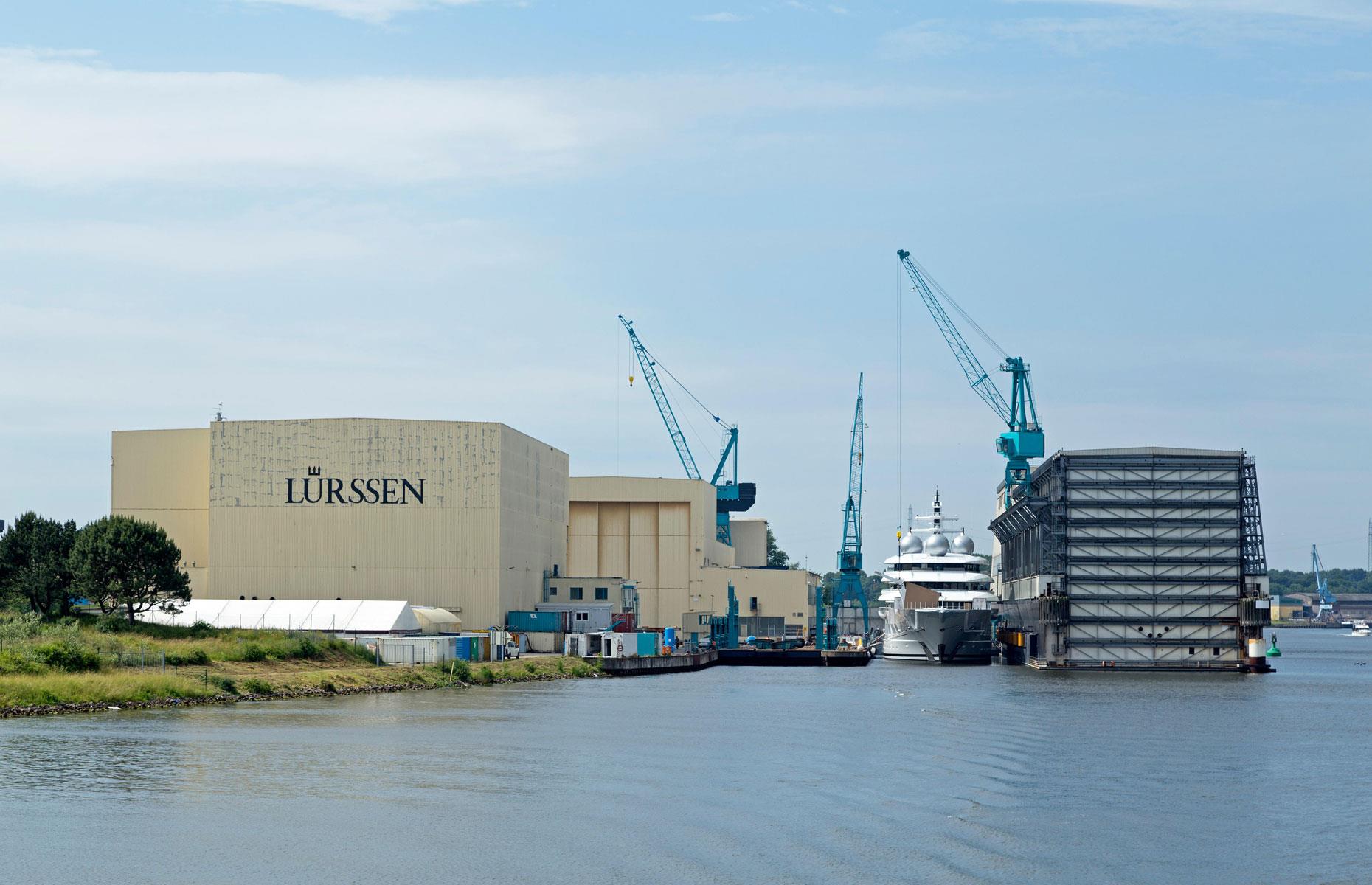
Ace 21: Cost $150 million (£118m)
Ace 21 is one of four show-stopping superyachts that Germany's Lürssen is delivering this year.
Extending over 256 feet (78m) end to end, the glamorous vessel spans five decks – the superyachts we've covered so far have just four – and has been designed to provide five-star relaxation in the world's most idyllic locations. It can accommodate up to 14 guests and a crew of 24.
Lürssen, which has taken care of the naval architecture, has reportedly designed the superyacht so it can cruise closer to shorelines and dock alongside paradise-style beaches and coves.
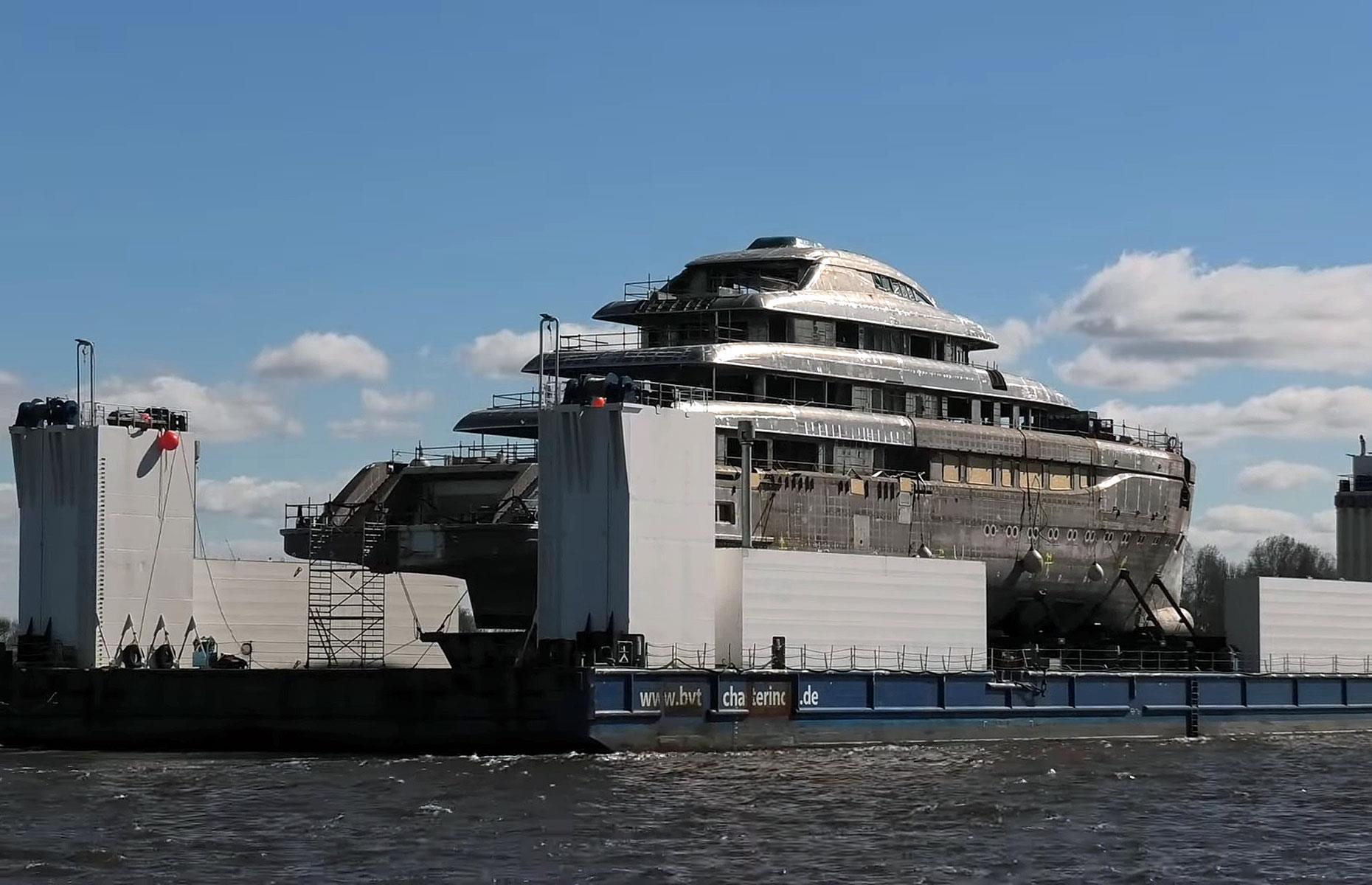
Ace 21 is all about relaxation – and its designated wellness zone, complete with an extensive spa, beach club, and deck Jacuzzi, combine to make it the perfect place to kick back, millionaire style.
SuperYachtFan reports the vessel was ordered by an unnamed individual who's said to be a prominent figure in the yachting world. The site pegs Ace 21 's price tag at $150 million (£118m) and estimates annual running costs could stretch as high as $15 million (£12m).
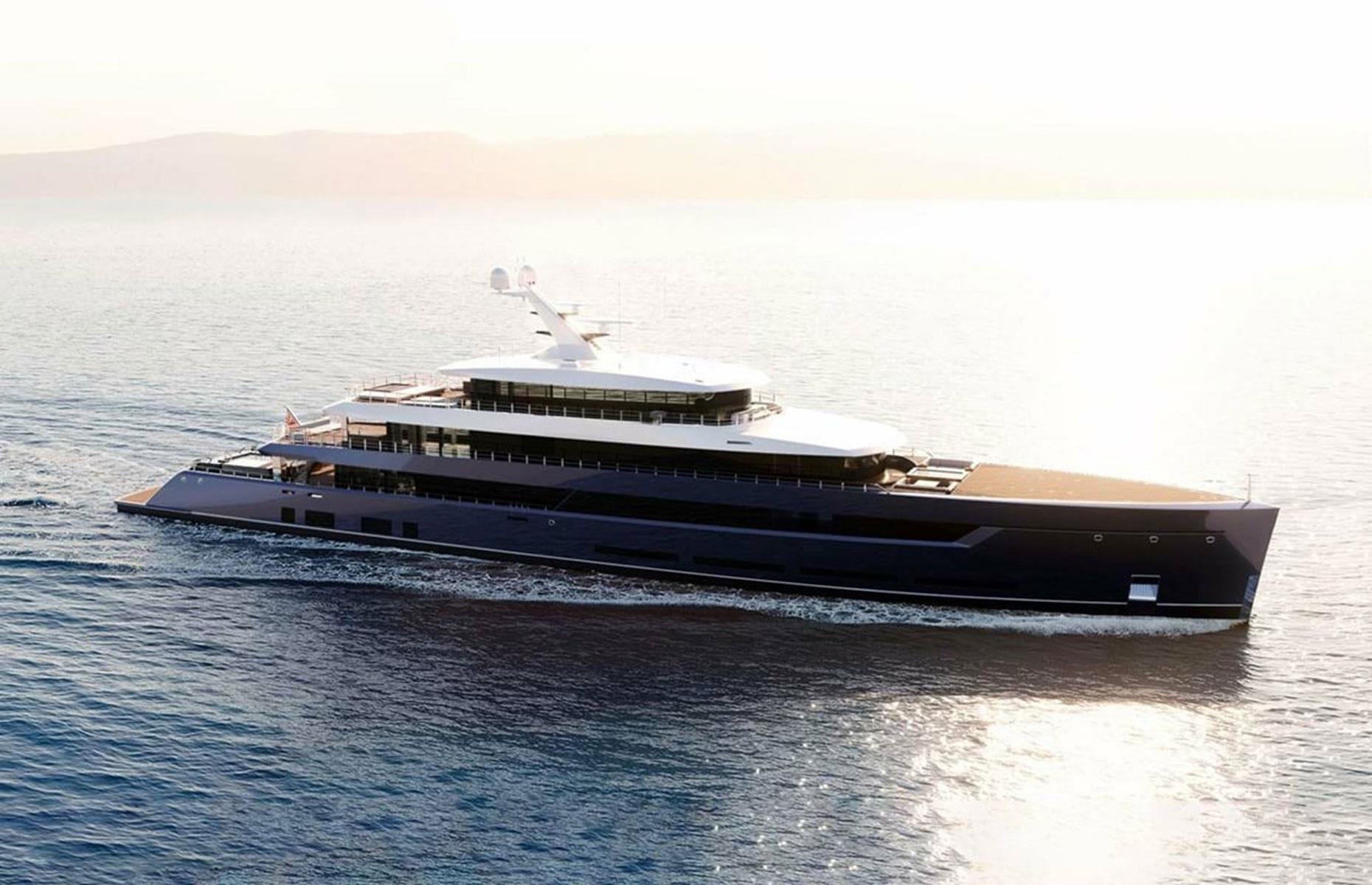
Project 825: Cost $186 million (£146m)
On the other hand, the asking price for Feadship's Project 825 has been revealed.
Due for delivery later in the year, the 249-foot (76m) superyacht is currently available for $186 million (£146m) via Burgess Yachts.
Newly-built vessels of this size and calibre are usually custom orders, so it's rare for one to come on the market. The yacht is likely to be snapped up by a member of the super-rich elite who doesn't have the patience to wait years for a bespoke job .
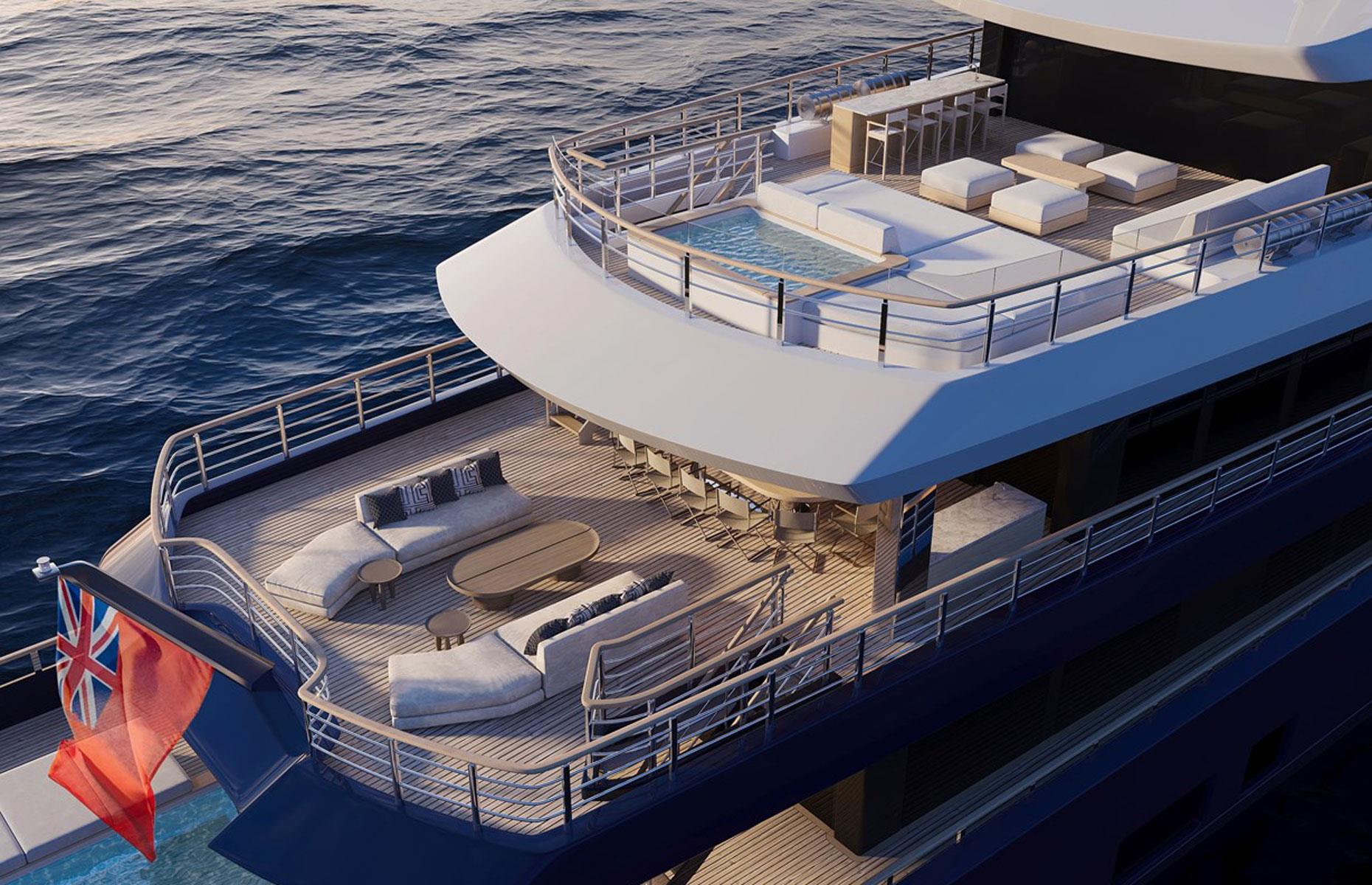
The turnkey superyacht, which is getting its finishing touches at the Feadship Royal Van Lent shipyard in the Netherlands, has a slick two-tone exterior by Feadship's De Voogt Naval Architects. Its chic interiors are courtesy of Parisian design house Gilles & Boissier.
Project 825 has six staterooms with space for 12 guests, who'll have their every whim catered to by 17 crew members. Among its key selling points are an awesome glass-bottomed swimming pool and a private VIP terrace that boasts its own Jacuzzi.
There's also a sauna, deck gym, games room, and touch-and-go helipad, as well as an elevator.
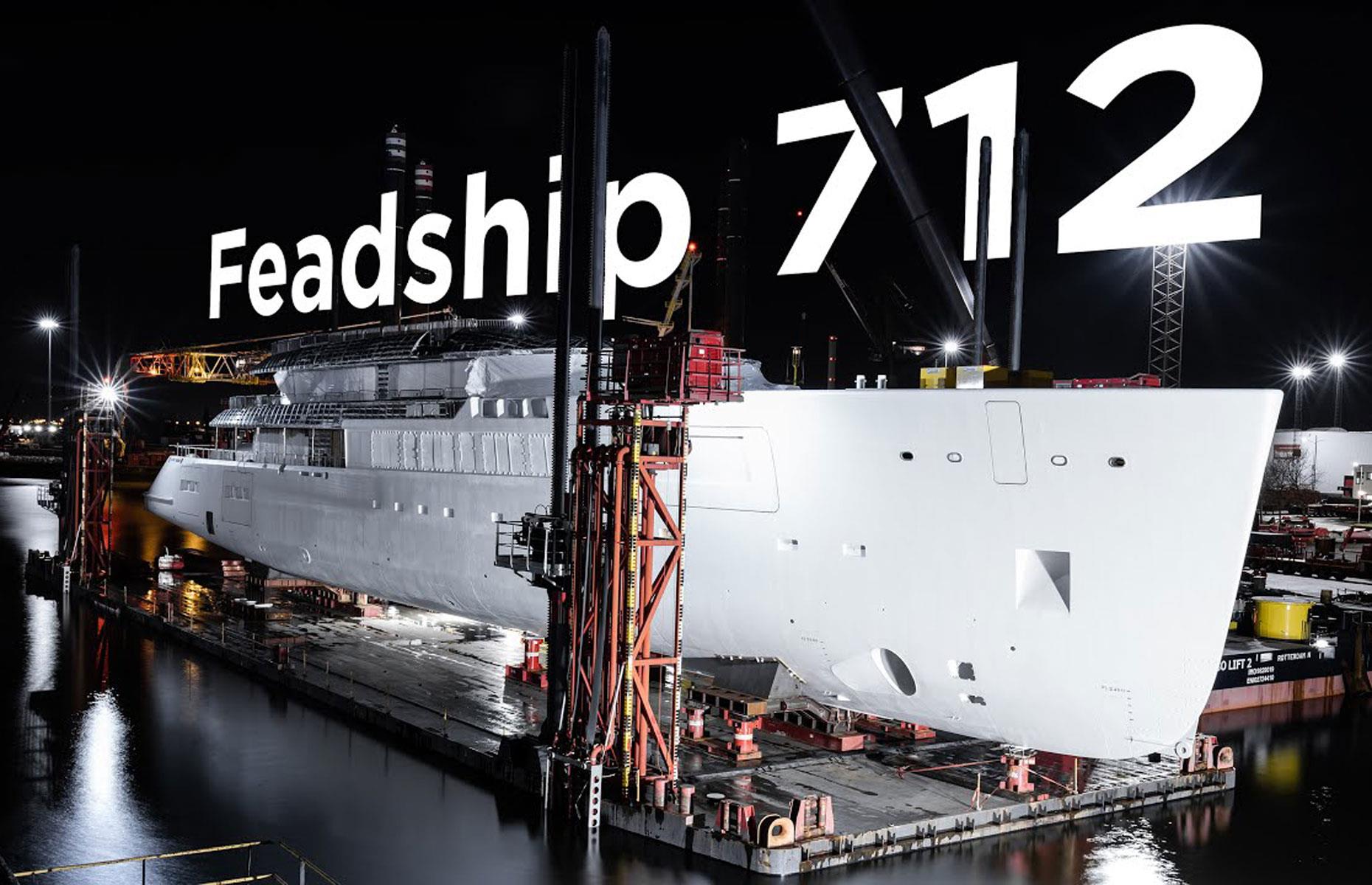
Project 712: Cost $200 million+ (£157m+)
Feadship is practically churning out superyachts at the moment, with multiple deliveries scheduled this year. Project 712 is among them.
The 272-foot (83m) vessel features an exterior design by Feadship's De Voogt Naval Architects. Unlike the aforementioned Project 825 , however, the interiors are the work of top Dutch firm Sinot Yacht Architecture & Design, not French studio Gilles & Boissier.
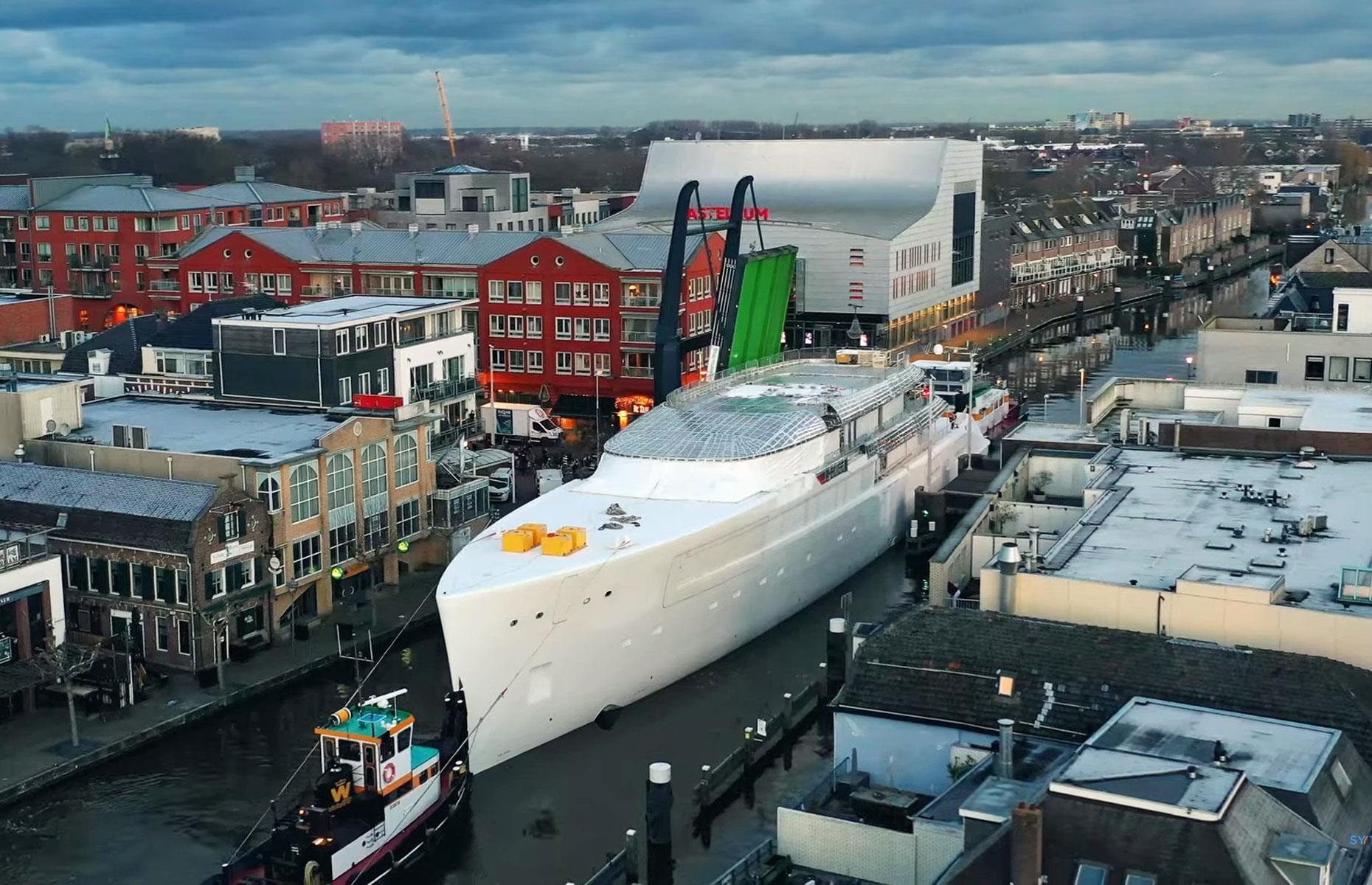
Because Feadship is selling Project 825 , the price has been revealed – but Project 712 's cost is being kept firmly under wraps. Given its larger dimensions, it's likely to be even more expensive than its sister vessel.
The superyacht has space for up to 10 guests across its five cabins, according to YachtCharterFleet, and comes equipped with a wealth of billionaire-worthy amenities, including a beach club, a gym, and a deck Jacuzzi.

Project 821: Cost $200 million+ (£157m+)
The biggest Feadship superyacht launching this year – not to mention the largest the Dutch company has ever built – is Project 821 , which spans 390 feet (119m).
Feadship is being as secretive about this superyacht as it is with Project 1012 , with very few details known about it.
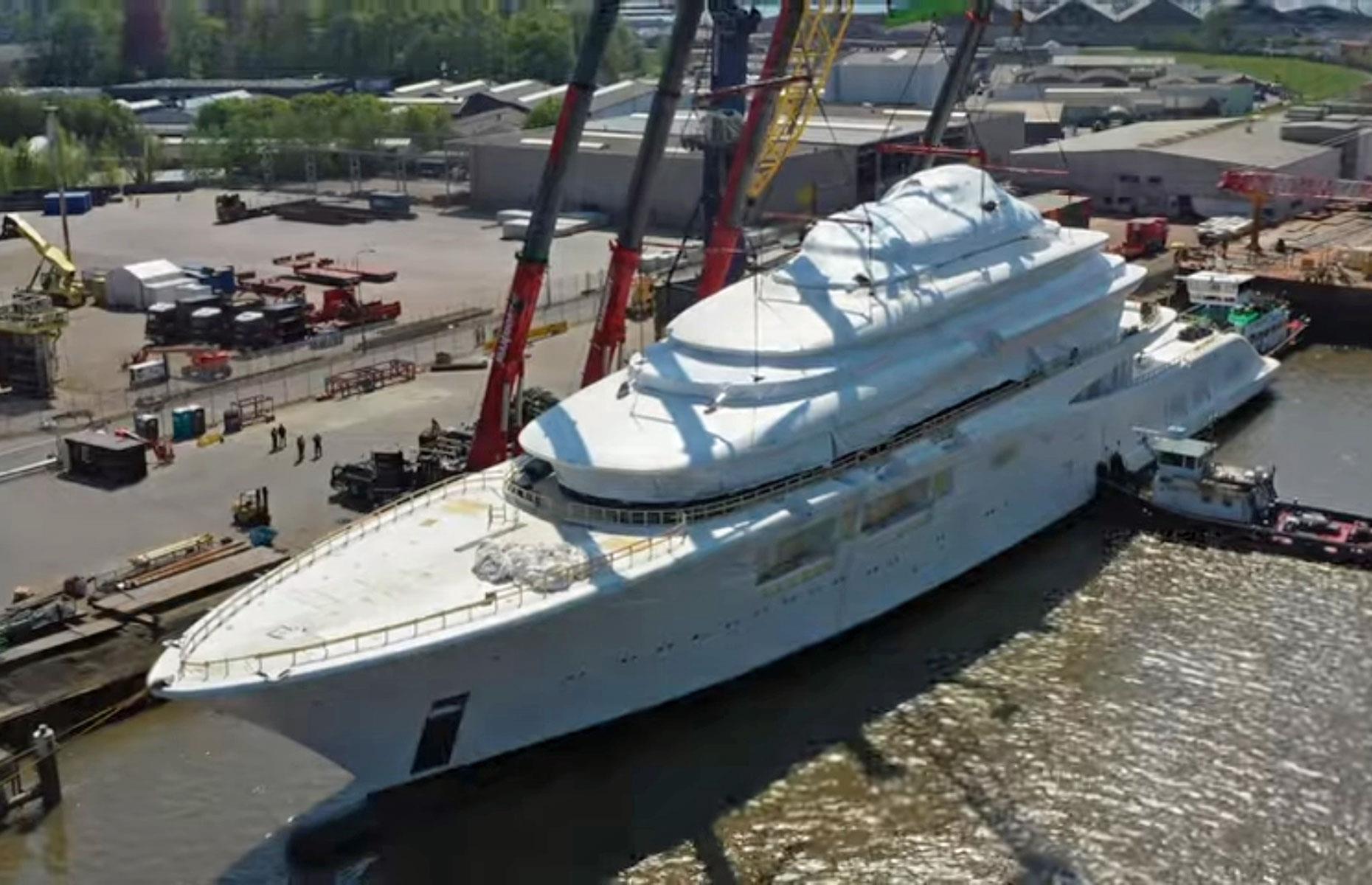
The exterior design is characterised by soft lines, and there's a capacious beach club to the rear of the superyacht that leads down to a swimming platform... And that's all we know.
Both the buyer and the price of Project 821 are being kept hush-hush, though the superyacht is likely to have cost considerably more than the smaller Project 825 , which is on the market for $186 million (£146m).
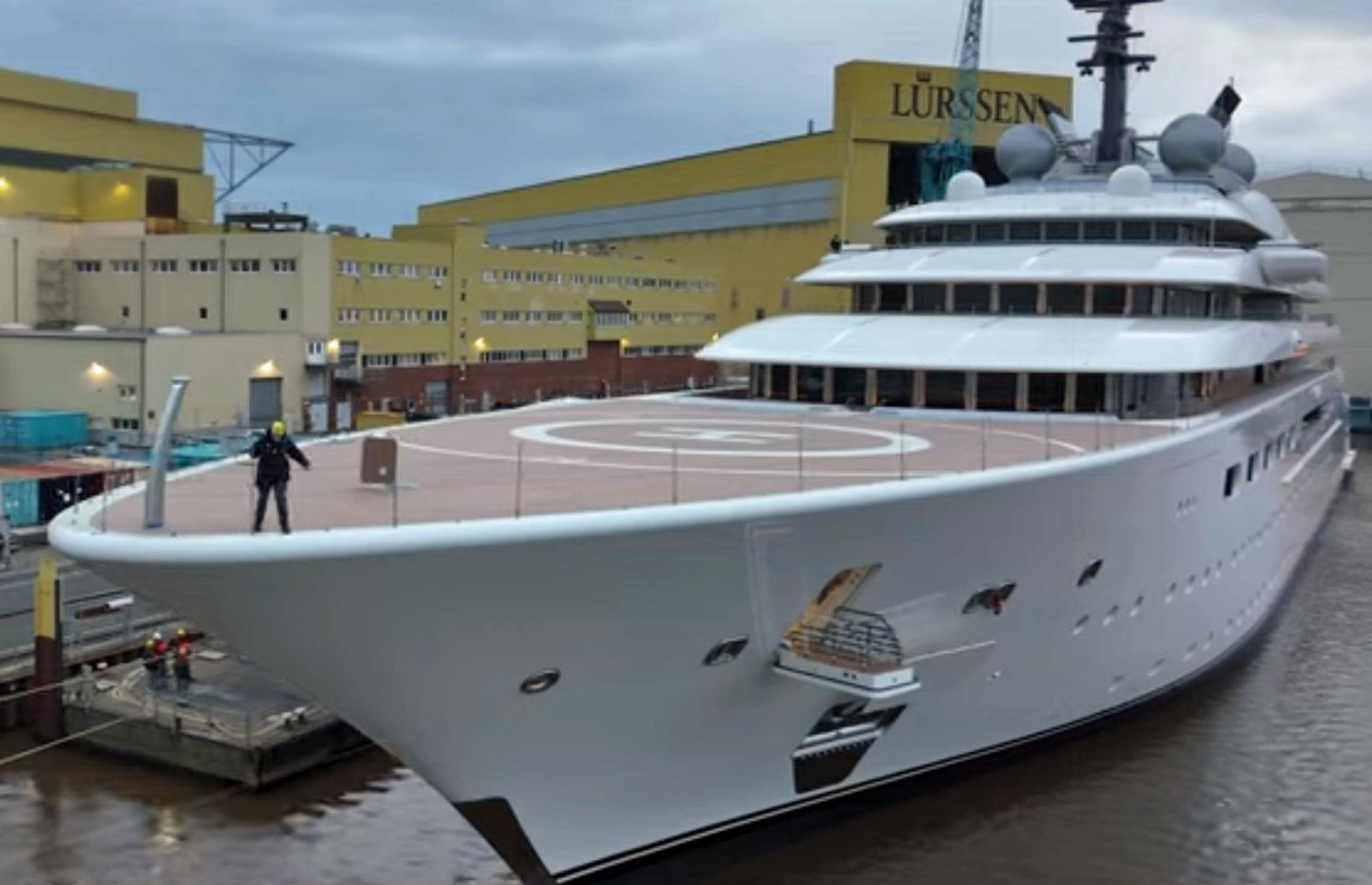
Project Deep Blue: Cost $450 million (£354m)
The second-biggest of Lürssen's four superyachts expected to launch this year, Project Deep Blue may not be delivered to its owner until 2025, according to several expert forecasts.
Details about the project are scant. Even the final length of the superyacht is uncertain, but it's believed to measure at least 427 feet (130m).

No doubt the owner is delighted with the sophisticated exterior design, which bears similarities to Lürssen's Ahpo (now named Lady Jorgia).
SuperYachtFan reports Project Deep Blue is expected to accommodate 24 guests and a crew of 45. It estimates the vessel would cost a staggering $450 million (£353m), with punishing yearly running costs of $45 million (£35m). The website has vaguely identified the owner as an Indian or Chinese billionaire.
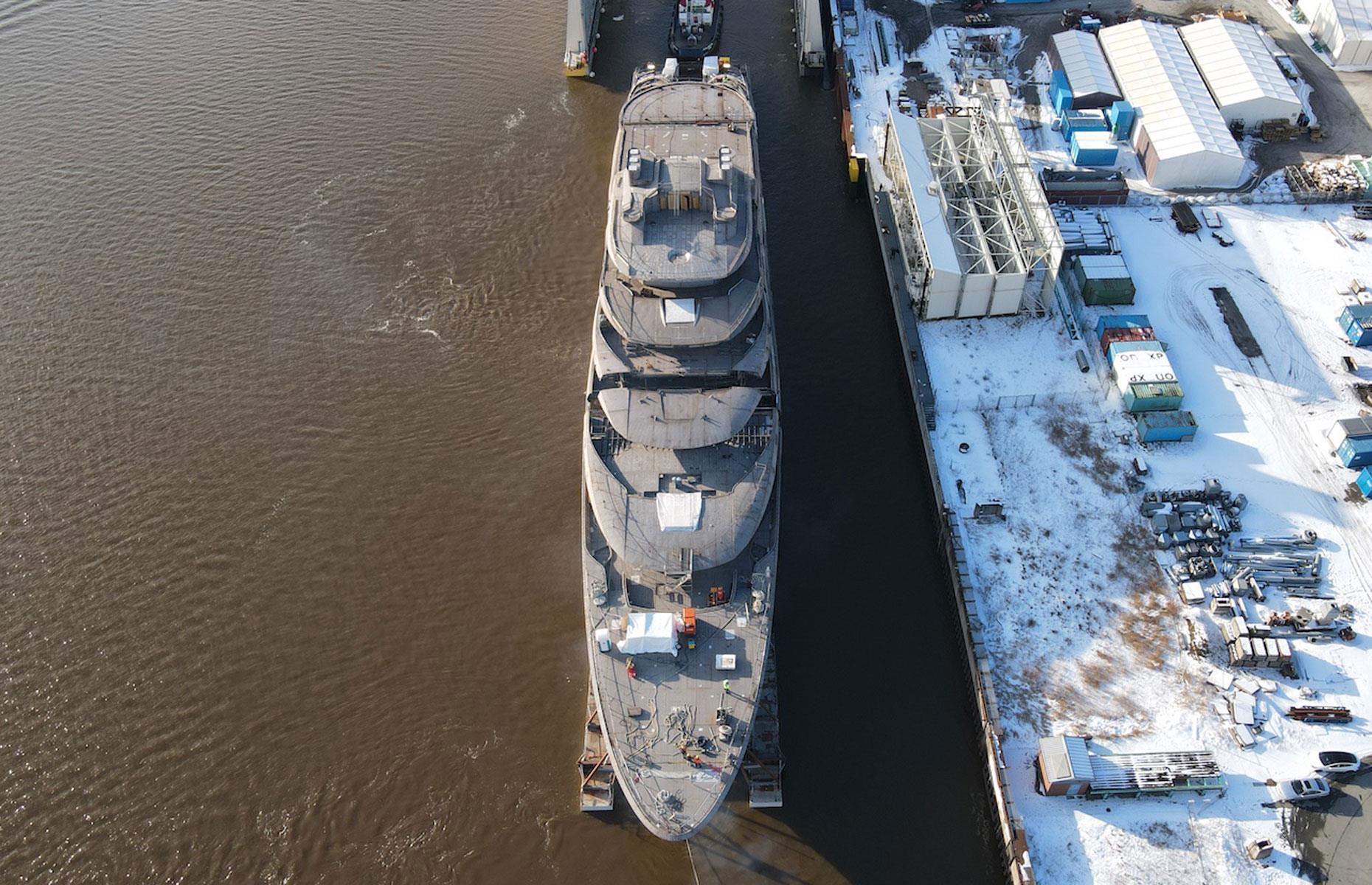
Project Luminance: Cost $500 million (£392m)
The biggest of Lürssen's four show-stopping superyachts hitting the water in 2024, Project Luminance spans a whopping 475 feet (145m), making it almost as long as three Olympic-sized swimming pools.
The superyacht was originally slated for completion last year, but the delivery date has since been put back. A masterpiece of nautical design, Project Luminance wows thanks to its exterior by Monaco-based Espen Øino and equally elegant interiors by French studio Zuretti Interior Design.

Project Luminance is estimated to accommodate as many as 24 guests across 12 opulent staterooms. Amenities are fantastically lavish, with the vessel reportedly boasting two helipads and a massive swimming pool, which comes complete with an adjacent dip pool.
Reported to cost in excess of $500 million (£392m), Project Luminance was commissioned by Rinat Akhmetov, the richest person in Ukraine.
A report in The New York Times in 2022 suggested Akhmetov was considering selling the vessel in light of Russia's invasion of his home country. Still, it appears the billionaire might have decided to keep it for now. And who can blame him?

Somnio: Cost $600 million (£470m)
Putting this year's other launches firmly in the shade, Somnio spans a colossal 728 feet (222m), making it the largest superyacht ever built.
The world's first "yacht-liner", this $600 million (£470m) floating palace for the mega-rich is billed as "the most exclusive address in the world" and will cruise the planet's iconic yachting destinations, from Monaco to French Polynesia.
Somnio features 39 luxe private residences and a wealth of "six-star" amenities, including an enormous resort-style swimming pool, premium spa, opulent cinema, gourmet restaurants, 10,000-bottle wine cellar, and a library.
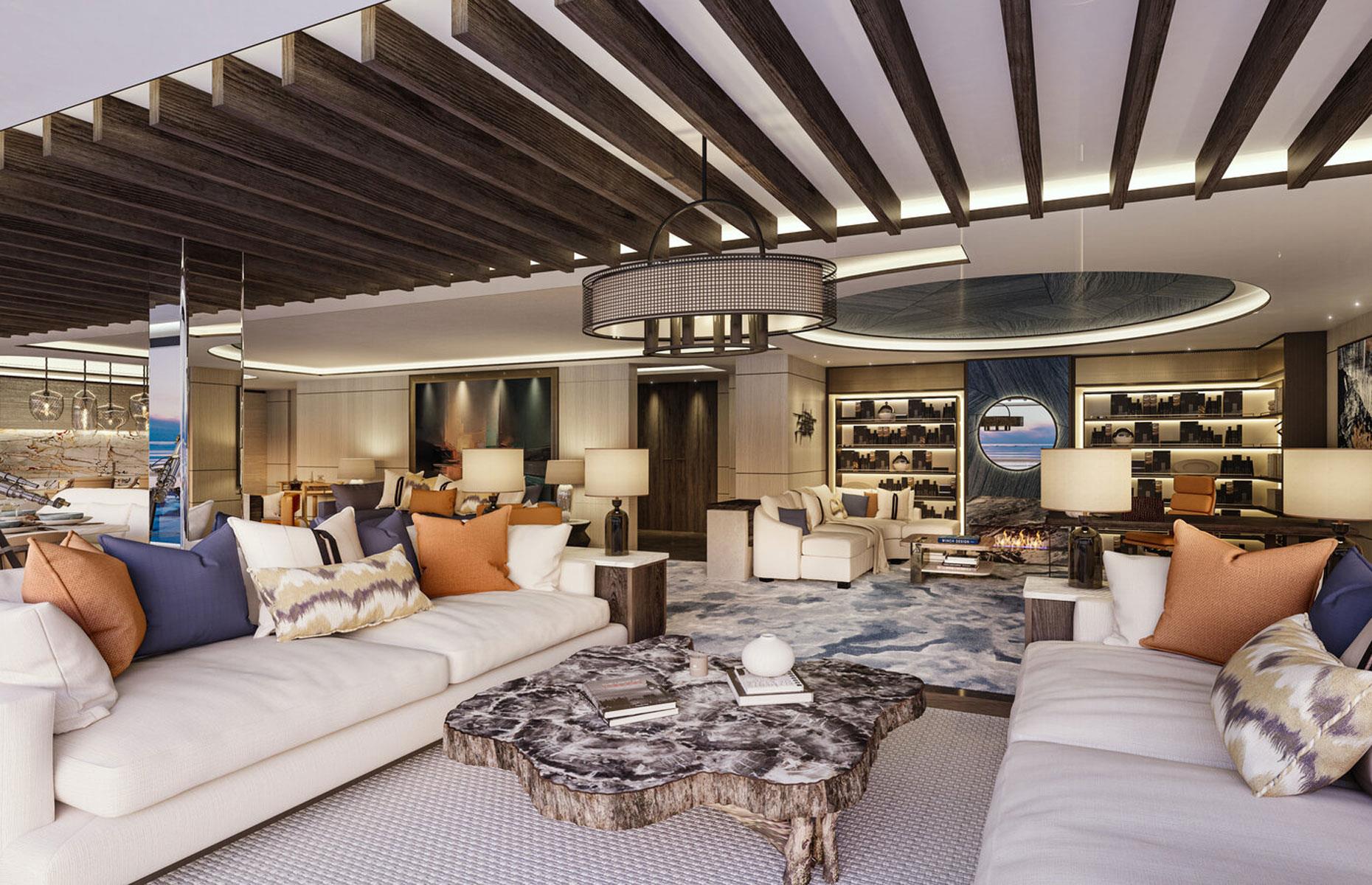
Nearing completion at Norway's Vard shipyard, the six-deck nautical extravaganza is a collaboration between Somnio, Fincantieri, and Vard, while Tillberg Design of Sweden and the UK's Winch Design have looked after the interior design.
The potential occupants of the 39 apartments are being carefully hand-picked. On offer are units with two to four bedrooms, with the option to fully customise them with the likes of a gym, personal kitchen, library, and more.
Those lucky enough to get a Somnio invite can expect to pay from $22 million (£17m) to secure a cabin in the elite vessel, with service charges likely to be sky-high too.
Liked this? Click on the Follow button above for more great stories from loveEXPLORING
More for You
Family of nine left stranded in remote Alaska after cruise ship departed without them
9 Iconic Beauty Moments We’ll Never Forget
Inheritance tax raid would ‘trigger run on stock markets’, Labour warned
10 most ‘overrated’ tourist attractions in the world
Long-term immune changes persist in unvaccinated COVID-19 patients
All Blacks star Ardie Savea’s shock Super Rugby move confirmed in new deal
Simpsons writer responds to show’s Kamala Harris prediction
Will we ever know what split the Al Naslaa rock perfectly in two?
Households braced for £190 jump in energy bills
Eight inheritance tax traps that could cost your family a fortune
Classic American snack is finally coming to supermarkets in the UK
James Webb Telescope Detects a Structure that Should Not Exist
'I upgraded my walks with a weighted vest for a week - here's what happened'
Greatest supercars that never made it to production
The middle-class holiday destination that sells the cheapest beer in Europe
What business expenses can self-employed people write off against tax? HEATHER ROGERS explains
Listen: Strictly judge Craig Revel Horwood addresses complaints about professional dancers
8 foods you should never eat at a hotel breakfast
Carpetright brand and 54 stores bought by rival, saving 300 jobs
Micro shorts are every runner's must-wear RN - 6 top picks you'll wear on repeat

IMAGES
VIDEO
COMMENTS
The future of hybrid sailing. In the near future, Torqeedo is planning a new range-extending DC generator specifically for hybrid sailing boats. Its existing unit is built by WhisperPower and ...
We are the proud winner of the NMMA Innovation Awards designated by Discover Boating® Miami International Boat Show®, NMMA and BWI. Check it out + Come visit our booth. and check out how you can electrify your vessel! SEPT 10-15. STAND PALAIS-116. OCT 30-NOV 3. 2024. FEB 12-16. ... Our hybrid yacht propulsion system is maintenance free. Only ...
A Modern Bluewater Cruiser. Nautor Swan, recognized worldwide for its high-performance sailing yachts, has launched its first hybrid electric model, developed in partnership with Torqeedo from the Boatbuilding Technology Centre, the House of Swan, in Pietarsaari, Finland. The Swan 88 is part of the Swan Maxi yacht fleet.
The Sailing Yacht Masters at Nautor Swan Just Launched Their First Hybrid Nautor Group CEO Giovanni Pomati says a second unit will hit the seas in a few days. Published on April 23, 2024
With a full load of seven marine journalists and a 5-10 knot breeze, we were able to get the Swift Trawler 34 Hybrid up to 4.7 knots at 1908 rpm under electric power, with a draw of approximately 115 amps. Backed down to 3.6 knots at 1500 rpm, the draw went down to an extremely efficient 55 amps, which should provide a theoretical range of ...
Hybrid propulsion technology is applicable on both sail and motor yachts and is optimized to suit the vessel in question to deliver the best and most efficient results. The Details. Traditionally yachts are powered by a combustion engine that is powered by fuel. By contrast, a fully electric propulsion system makes use of a battery-powered motor.
Southern Wind's new sailing yacht is a breath of fresh air. The 108-footer, known simply as the SW108, sports a pioneering hybrid-propulsion system and a range of high-tech features that can be ...
On top of that, Juno's advanced hybrid-propulsion system includes propellers that actually generate electricity while the vessel's sailing. Juno sports a 26-foot pool aft. Dixon Yacht Design
The new SW108 HYBRID is the first in the new era of "Smart Custom" sailing yachts: the ultimate balance between customization, innovation, reliability, sustainability and efficiency. Penned by Nauta Design and Farr Yacht Design, the SW108 is a new project that enriches our offering of high performance sailing yachts.
Construction on the 35.5-metre sailing yacht began in 2021, with Gelliceaux being the first model conceived and engineered from the outset as a diesel-electric hybrid. She is inspired by the recent design loop and BAE HybriGen propulsion system of the shipyard's SW96 model, Nyumba, and with this technology could "virtually extend her range indefinitely", according to Southern Wind.
Hunter H-36 "Hybrid" powered by Elco. Warren Luhrs, Founder of Hunter Marine and a world class sailor says, "The Elco E Power hybrid system is a game changer. Sailboat propulsion has changed forever.". Hunter and Elco developed the boat as part of a shared commitment to green technology solutions and innovation that improves the overall ...
Builder: Oceanco Year of build: 2018 LOA: 350ft Number of guests: 12 Number of crew: unknown Oceanco's Black Pearl is the world's largest sailing yacht (Sailing Yacht A below is larger but is a sail-assisted yacht) and is estimated to have cost in excess of $200m. The distinct vessel has achieved worldwide fame in the yachting world thanks to her innovative design and eco-credentials which ...
Rossinavi's M/Y Seawolf X hybrid-electric power catamaran is able to cruise in full-electric mode for 100 percent of the time on day trips, ranging to 80 percent of the time when making transatlantic voyages. Courtesy Rossinavi. Italian yacht builder Rossinavi announced the launch of the M/Y Seawolf X, a hybrid-electric power catamaran capable of cruising in full electric mode for 100 ...
Luxury meets sustainability: the Deep Blue Hybrid is the first fully integrated system on the market that combines a hybrid boat drive system with the entire on-board energy management system. Relaxation: no noise from the motor and only a little noise from the generator ... • Sailing yachts, ferries, water taxis, etc., with hull lengths from ...
How hybrid sailing yachts are slowly becoming a reality. Every sailor is familiar with the harsh cough of a diesel engine and the acrid smell of its exhaust. For some it is a sign that the adventure is beginning, for others it is a reassurance that everything is in order on board. A traditional engine is arguably the most important safety ...
In collaboration with STOK Electric, the sailing yacht at Hutting Yachts in Makkum will be converted to a hybrid propulsion system. STOK Electric is a company that develops hybrid systems for sailing yachts between 50ft and 80ft. Behind STOK Electric are two brothers, Antonie and Berend Stokman, driven by their shared passion for sailing and ...
A Swiss sailor and organic farmer has customised his Neel 51 to prove that boats can be completely self-sustaining. Sam Fortescue reports. Wolf chose a Neel 51 trimaran for speed and comfort ...
The Maverick 440 Hybrid is an electric motor sailing catamaran. The. electric motors are powered by lithium-ion phosphate. batteries. The batteries are charged through a number of sources, namely; solar power, wind generators (optional), hydro-regeneration while sailing, shore power, and diesel generator (s).
December 27, 2022. Hybrids offer anglers the best of both worlds, giving them the ability to chase fish both in- and offshore. They're also well-suited to sandbar duty. Courtesy Pathfinder. Anglers who want to fish big water one day and backwater bays the next will be served best by a hybrid bay boat. Hybrid bay boats run larger, from 24 to ...
The 91.8-metre Feadship superyacht Drizzle has now been delivered following successful sea trials in June. According to BOATPro, her final destination is Malta, an archipelago in the central Mediterranean.. The superyacht was last seen departing from the shipyard's facilities in Amsterdam (13 June). Built for a repeat Feadship owner who came to the project with "informed requests based on his ...
Most importantly, buy a boat based on your fishing needs. Here are 15 of the best hybrid bay boats that transition from inshore to offshore fishing. They're listed from the shortest to the longest LOA. Advertisement. Grady-White 251 Coastal Explorer. Scout 251 XSS.
The brand Alva Yachts produces hybrid yachts and power catamarans. There are 8 models currently in production ranging from 15 to 28 meters. The current model range includes 2 lines: Eco Power Yachts and Sailing Yachts. We invite you to explore all current and older models from Alva Yachts and contact us for sales and pricing information. Read ...
Make the most of your yachting experience with an mtu Hybrid PropulsionPack. Not only does hybrid power reduce on-board noise levels, emissions and vibrations, it also improves efficiency, dynamics and comfort. The components for onboard power and propulsion are modular and scalable. Each hybrid system can be individually designed to meet your ...
We are happy to help you. Together with Stok-electric, we offer completely custom-made solutions for converting sailing yachts into electric or hybrid sailing yachts. We have a suitable, custom-made solution for almost every sailing yacht: from 10kW to 200kW. Prepare your sailing yacht for the future by combining a refit with the installation ...
A skinny Veer V13 fishing boat with the 7.5e hit 10 mph. Quickly jamming the throttle delivers a satisfying, albeit brief, surge of acceleration, but running wide open kills range, and even the ...
More sustainable marine biofuels can help reduce the environmental impact of traditional dirty fuels, and even ferries running on sustainably produced hydrogen have seen success in commercial applications.. There are financial savings here as well. "To put it into perspective, the VS-9 is undergoing on-water testing with a petrol-powered chase boat following, doing the same motions and distance.
Check out this New 2024 Ascend H10 Hybrid Sit-In - Desert Storm for sale in Grenada, MS 38901. View this Canoe/Kayak and other undefined boats on boattrader.com
Admiral Yachts, owned by The Italian Sea Group, is delivering two sensational superyachts this year, according to Boat International: the 256-foot (78m) Custom 78 and 253-foot (77m) Blue Marlin ...